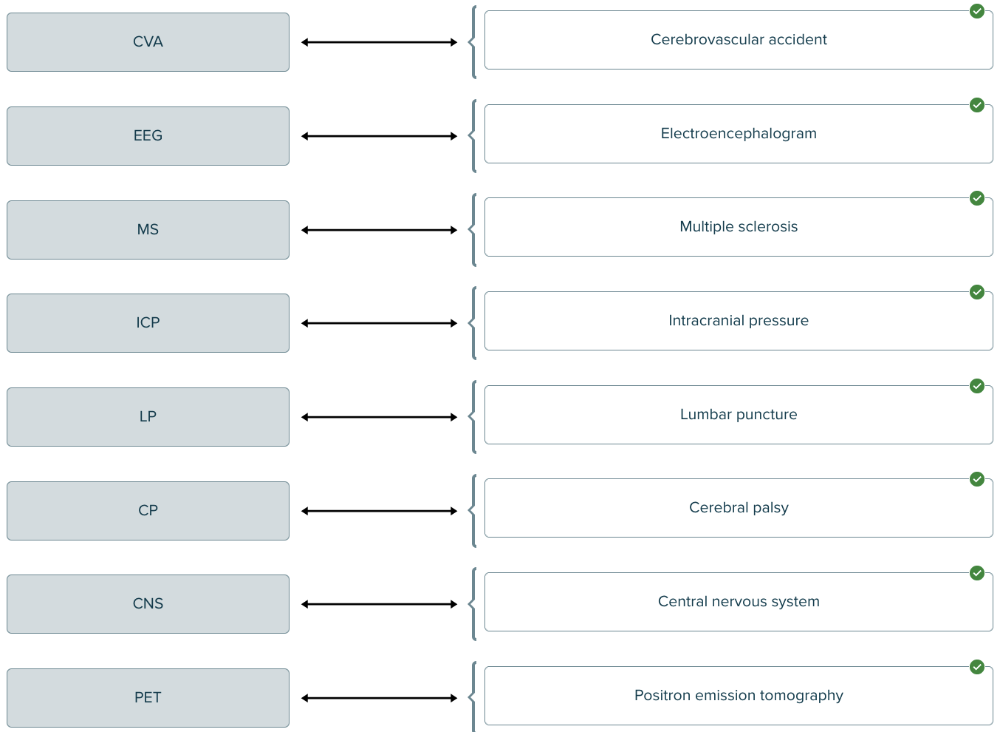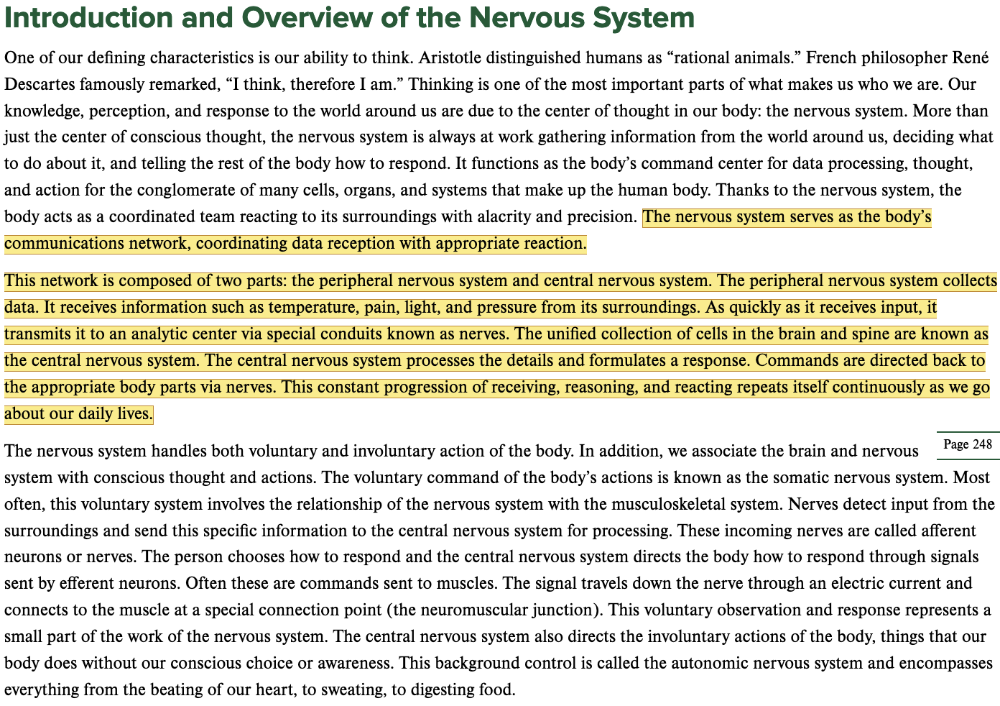
Chapter 5 Introduction and Overview of the Nervous System

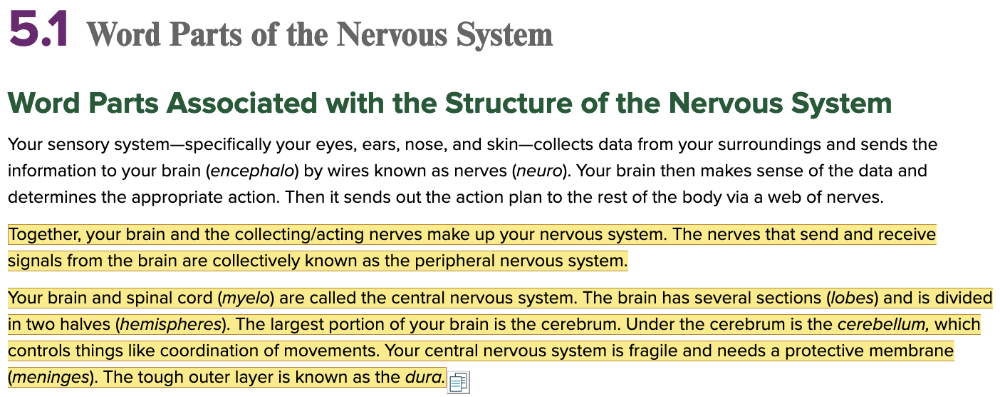
Chapter 5.1 Word Parts of the Nervous System
Word Parts Associated with the Structure of the Nervous System
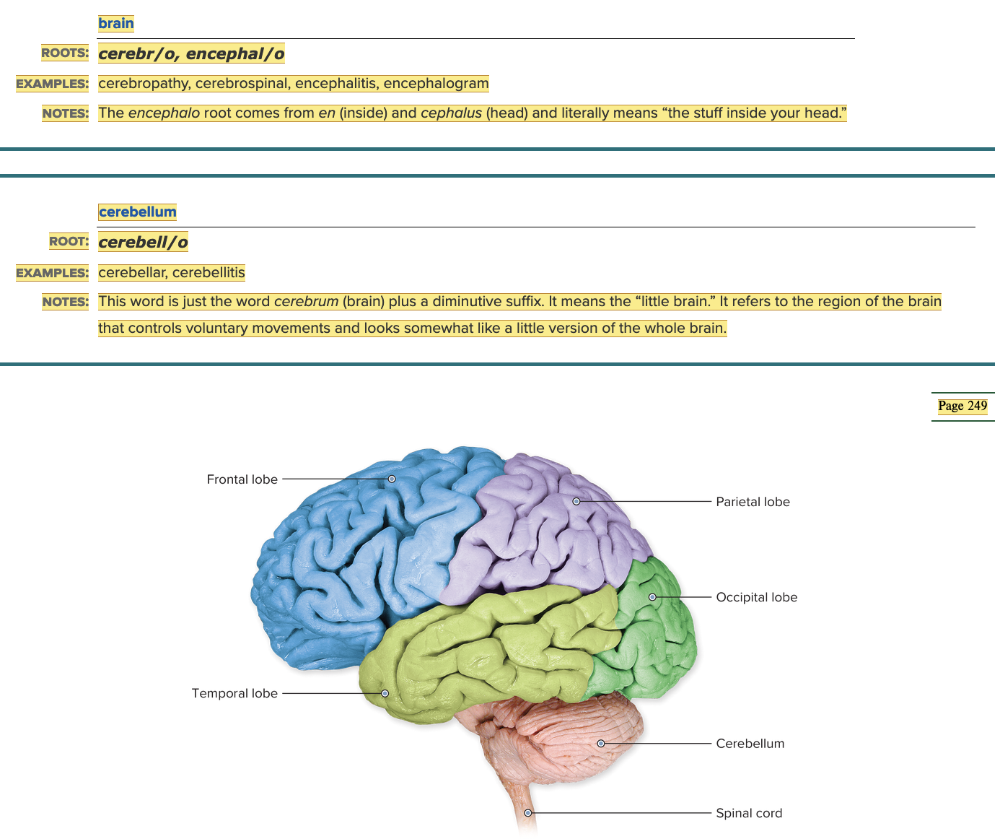
Chapter 5.1 Word Parts of the Nervous System
Word Parts Associated with the Structure of the Nervous System
- Parts of Nervous System: Root Examples Part 1
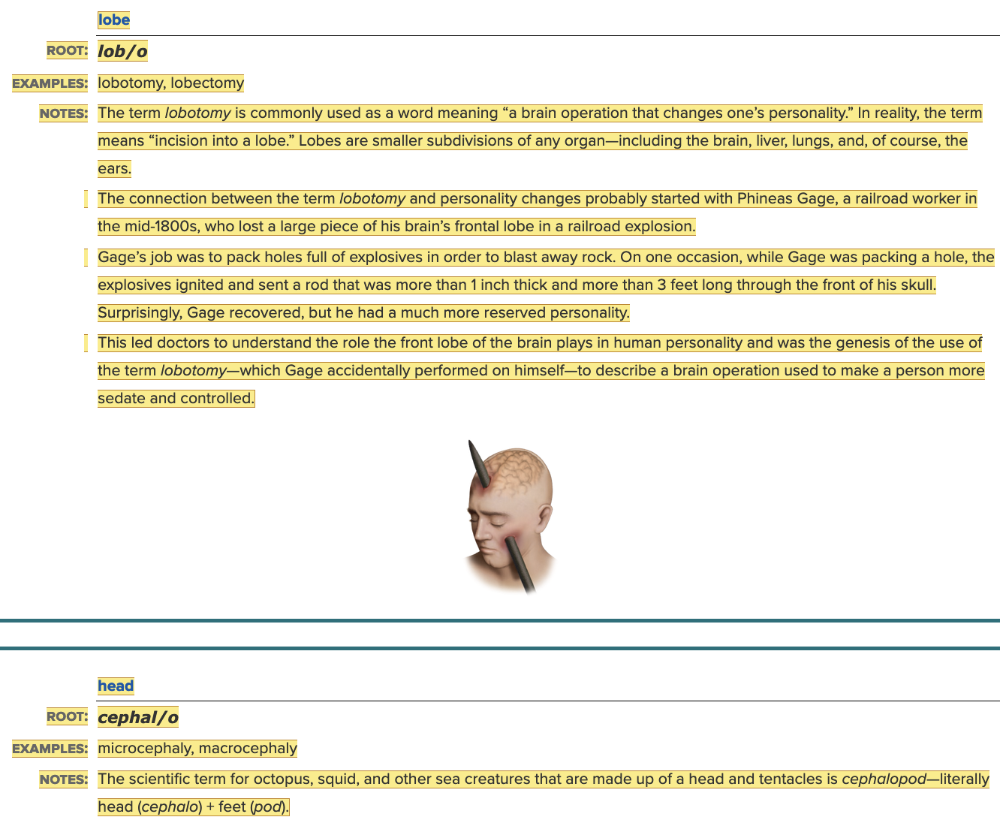
Chapter 5.1 Word Parts of the Nervous System
Word Parts Associated with the Structure of the Nervous System
- Parts of Nervous System: Root Examples Part 2
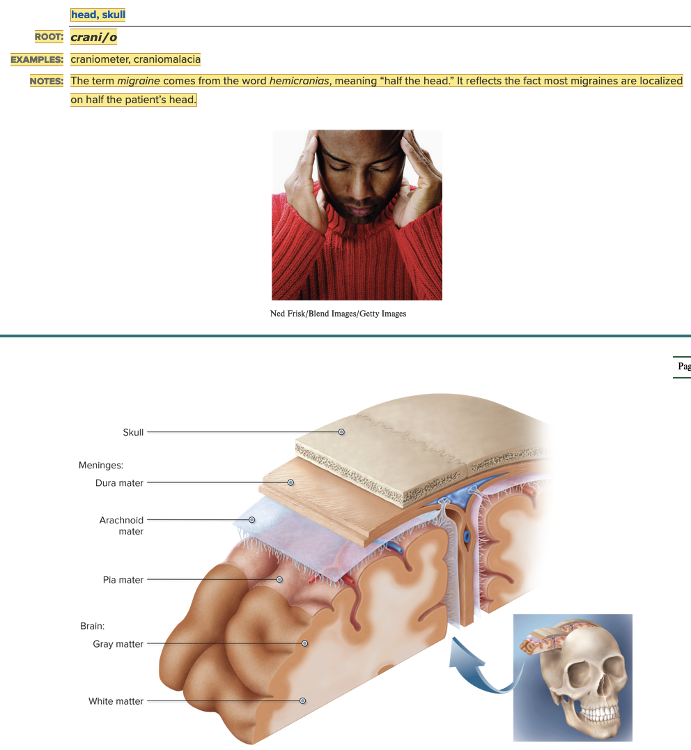
Chapter 5.1 Word Parts of the Nervous System
Word Parts Associated with the Structure of the Nervous System
- Parts of Nervous System: Root Examples Part 3
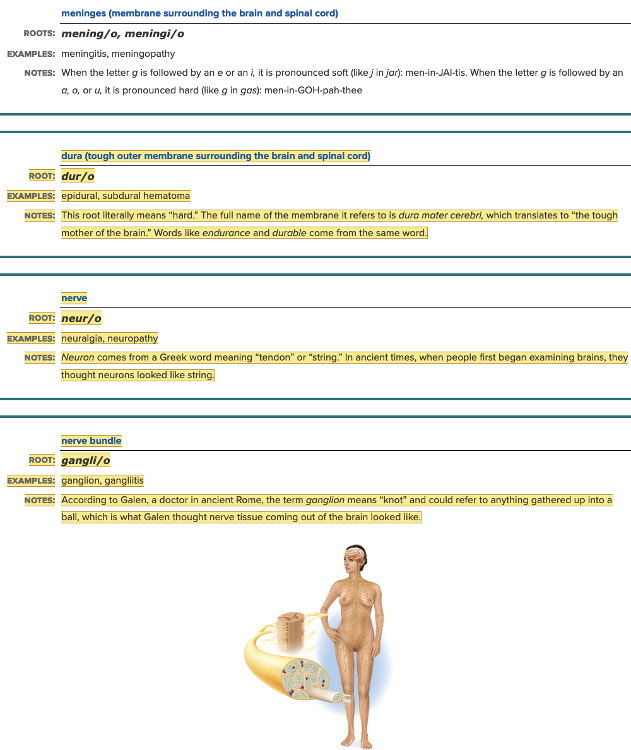
Chapter 5.1 Word Parts of the Nervous System
Word Parts Associated with the Structure of the Nervous System
- Parts of Nervous System: Root Examples Part 4
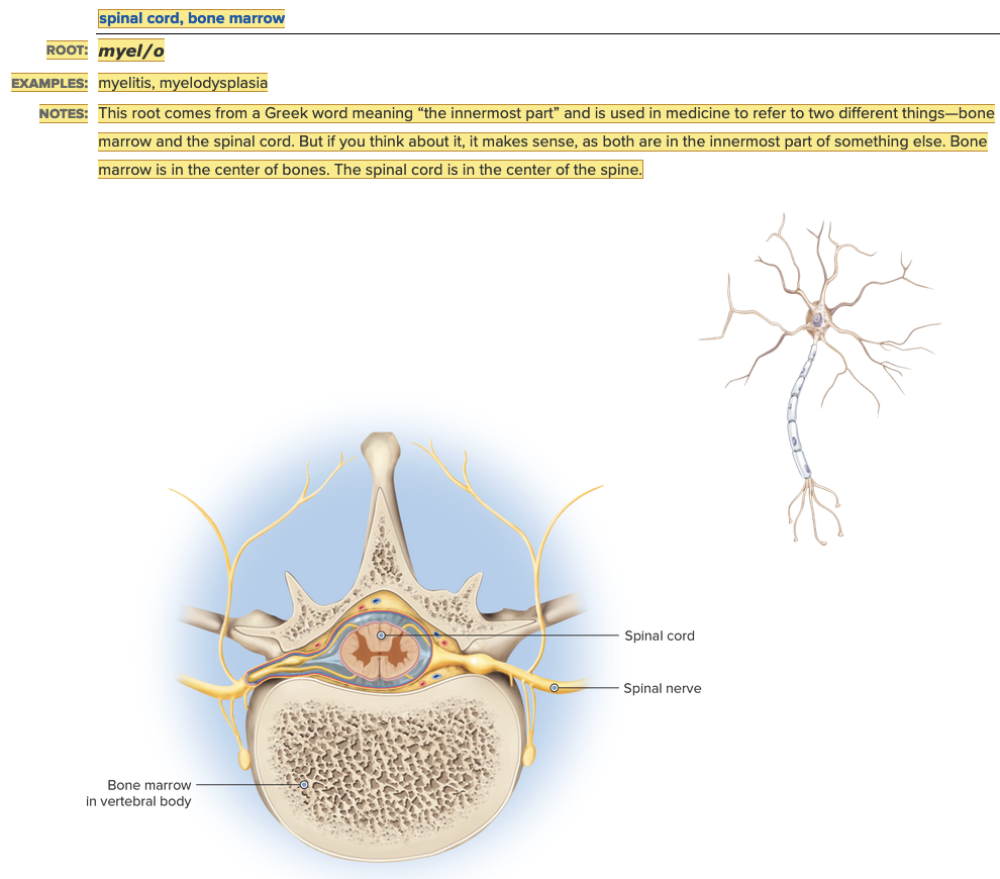
Chapter 5.1 Word Parts of the Nervous System
Word Parts Associated with the Structure of the Nervous System
- Parts of Nervous System: Root Examples Part 5
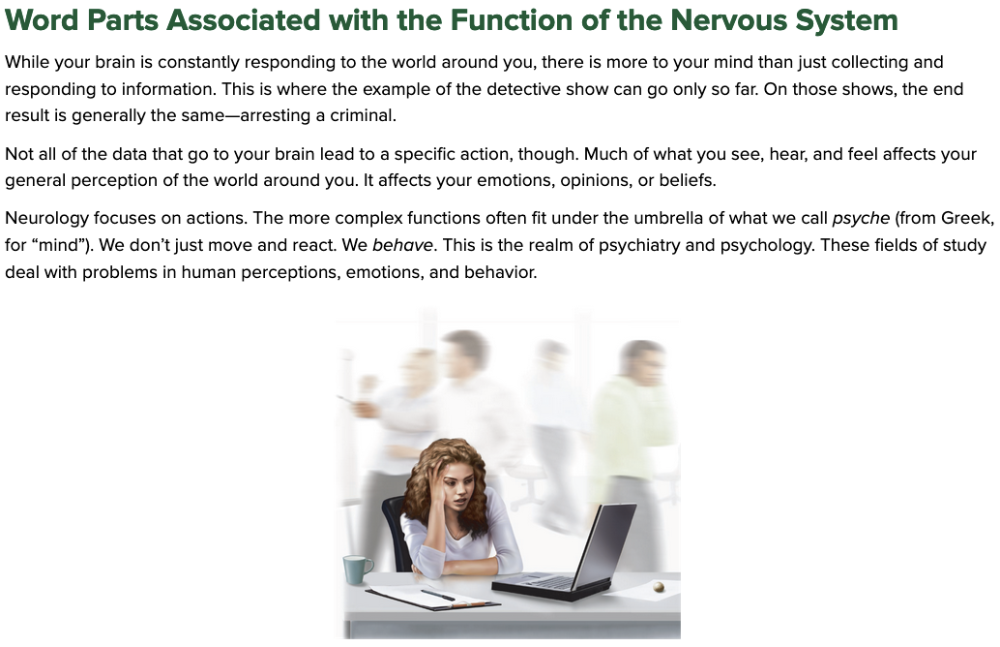
Chapter 5.1 Word Parts of the Nervous System
Word Parts Associated with the Function of the Nervous System
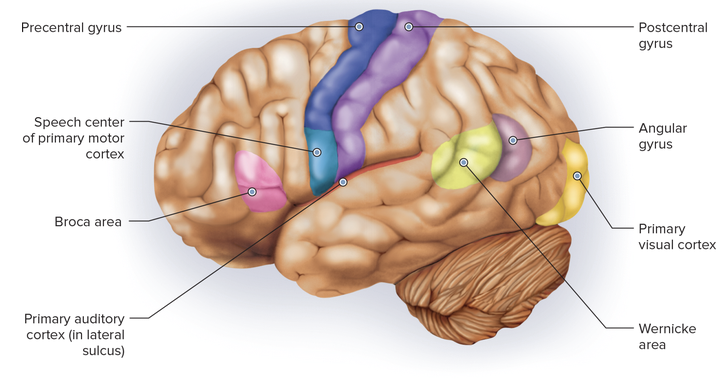
Chapter 5.1 Word Parts of the Nervous System
Word Parts Associated with the Function of the Nervous System
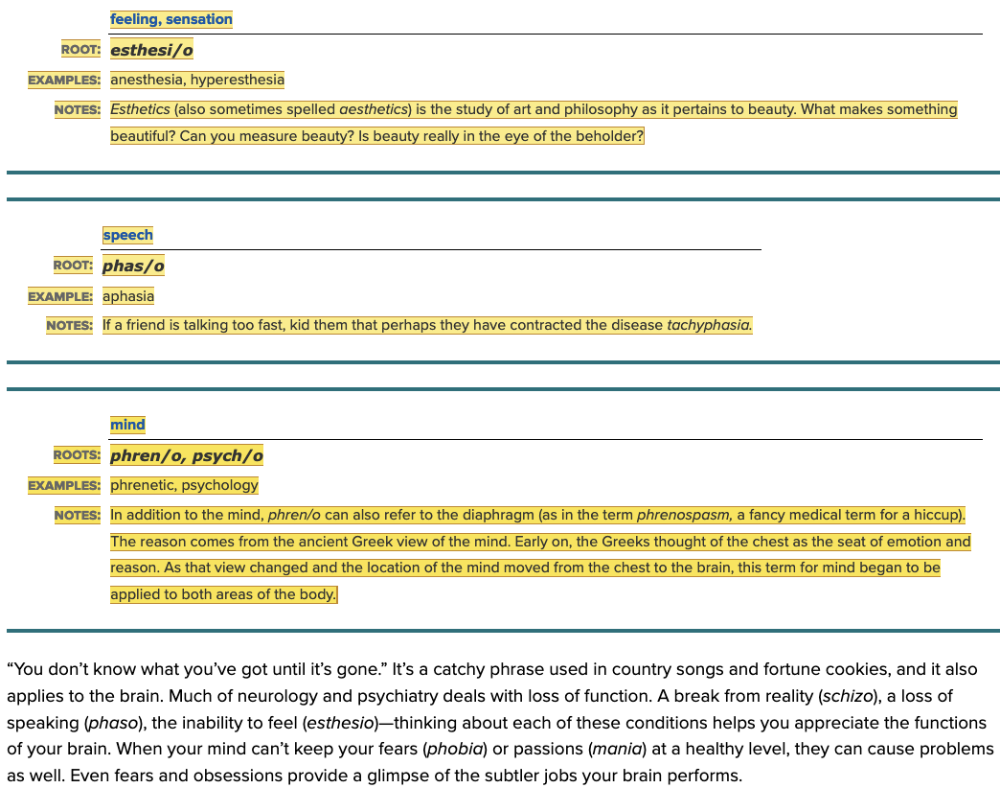
Chapter 5.1 Word Parts of the Nervous System
Word Parts Associated with the Function of the Nervous System
- Word Parts of Functions of the Nervous System: Root Examples Part 1
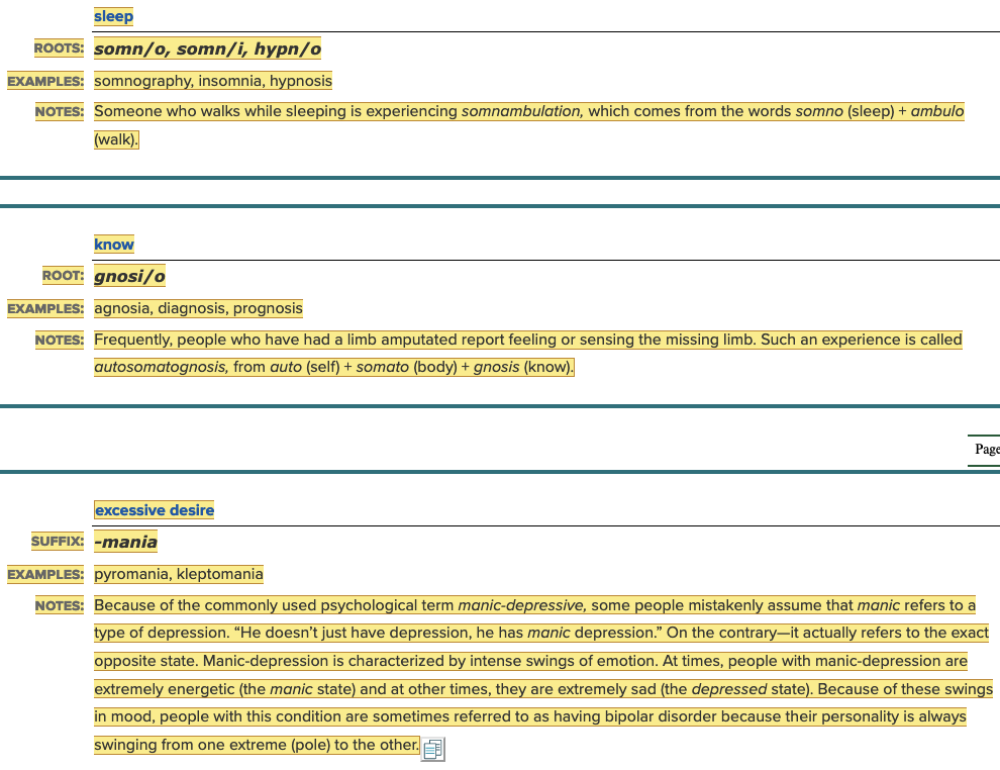
Chapter 5.1 Word Parts of the Nervous System
Word Parts Associated with the Function of the Nervous System
- Word Parts of Functions of the Nervous System: Root Examples Part 2
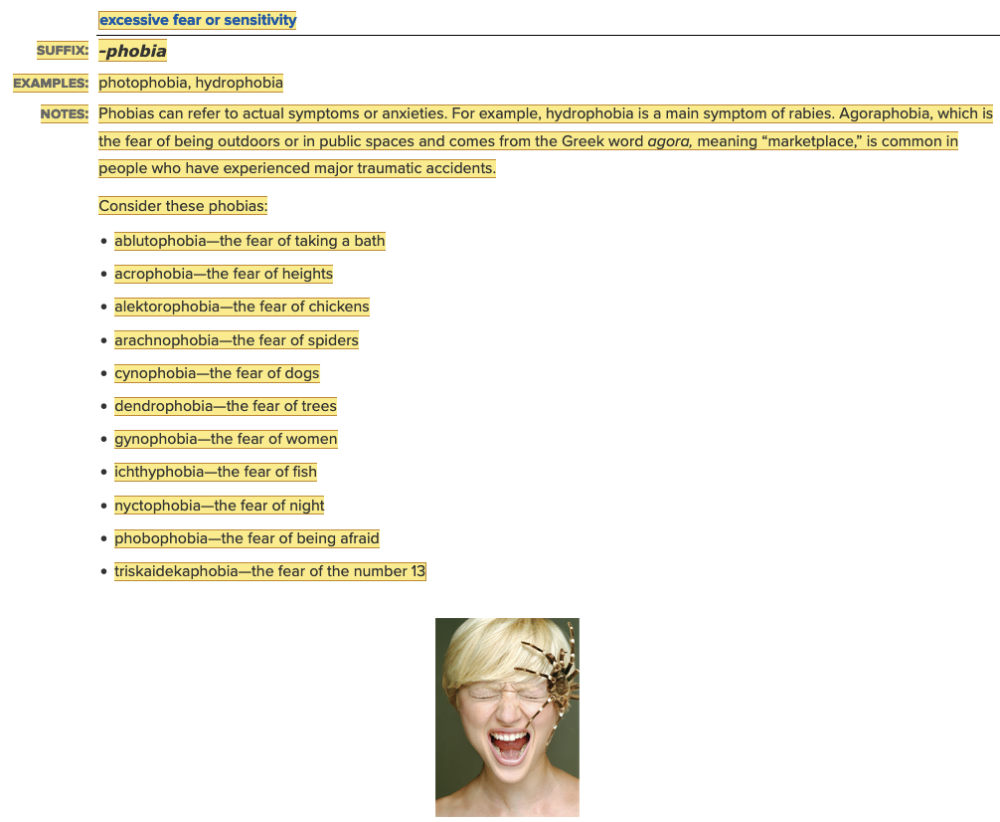
Chapter 5.1 Word Parts of the Nervous System
Word Parts Associated with the Function of the Nervous System
- Word Parts of Functions of the Nervous System: Root Examples Part 3
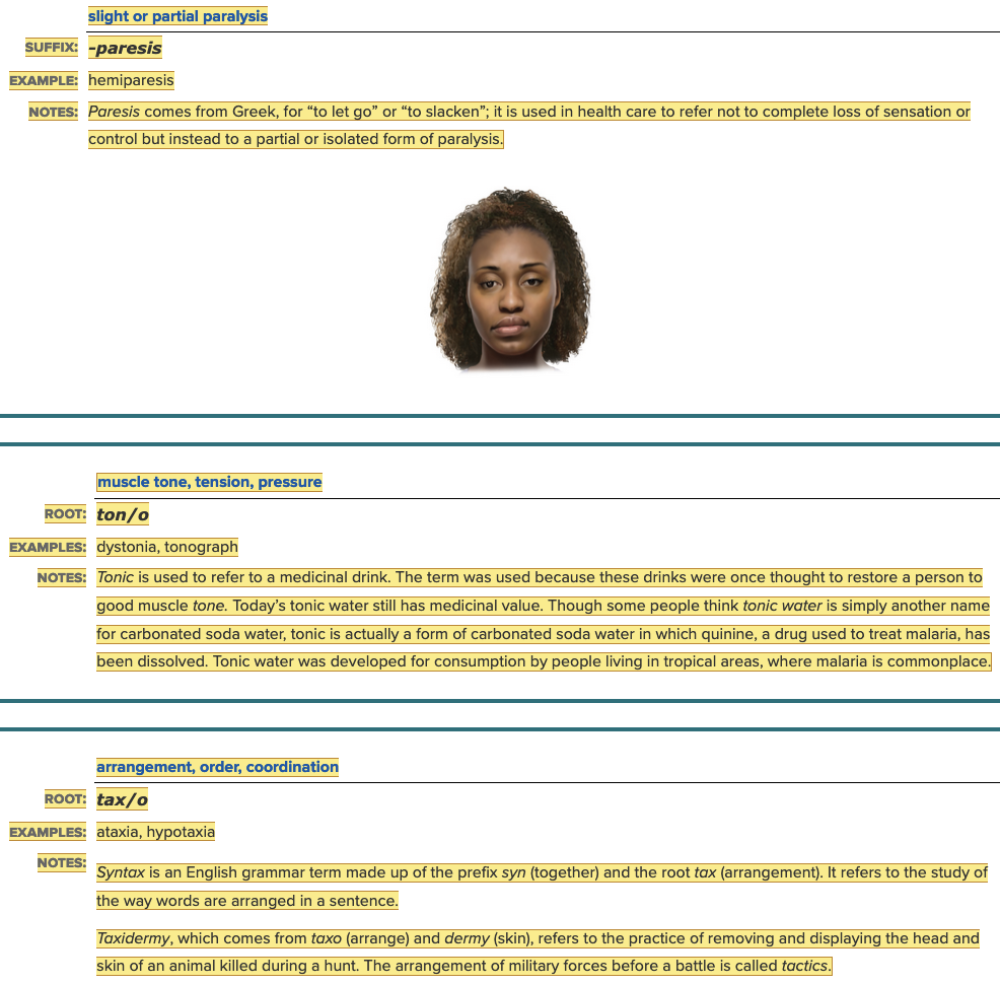
Chapter 5.1 Word Parts of the Nervous System
Word Parts Associated with the Function of the Nervous System
- Word Parts of Functions of the Nervous System: Root Examples Part 4
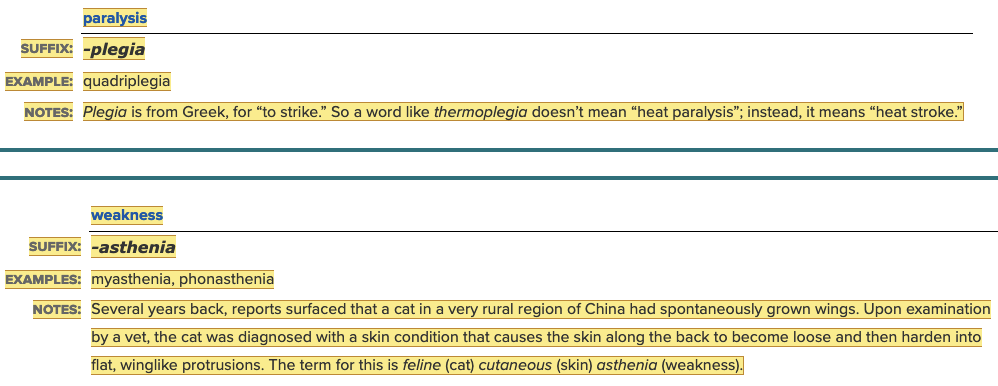
Chapter 5.1 Word Parts of the Nervous System
Word Parts Associated with the Function of the Nervous System
- Word Parts of Functions of the Nervous System: Root Examples Part 5
...
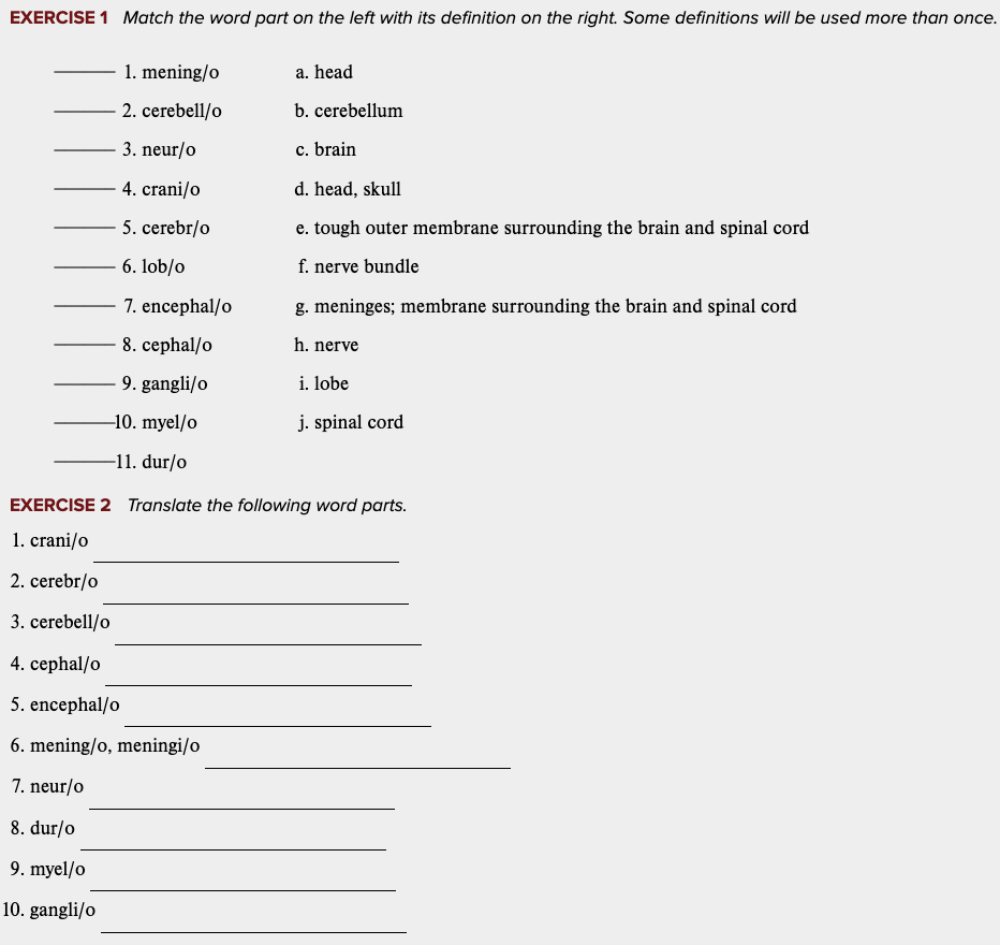
Learning Outcome 5.1 Exercises: Exercise 1, 2.
...
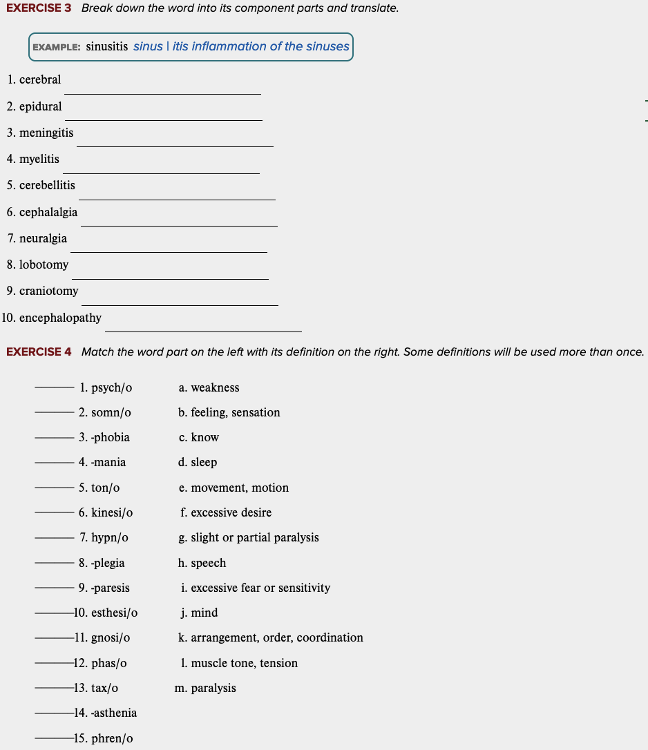
Learning Outcome 5.1 Exercises: Exercise 3, 4.
...
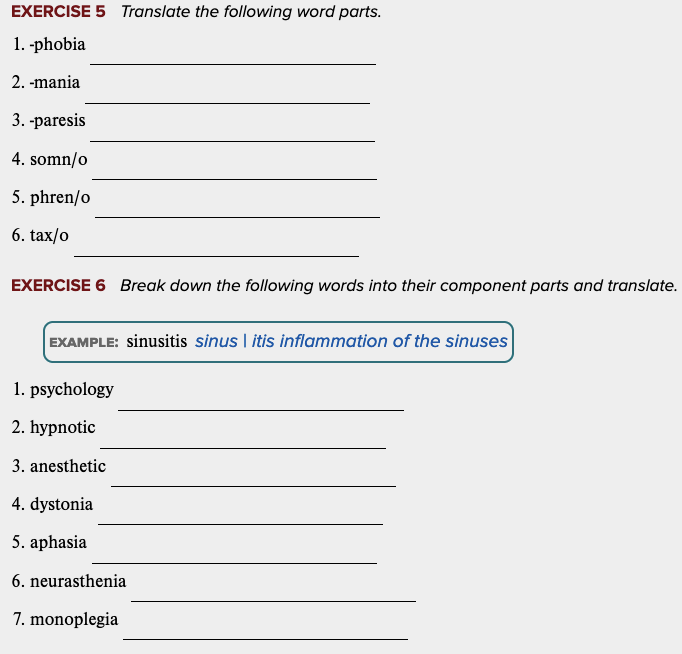
Learning Outcome 5.1 Exercises: Exercise 5, 6.
...
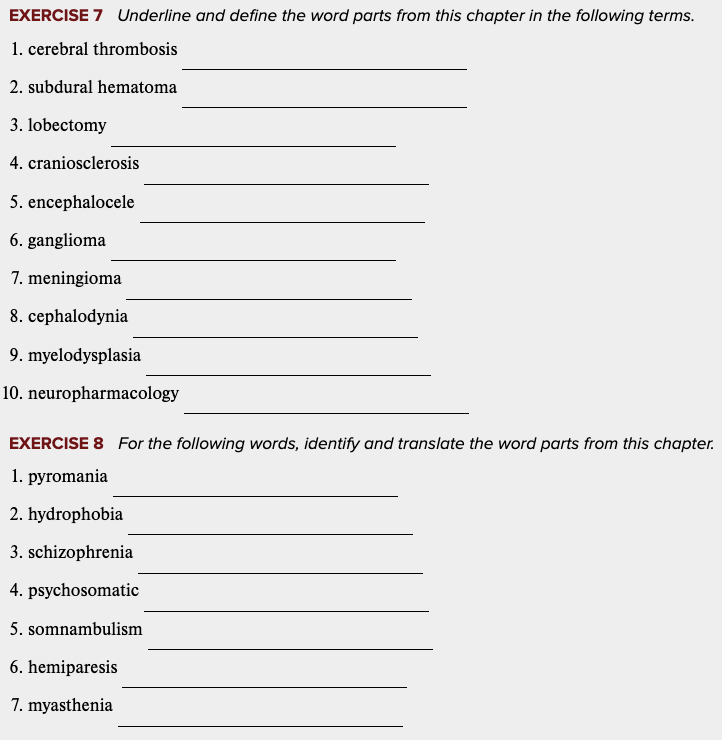
Learning Outcome 5.1 Exercises: Exercise 7, 8.
...
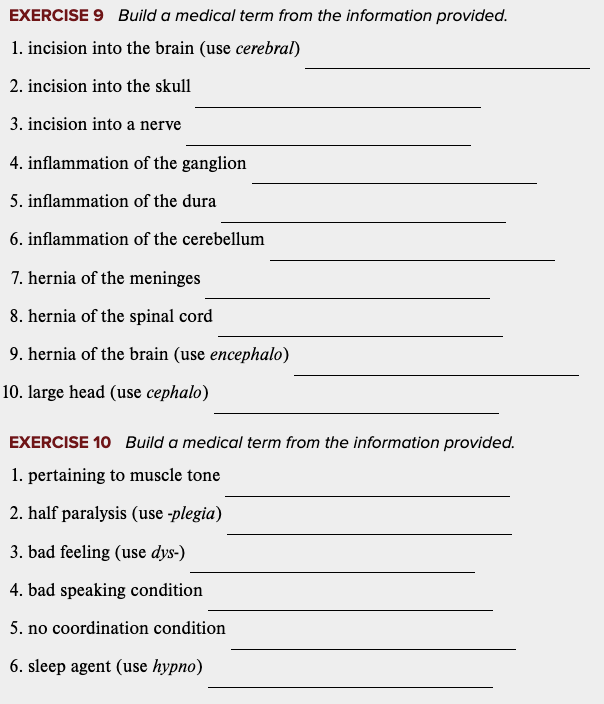
Learning Outcome 5.1 Exercises: Exercise 9, 10.
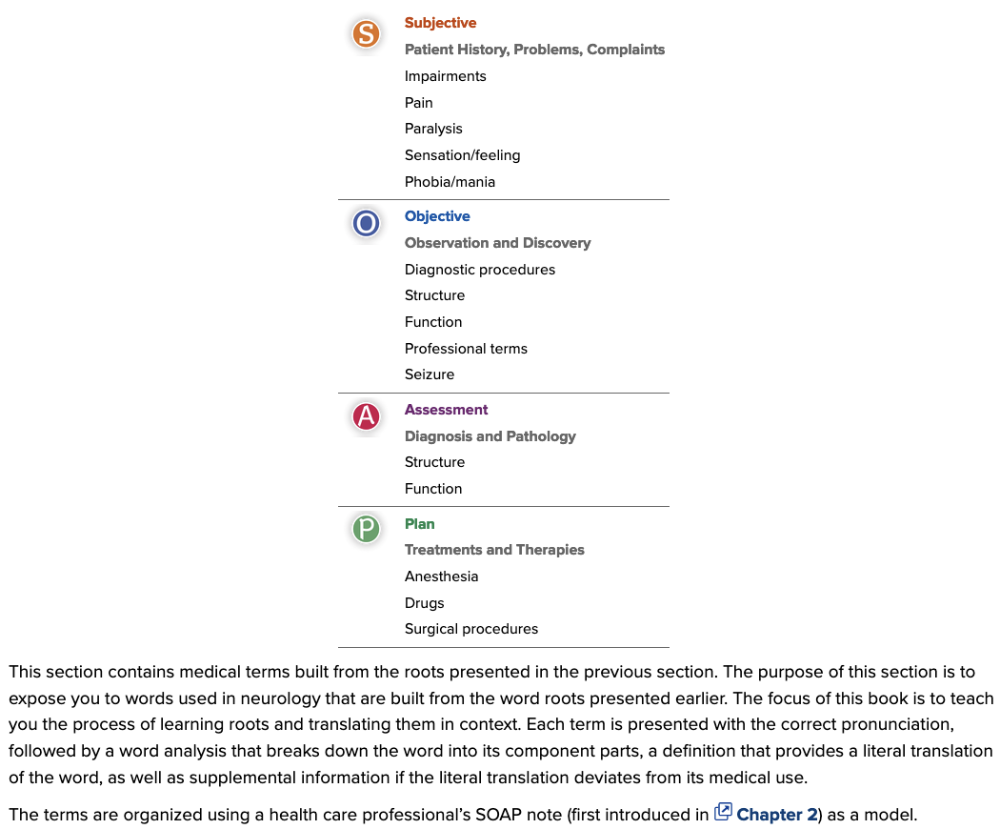
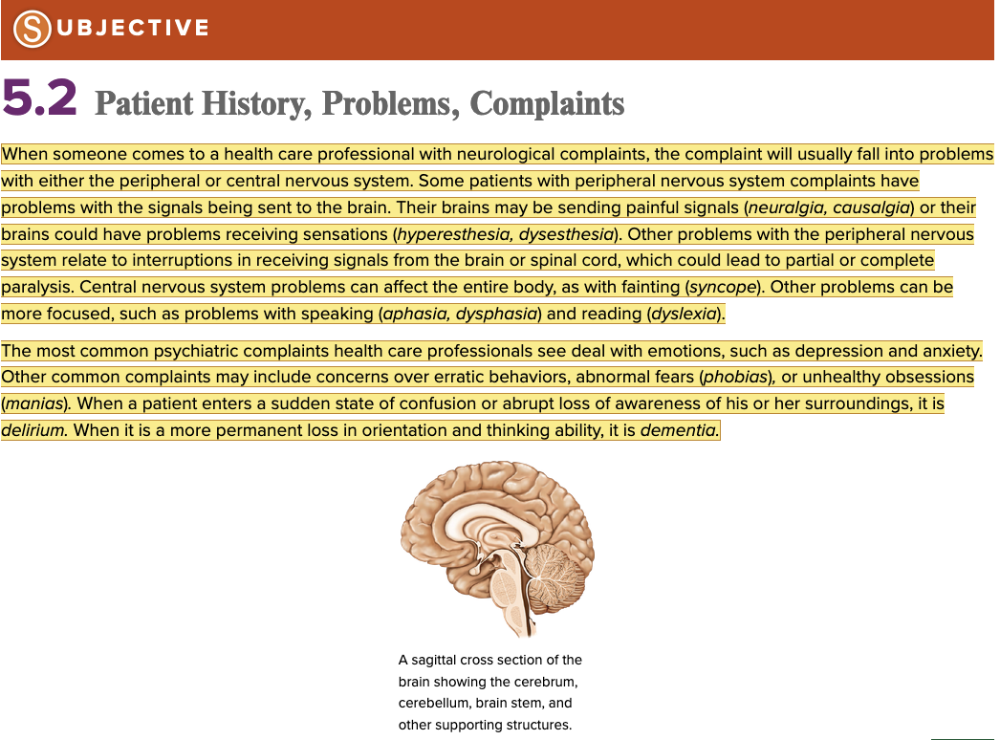
Chapter 5.2 Patient History, Problems, Complaints
- Subjective
...
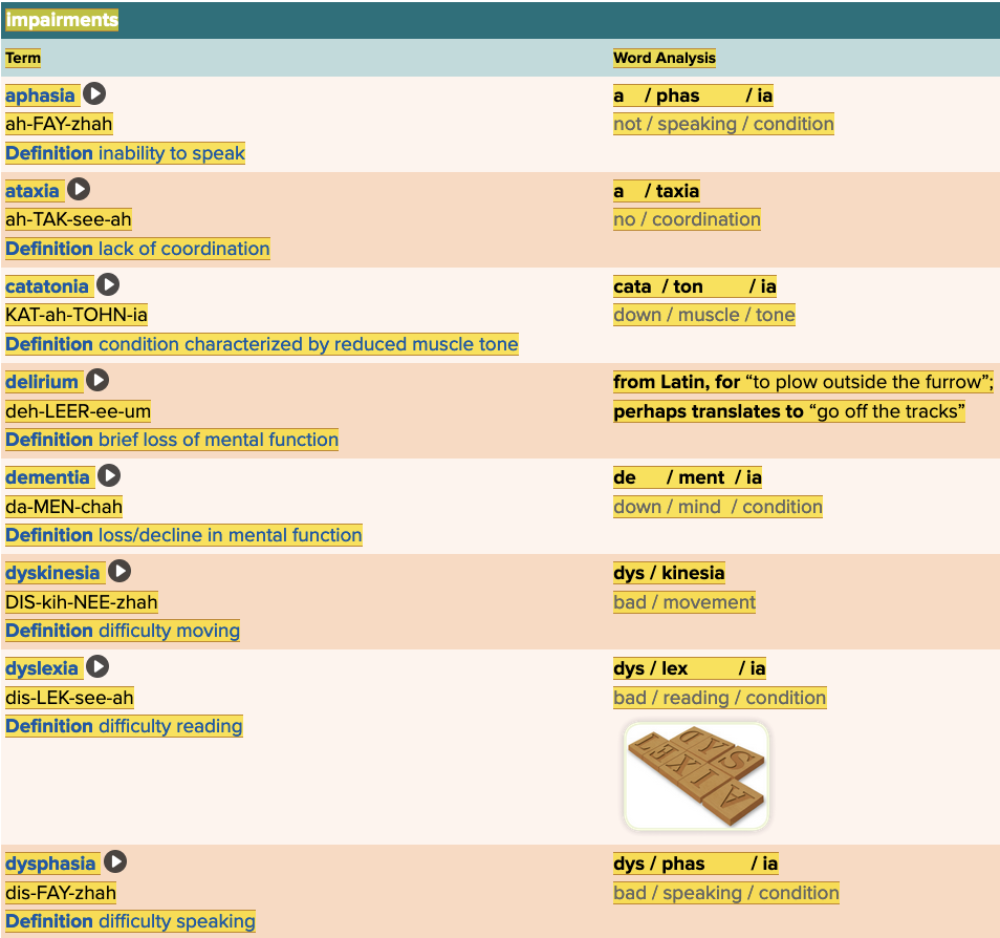
Chapter 5.2 Patient History, Problems, Complaints
- Subjective: Impairments Table Part 1
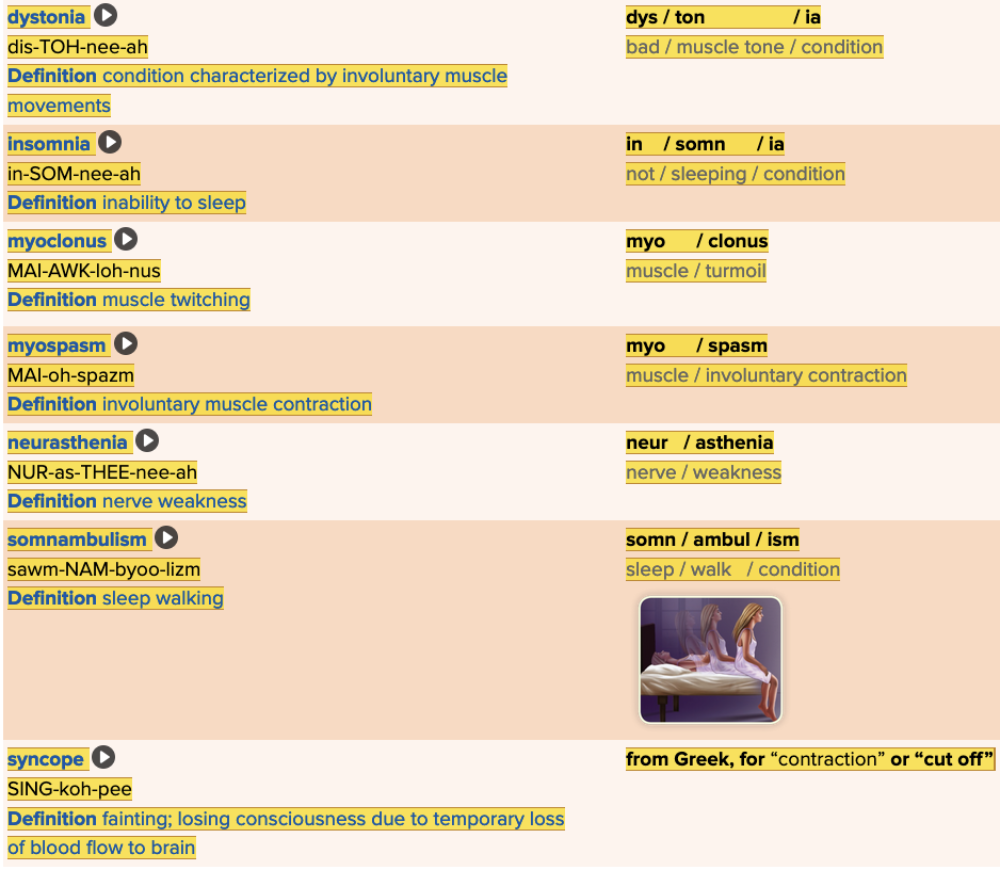
Chapter 5.2 Patient History, Problems, Complaints
- Subjective: Impairments Table Part 2
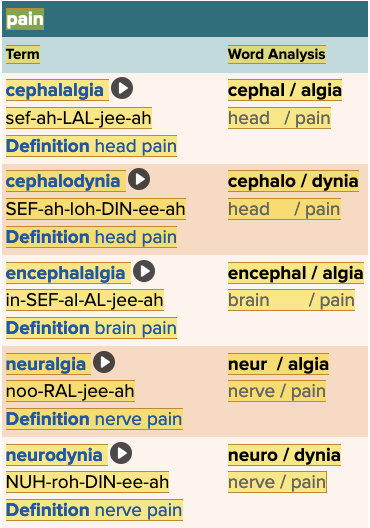
Chapter 5.2 Patient History, Problems, Complaints
- Subjective: Pain Table
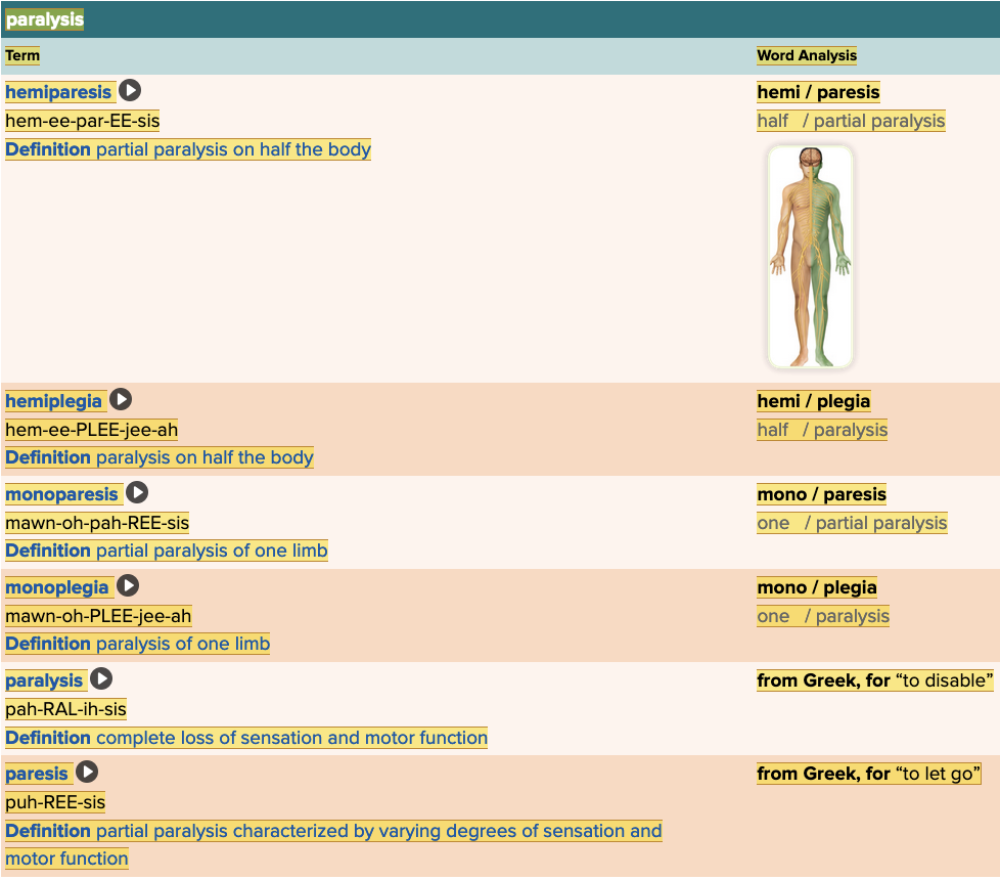
Chapter 5.2 Patient History, Problems, Complaints
- Subjective: Paralysis Table
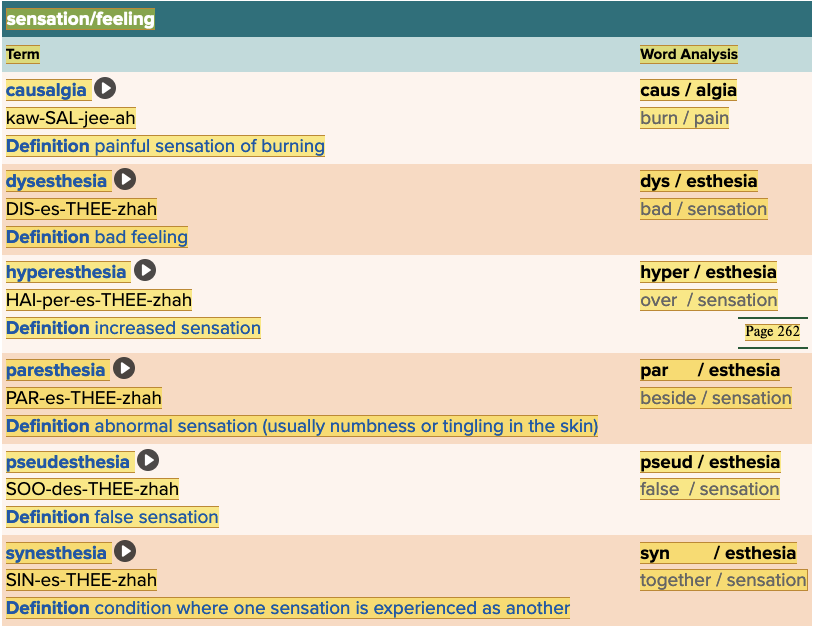
Chapter 5.2 Patient History, Problems, Complaints
- Subjective: Sensation/Feeling Table
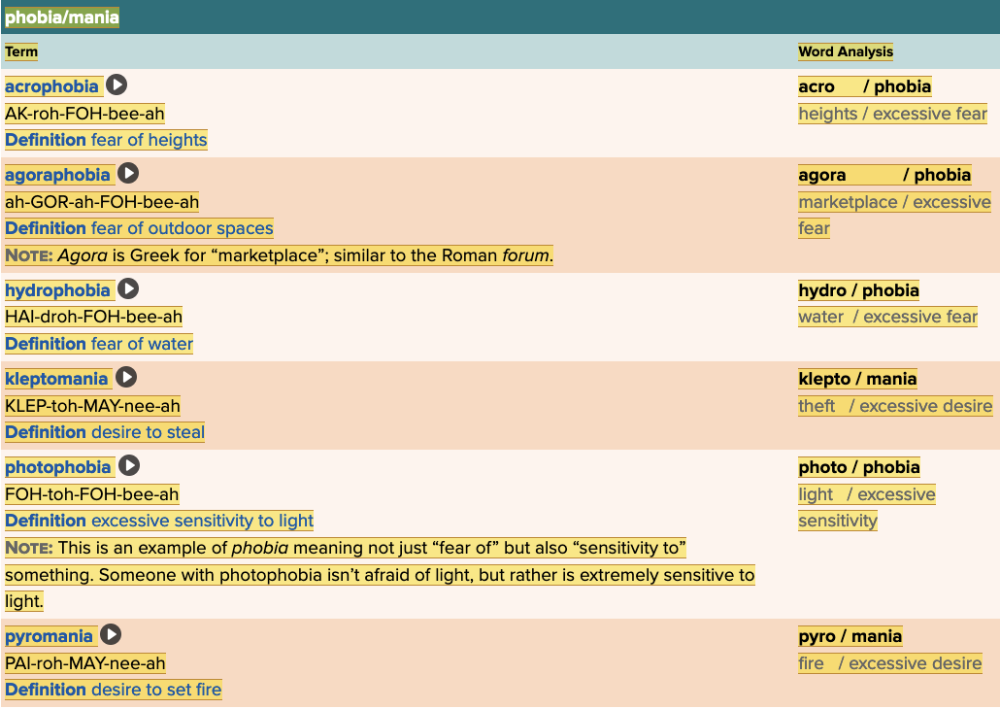
Chapter 5.2 Patient History, Problems, Complaints
- Subjective: Phobia/Mania Table
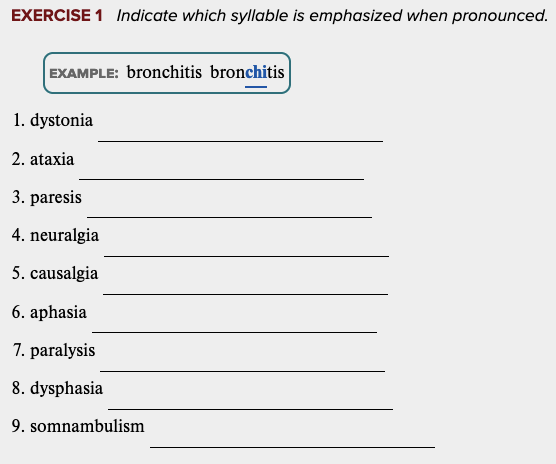
Learning Outcome 5.2 Exercises: Exercise 1.
...
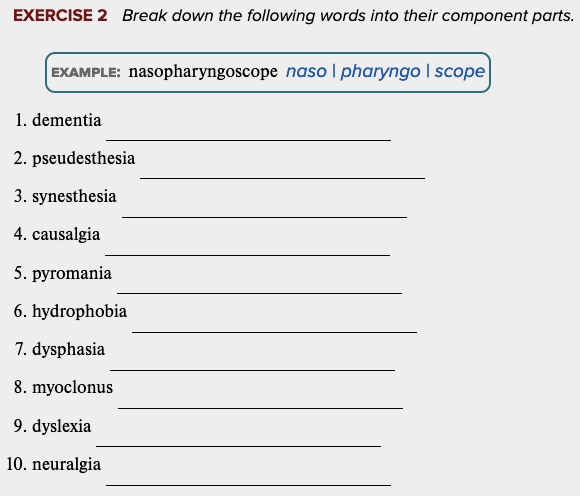
Learning Outcome 5.2 Exercises: Exercise 2.
...
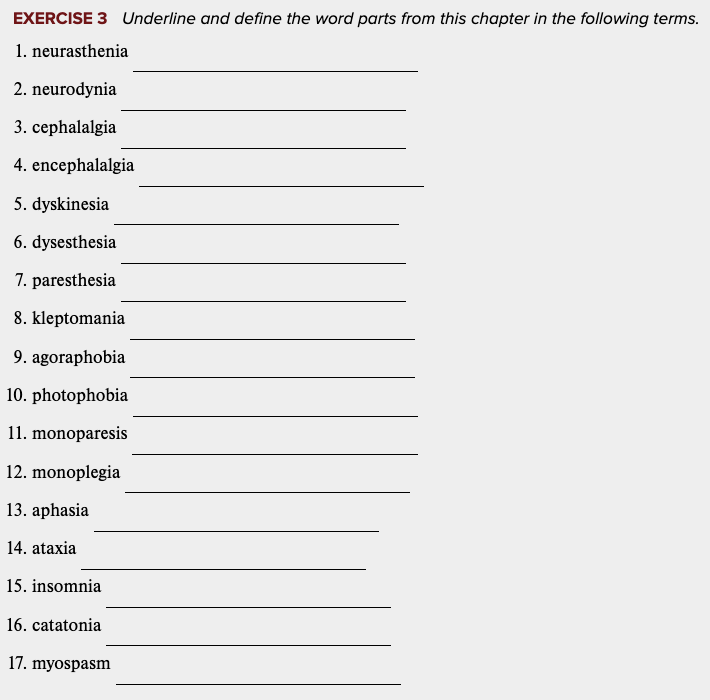
Learning Outcome 5.2 Exercises: Exercise 3.
...
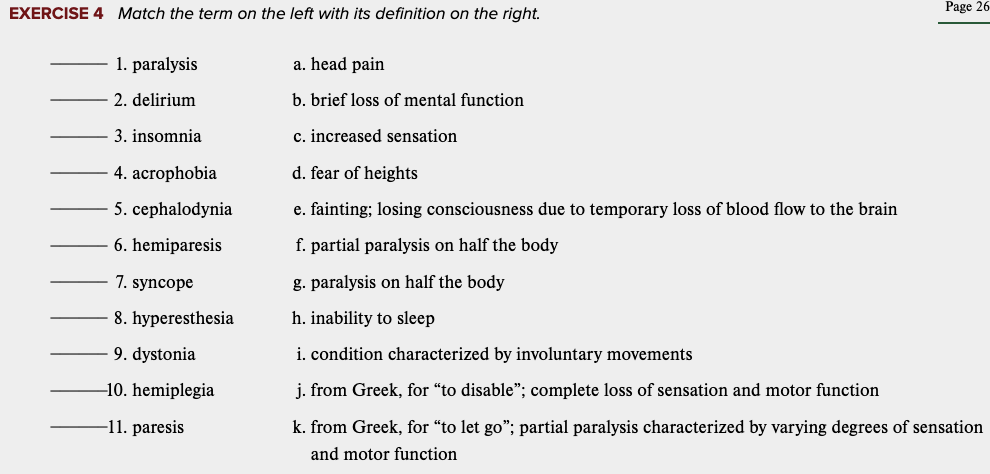
Learning Outcome 5.2 Exercises: Exercise 4.
...
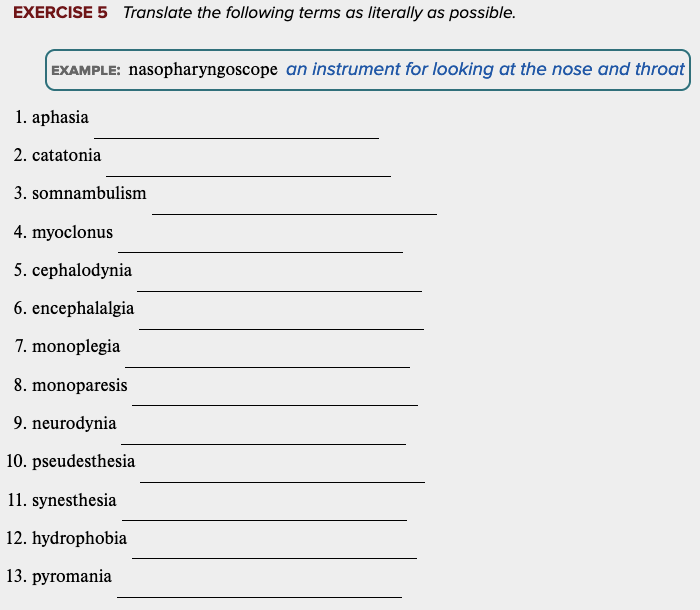
Learning Outcome 5.2 Exercises: Exercise 5.
...
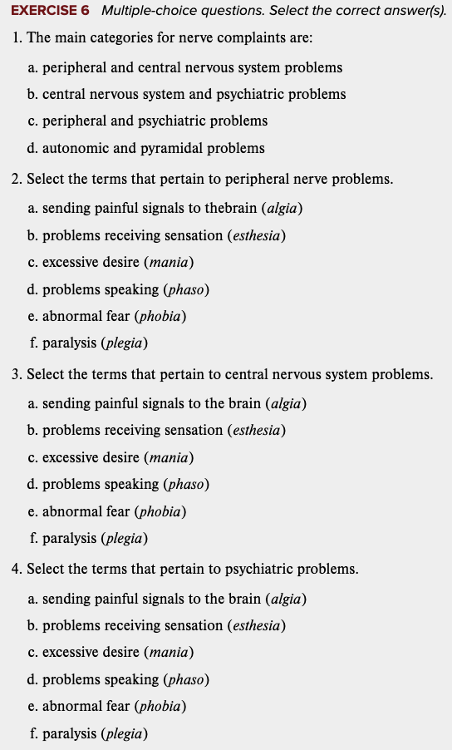
Learning Outcome 5.2 Exercises: Exercise 6.
...
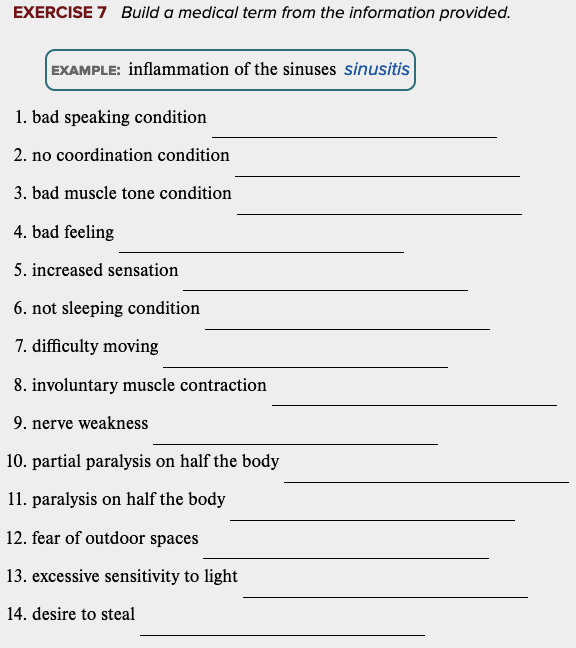
Learning Outcome 5.2 Exercises: Exercise 7.
...
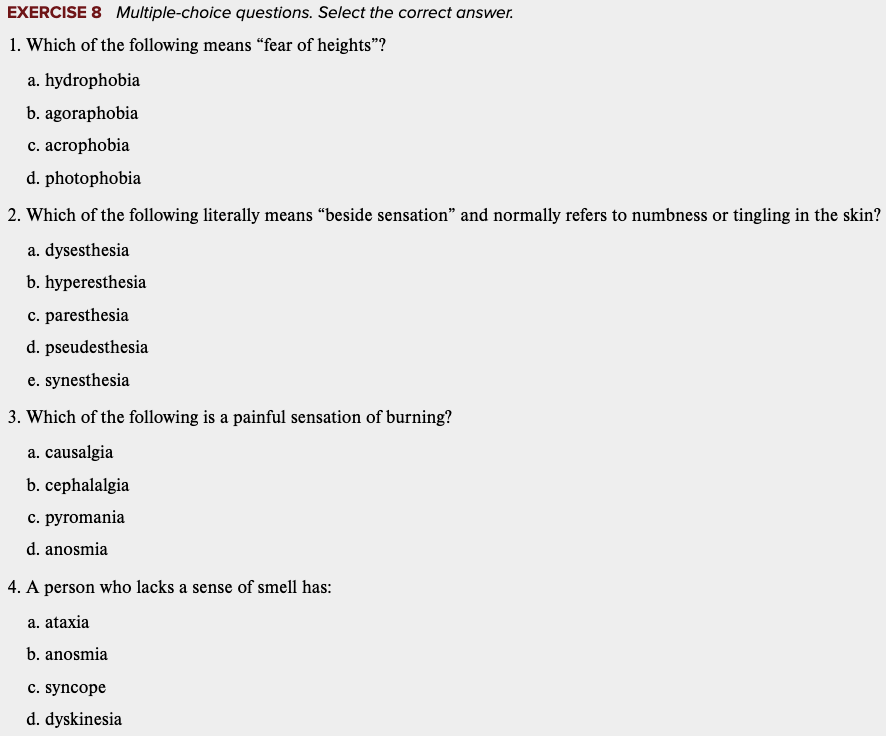
Learning Outcome 5.2 Exercises: Exercise 8, 9.
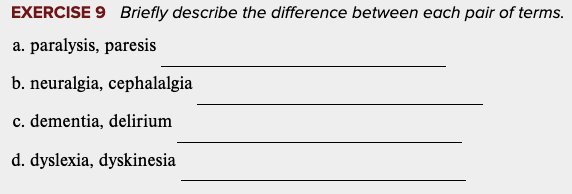
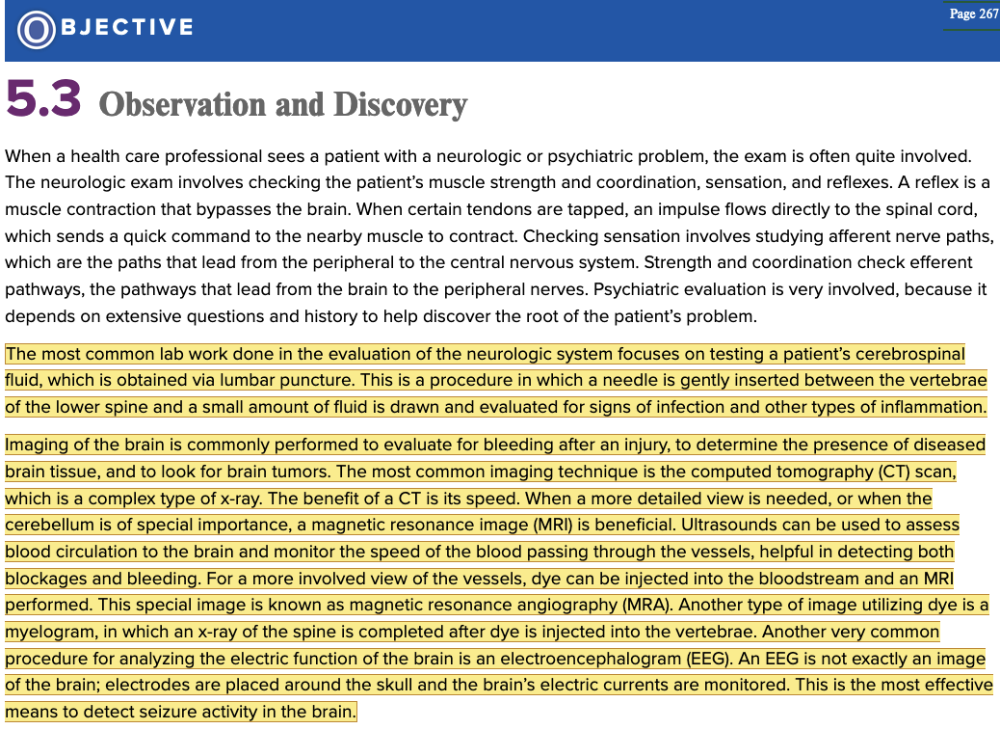
Chapter 5.3 Observation and Discovery
- Objective
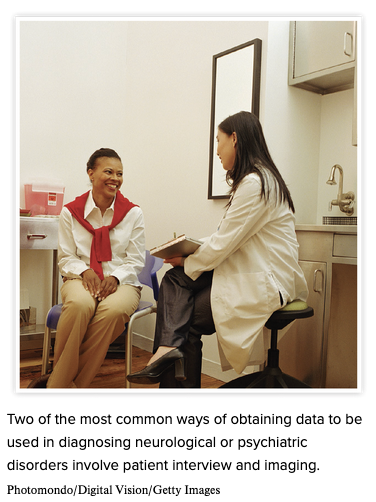
Chapter 5.3 Observation and Discovery
- Objective
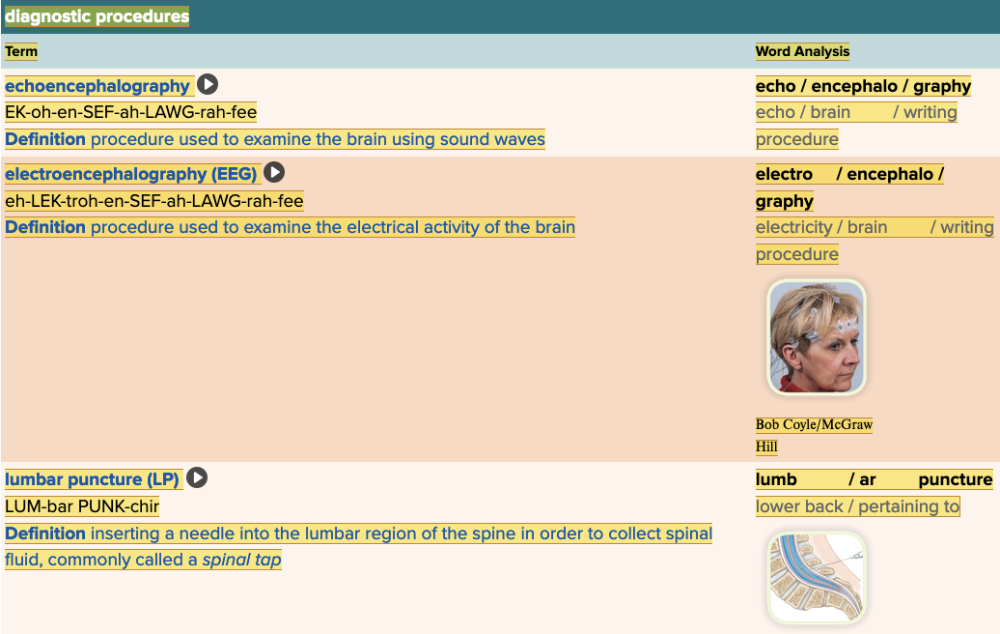
Chapter 5.3 Observation and Discovery
- Objective: Diagnostic Procedures Table
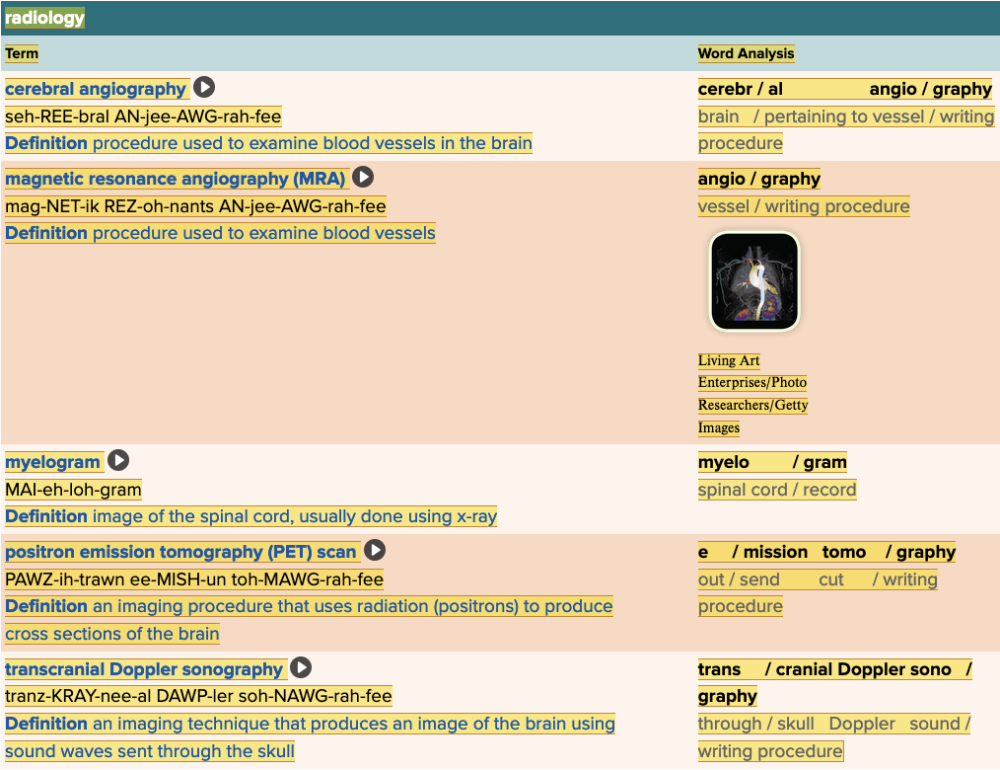
Chapter 5.3 Observation and Discovery
- Objective: Radiology Table
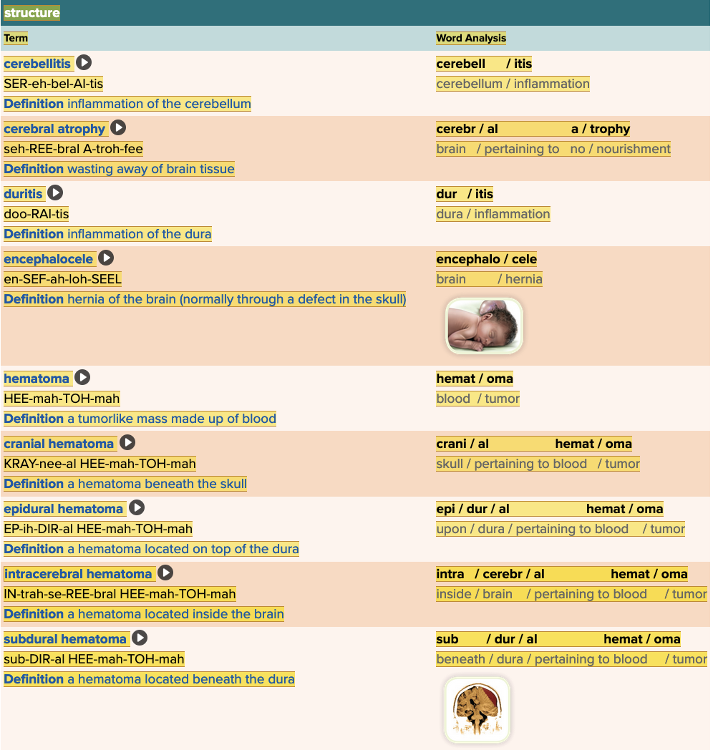
Chapter 5.3 Observation and Discovery
- Objective: Structure Table Part 1
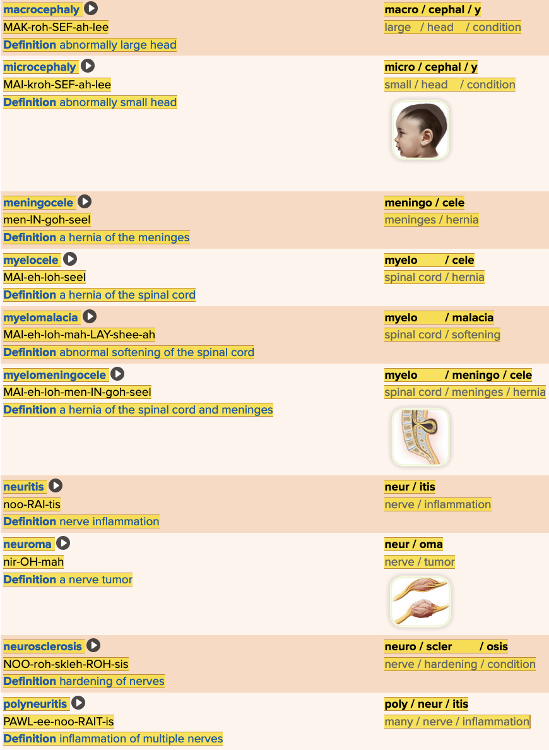
Chapter 5.3 Observation and Discovery
- Objective: Structure Table Part 2
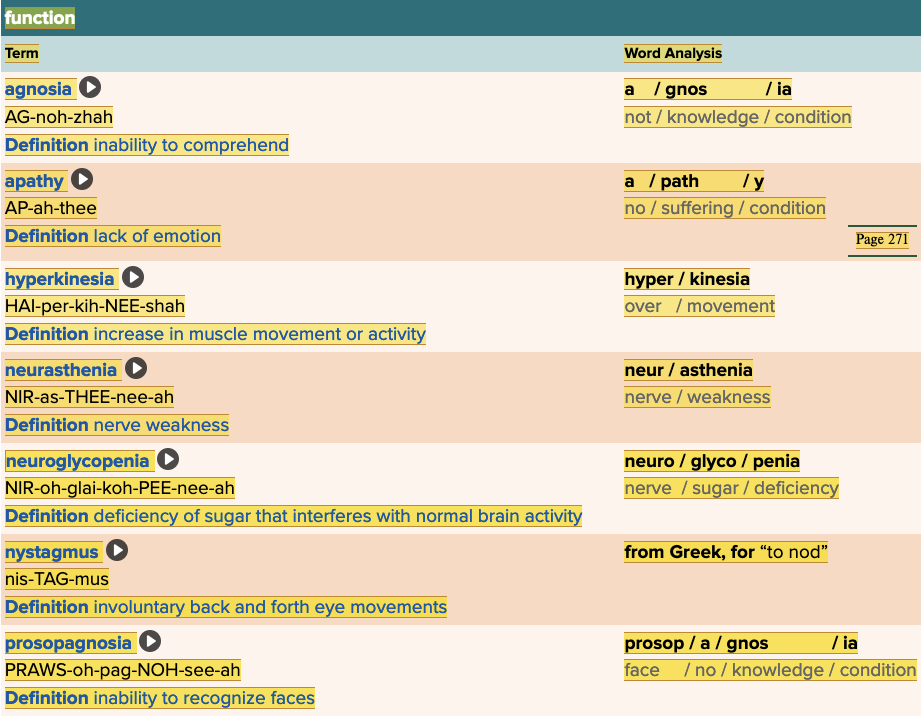
Chapter 5.3 Observation and Discovery
- Objective: Function Table
...
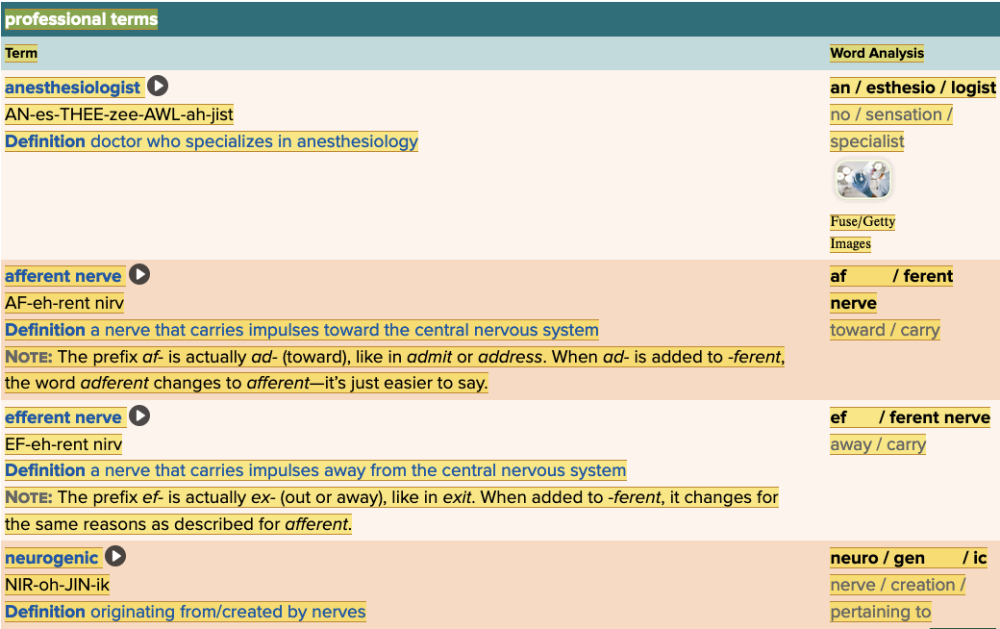
Chapter 5.3 Observation and Discovery
- Objective: Professional Terms Table Part 1
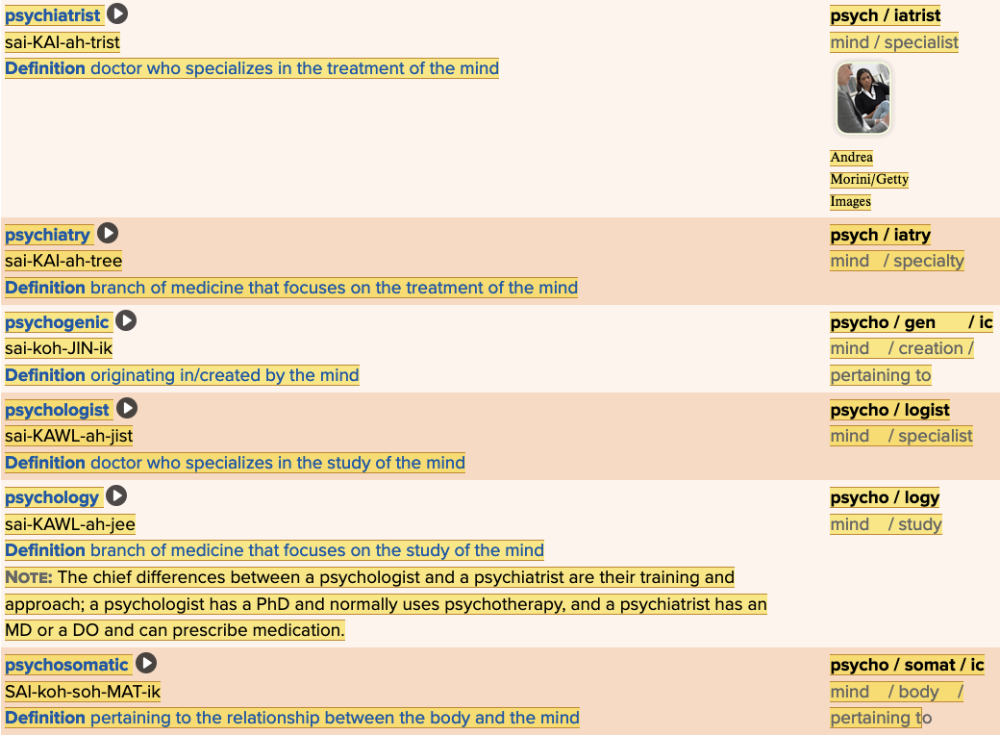
Chapter 5.3 Observation and Discovery
- Objective: Professional Terms Table Part 2

Chapter 5.3 Observation and Discovery
- Objective: Public Health Table
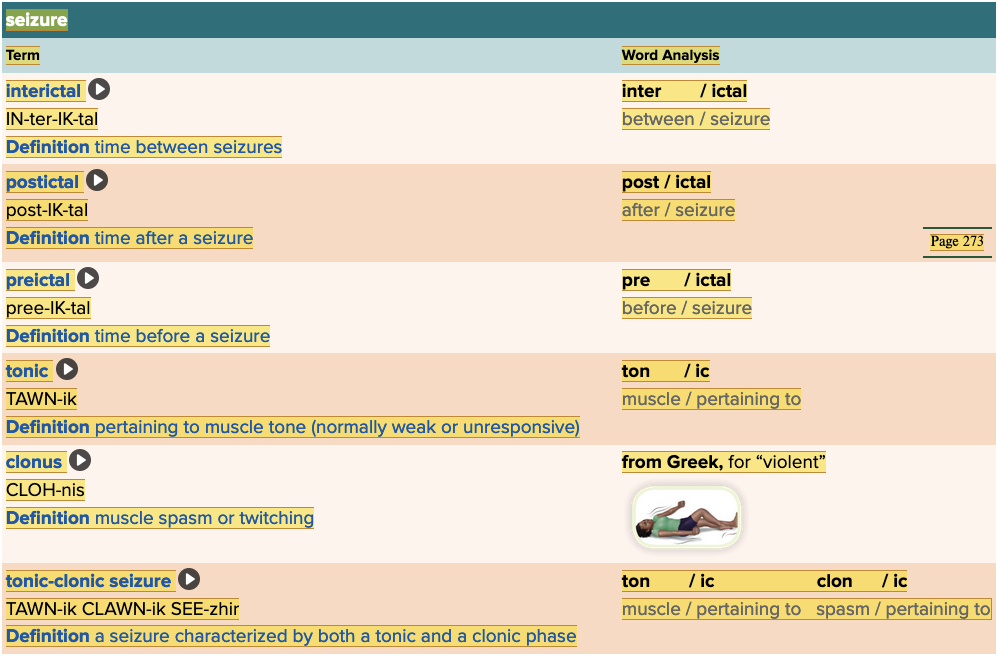
Chapter 5.3 Observation and Discovery
- Objective: Seizure Table
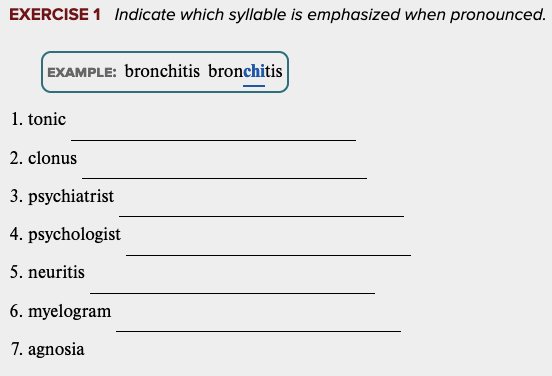
Learning Outcome 5.3 Exercises: Exercise 1.
...
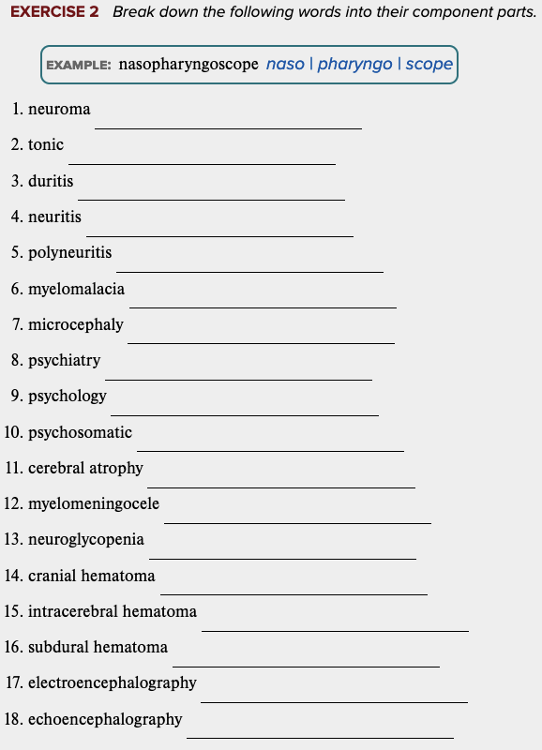
Learning Outcome 5.3 Exercises: Exercise 2.
...
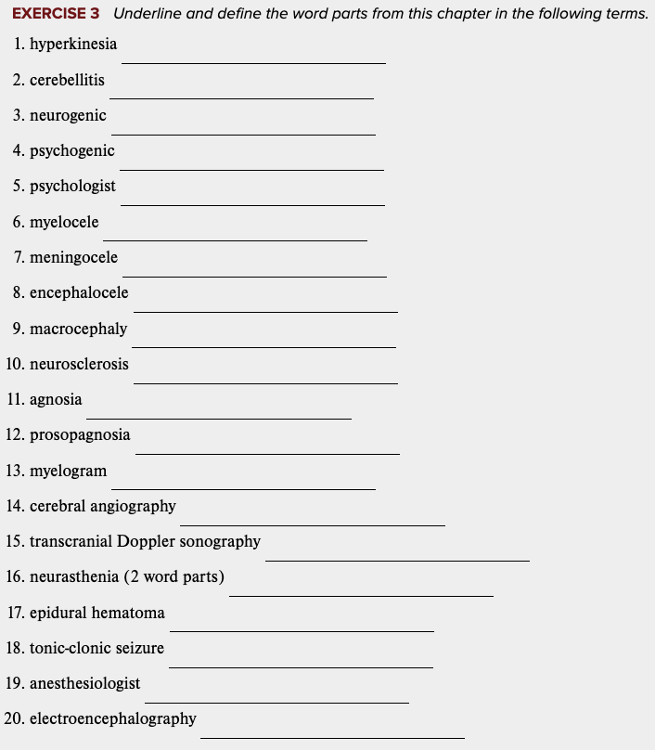
Learning Outcome 5.3 Exercises: Exercise 3.
...
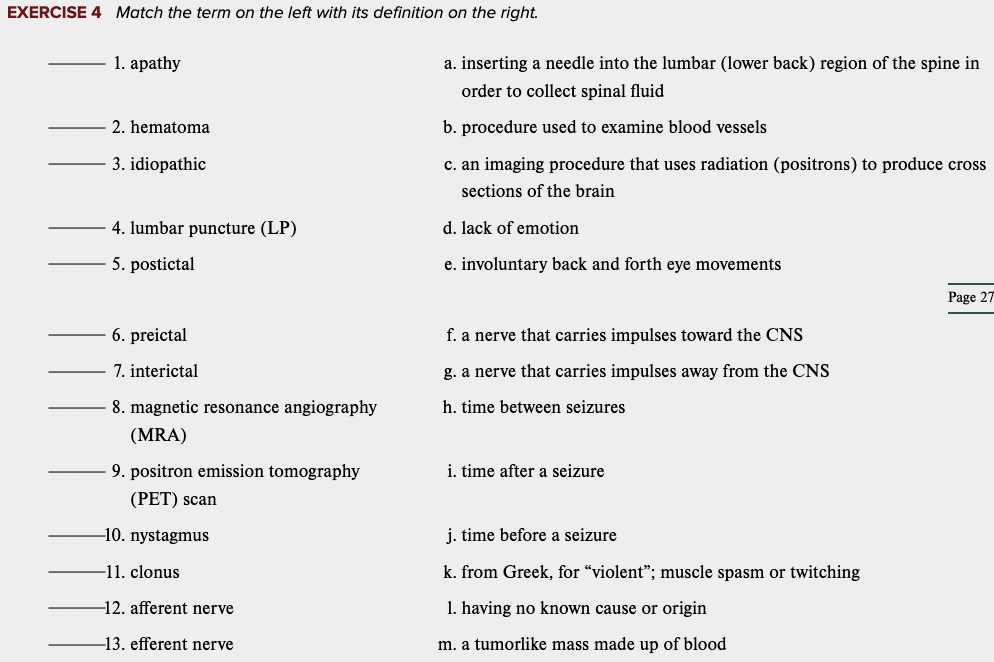
Learning Outcome 5.3 Exercises: Exercise 4.
...
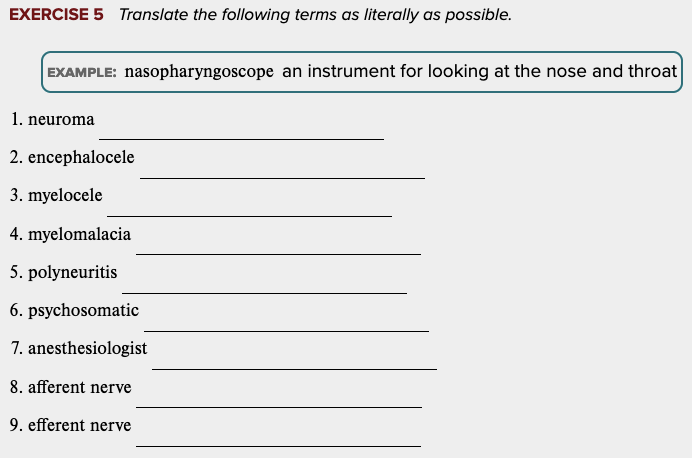
Learning Outcome 5.3 Exercises: Exercise 5.
...
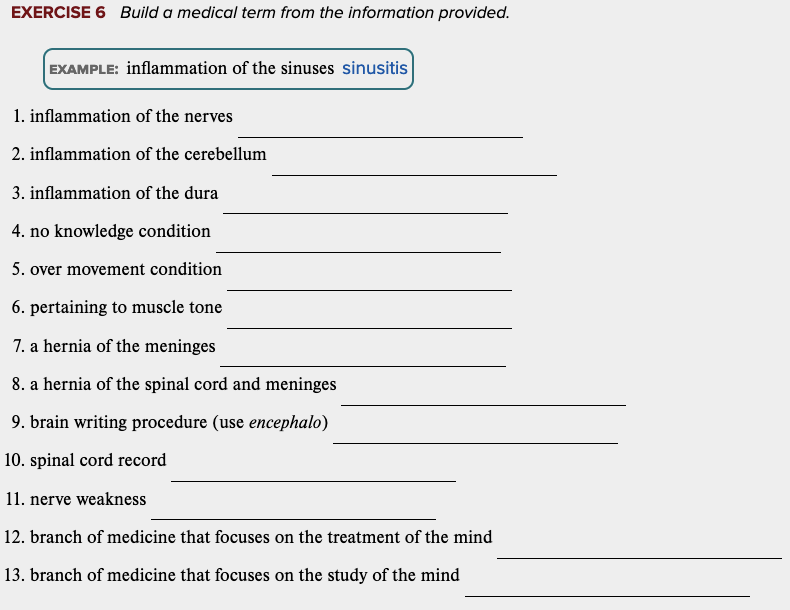
Learning Outcome 5.3 Exercises: Exercise 6.
...
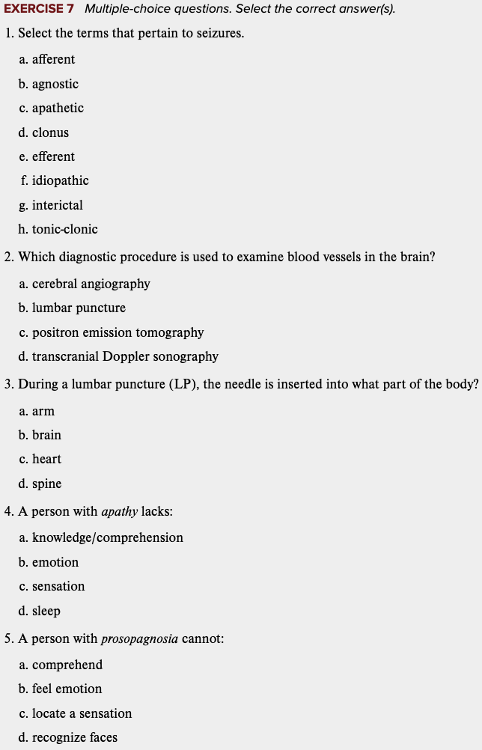
Learning Outcome 5.3 Exercises: Exercise 7.
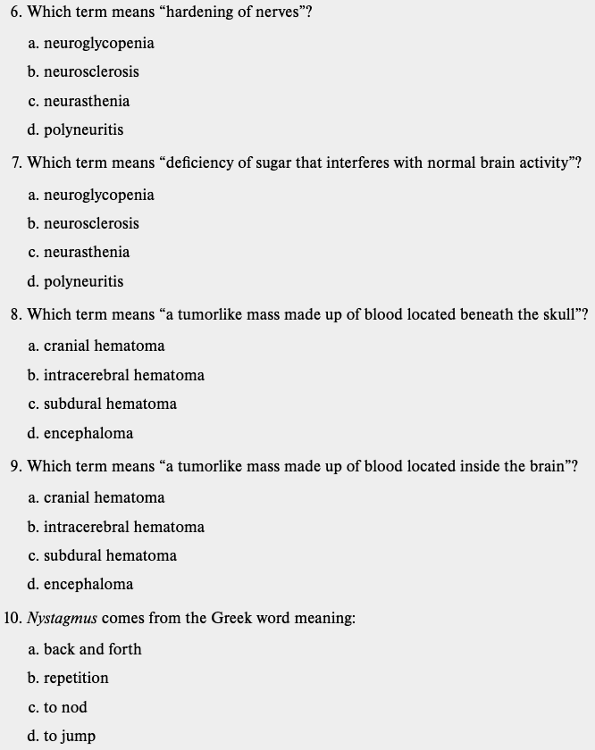
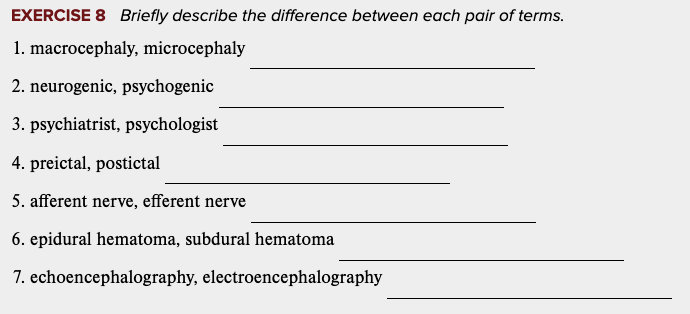
Learning Outcome 5.3 Exercises: Exercise 8.
...
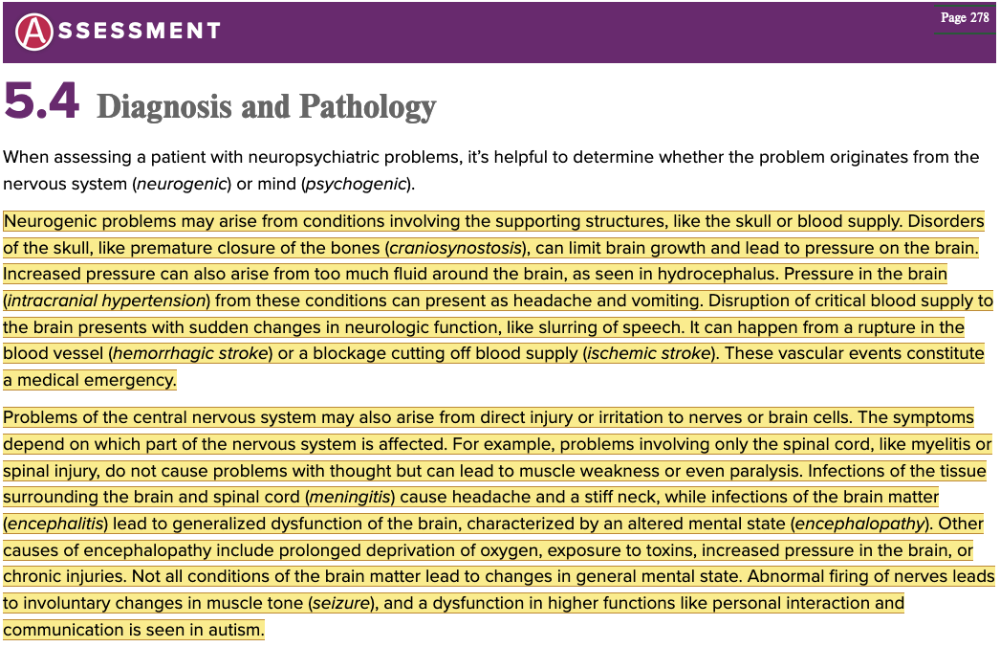
Chapter 5.4 Diagnosis and Pathology
- Assessment
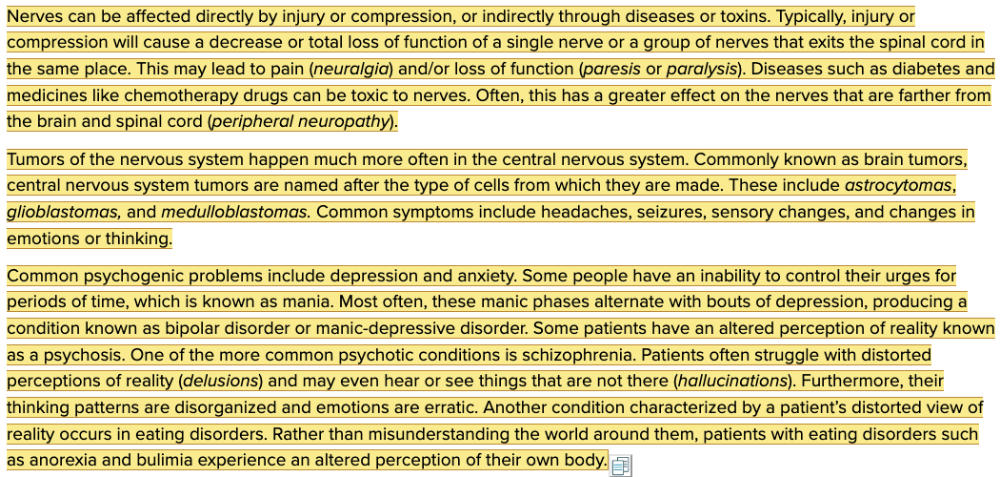
Chapter 5.4 Diagnosis and Pathology
- Assessment
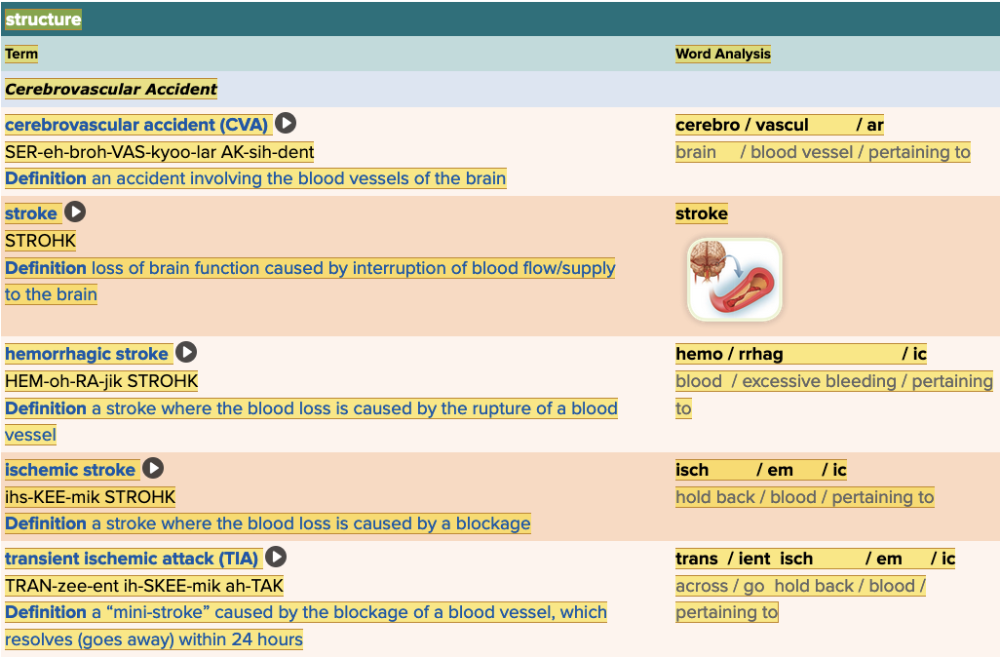
Chapter 5.4 Diagnosis and Pathology
- Assessment: Structure Table Part 1 - Cerebrovascular Accident
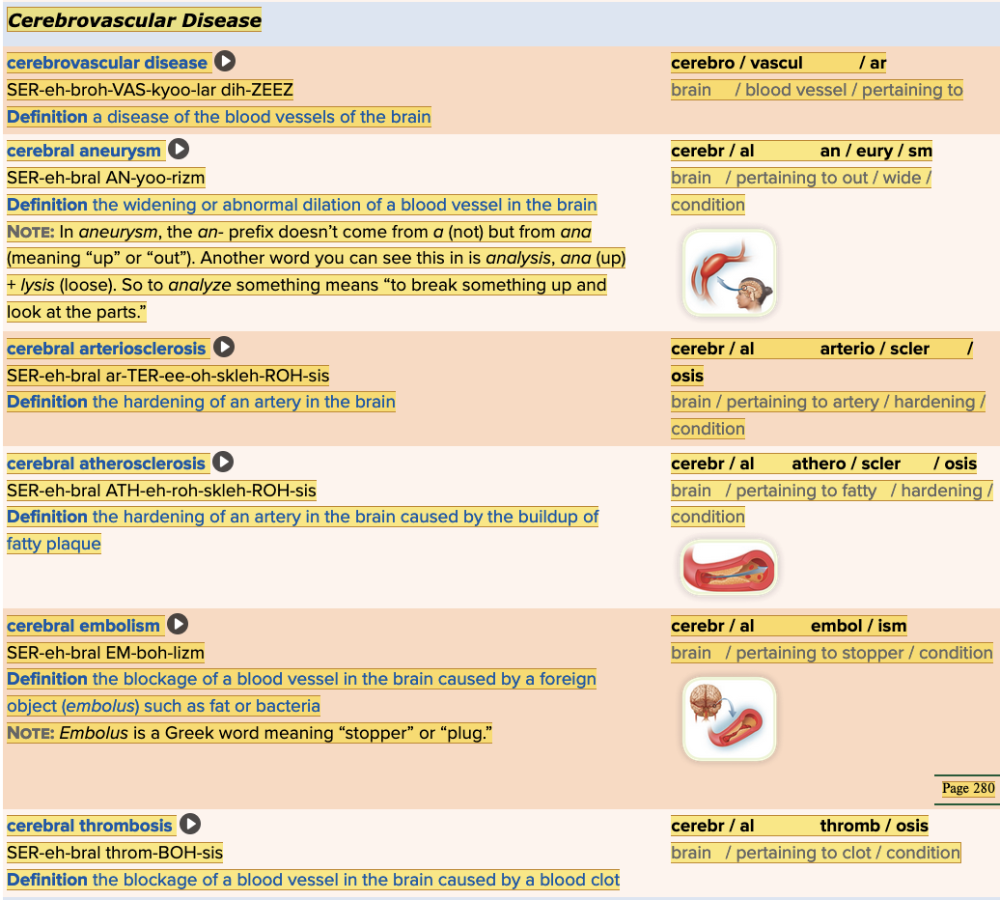
Chapter 5.4 Diagnosis and Pathology
- Assessment: Structure Table Part 2 - Cerebrovascular Disease
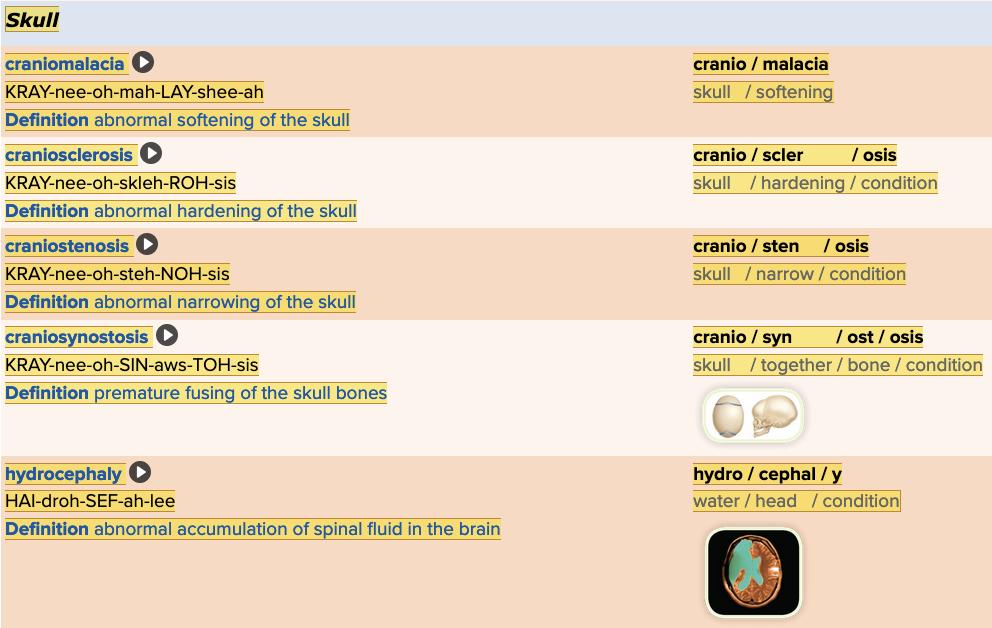
Chapter 5.4 Diagnosis and Pathology
- Assessment: Structure Table Part 3 - Skull
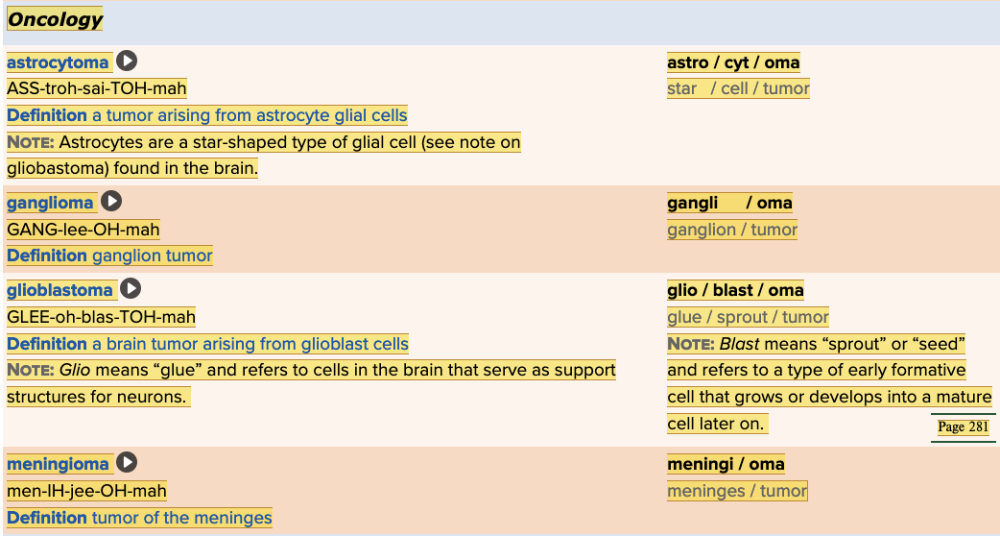
Chapter 5.4 Diagnosis and Pathology
- Assessment: Structure Table Part 4 - Oncology
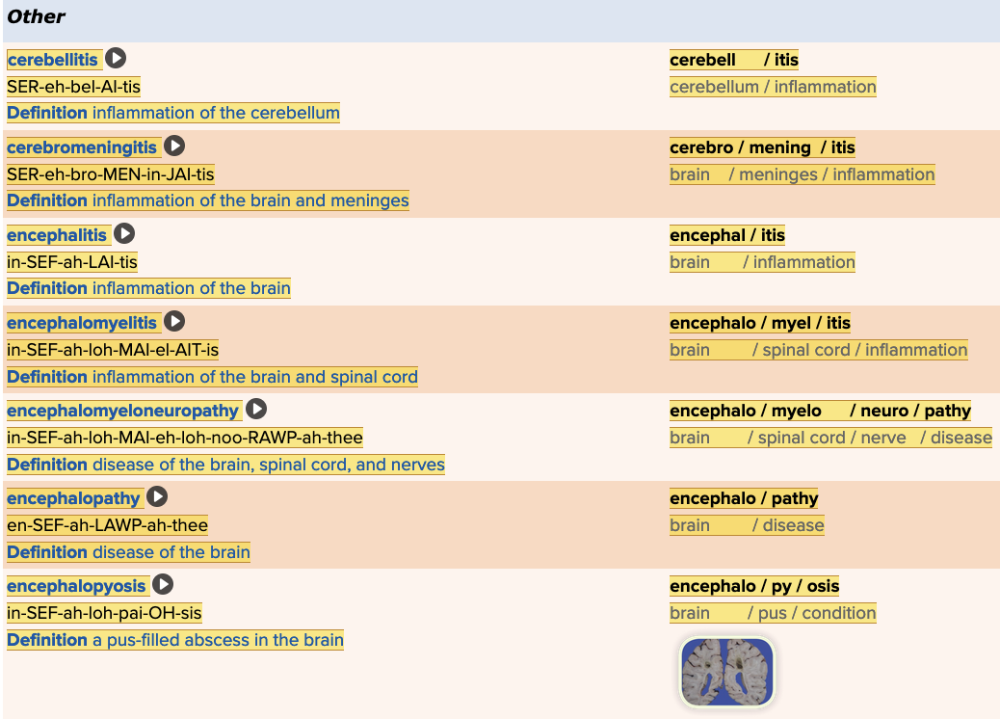
Chapter 5.4 Diagnosis and Pathology
- Assessment: Structure Table Part 5 - Other Part 1
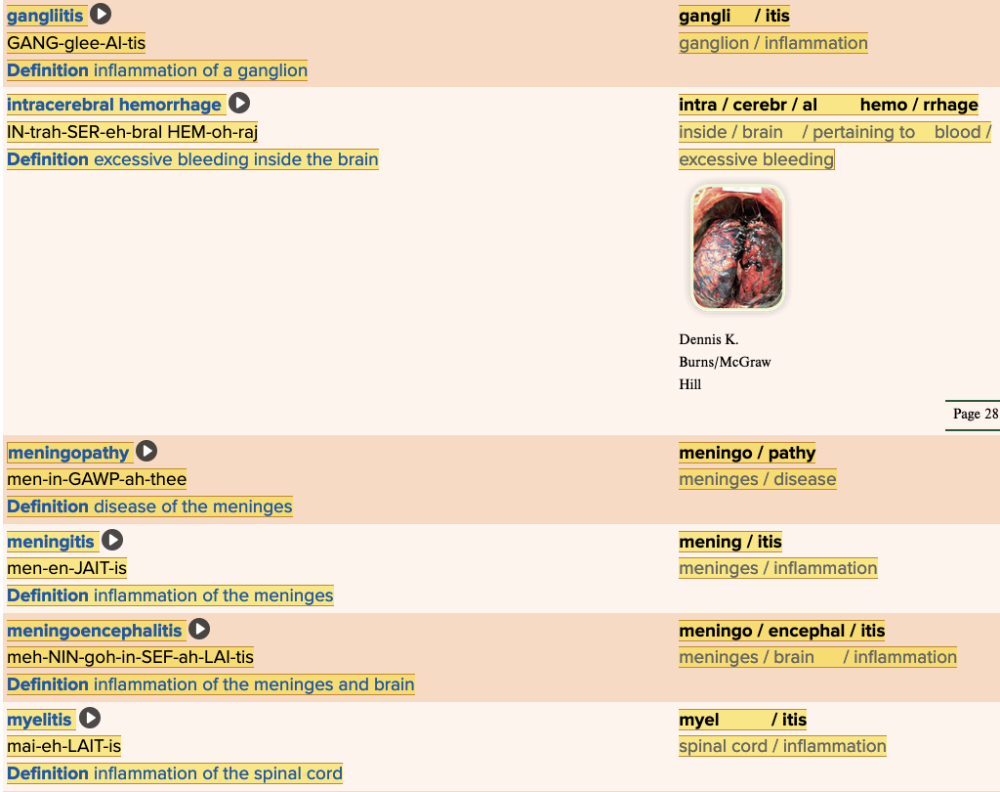
Chapter 5.4 Diagnosis and Pathology
- Assessment: Structure Table Part 5 - Other Part 2
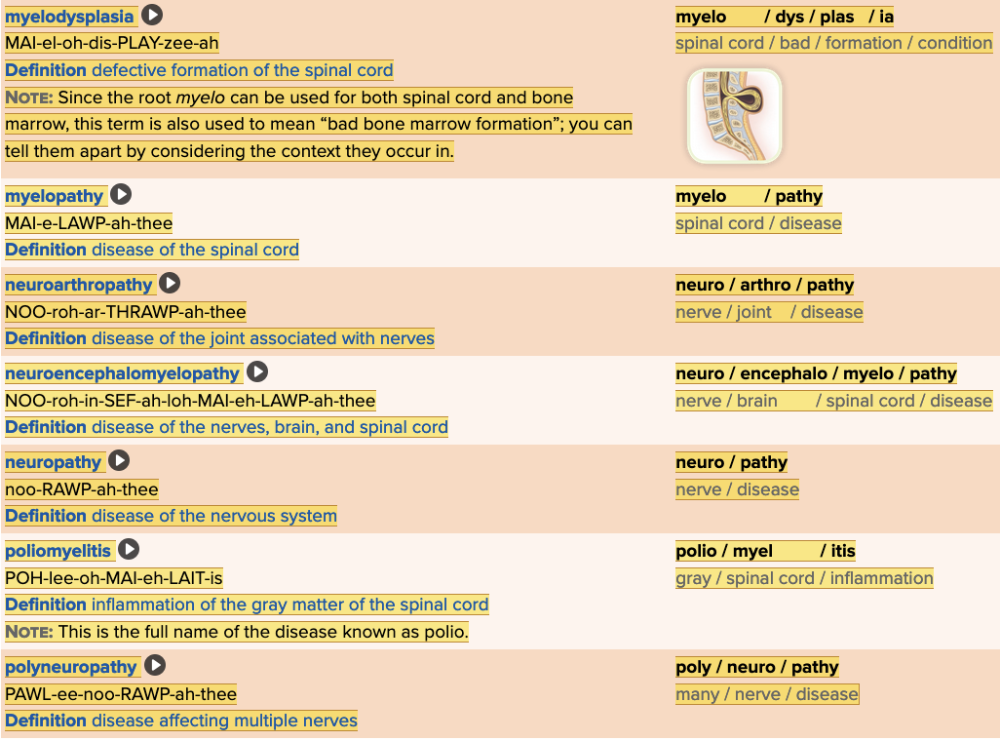
Chapter 5.4 Diagnosis and Pathology
- Assessment: Structure Table Part 5 - Other Part 3
...
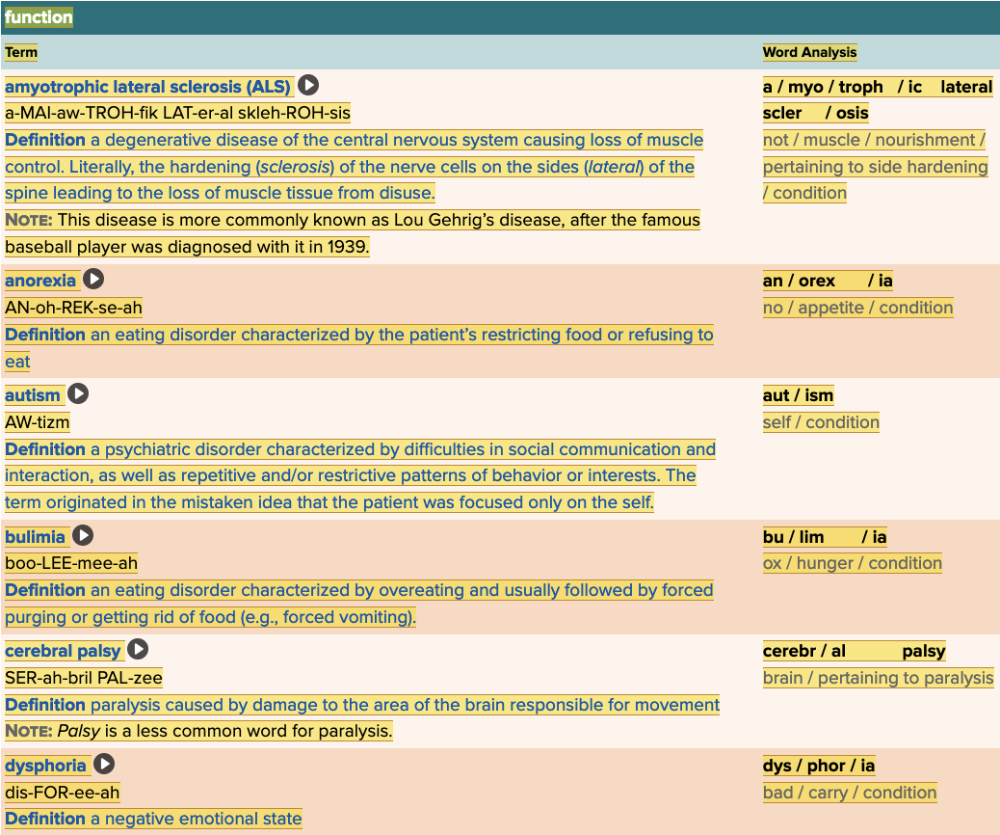
Chapter 5.4 Diagnosis and Pathology
- Assessment: Function Table Part 1
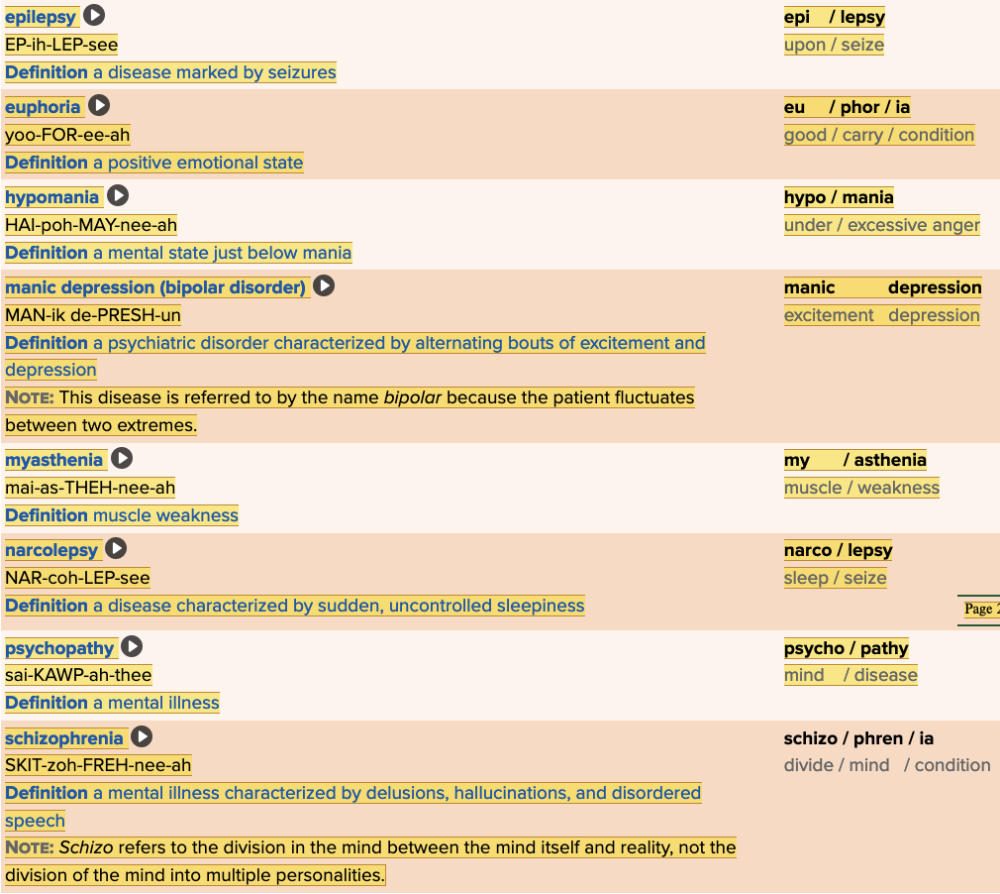
Chapter 5.4 Diagnosis and Pathology
- Assessment: Function Table Part 2

Chapter 5.4 Diagnosis and Pathology
- Assessment: Public Health Table
...
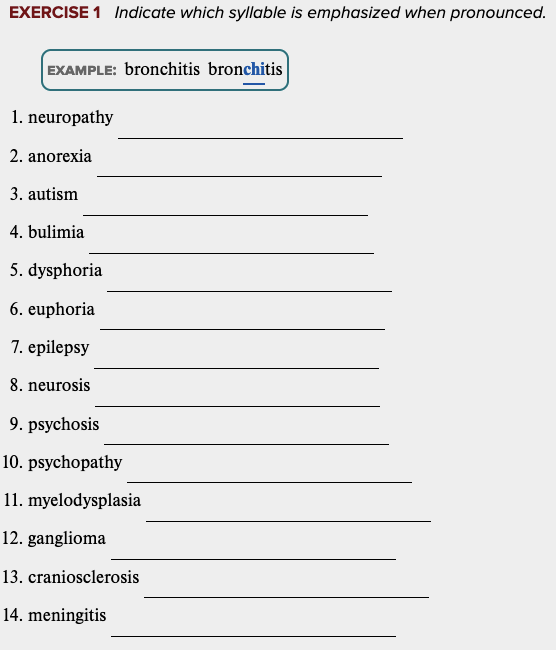
Learning Outcome 5.4 Exercises: Exercise 1.
...
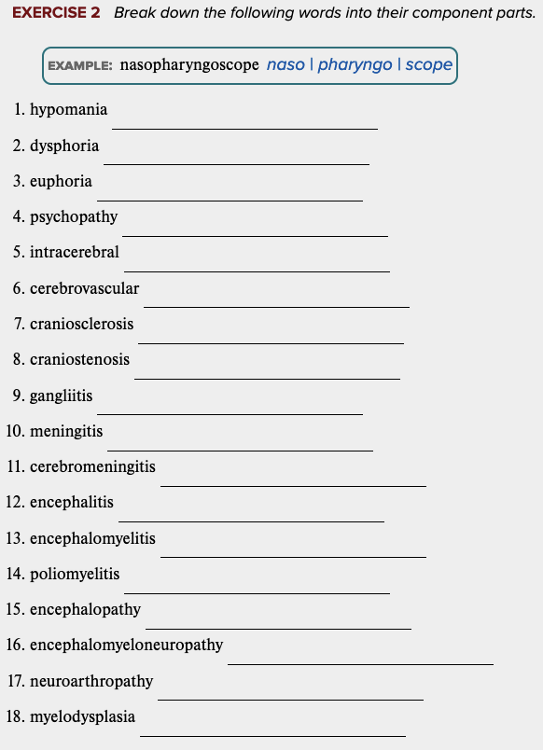
Learning Outcome 5.4 Exercises: Exercise 2.
...
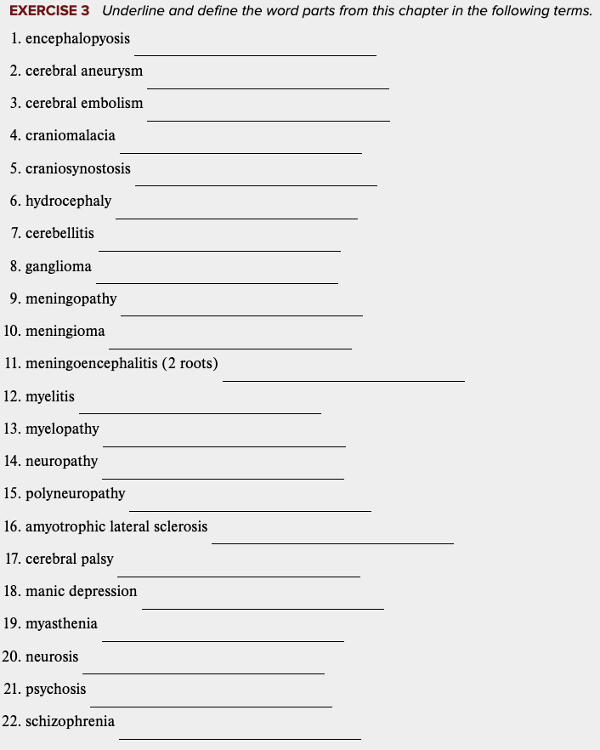
Learning Outcome 5.4 Exercises: Exercise 3.
...
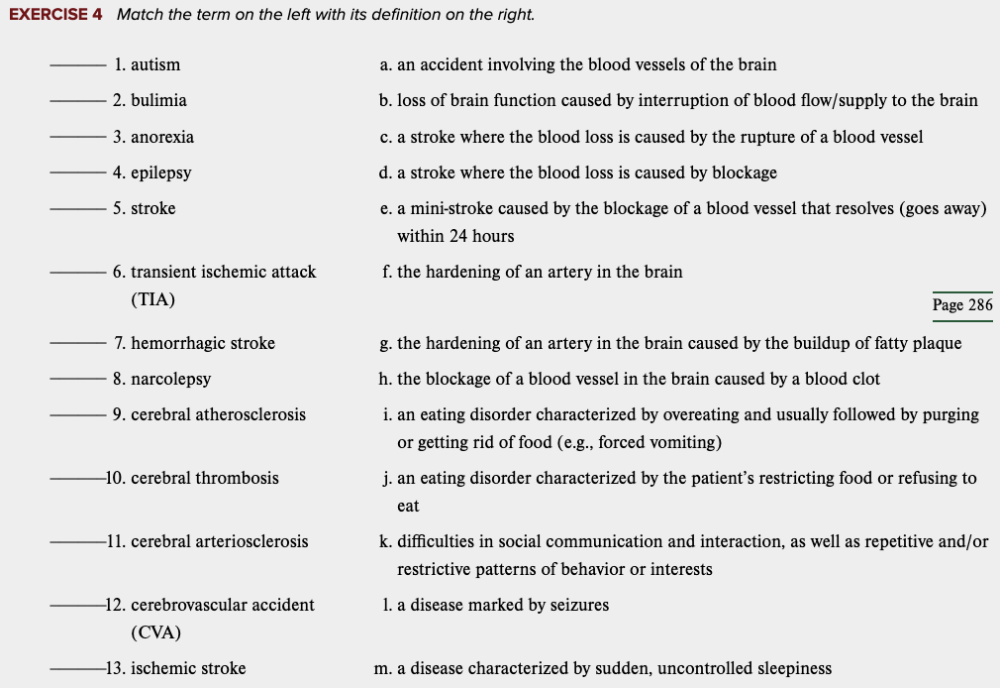
Learning Outcome 5.4 Exercises: Exercise 4.
...
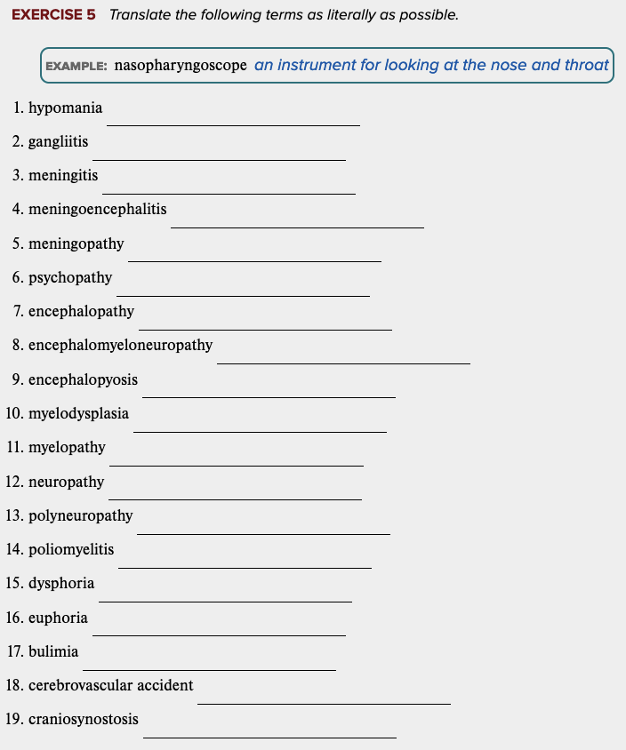
Learning Outcome 5.4 Exercises: Exercise 5.
...
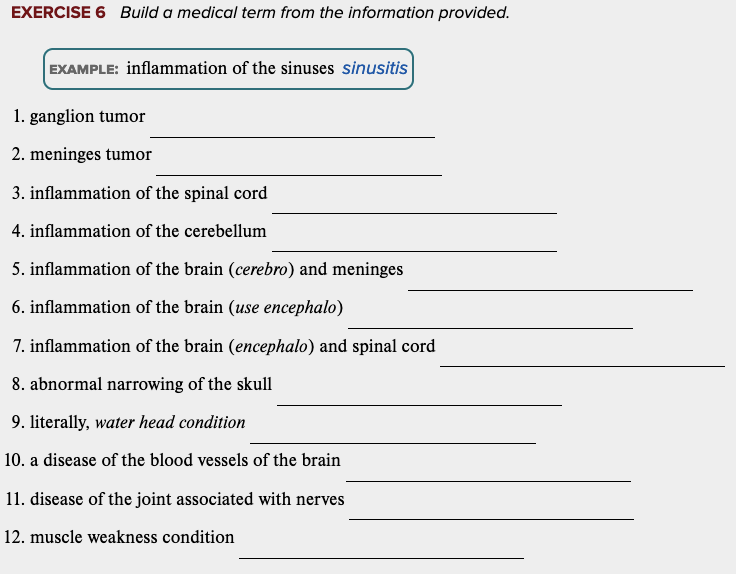
Learning Outcome 5.4 Exercises: Exercise 6.
...
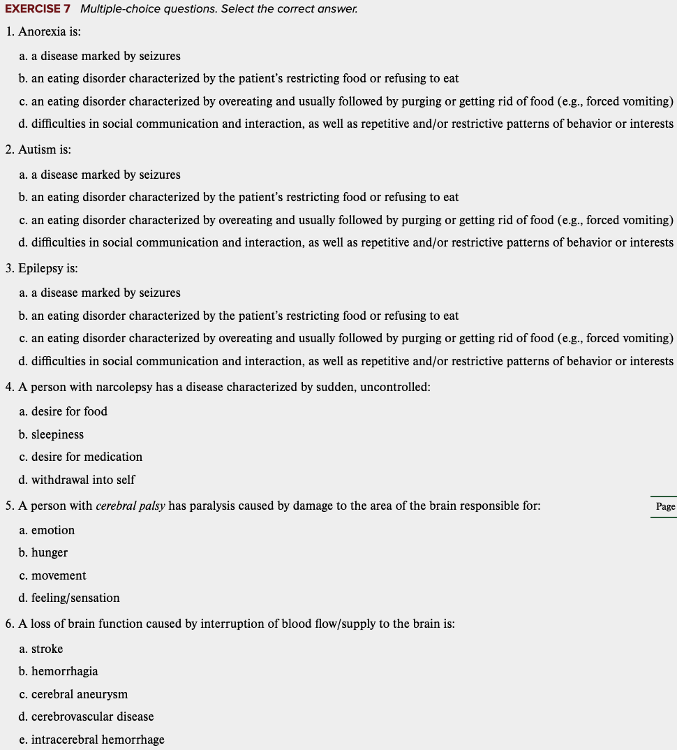
Learning Outcome 5.4 Exercises: Exercise 7.
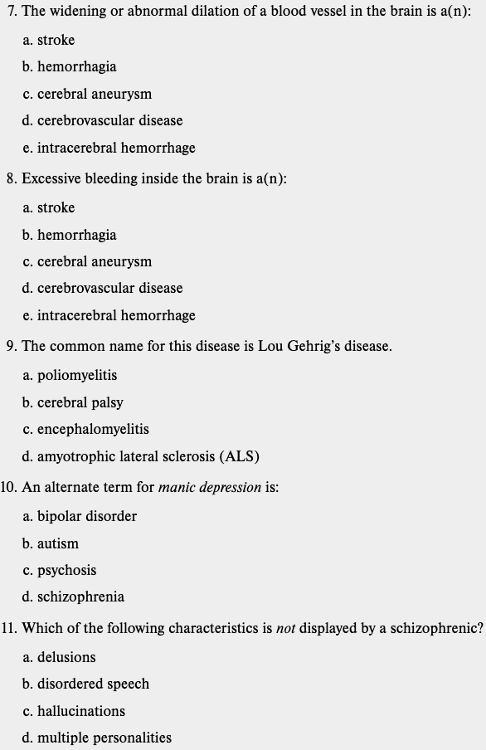
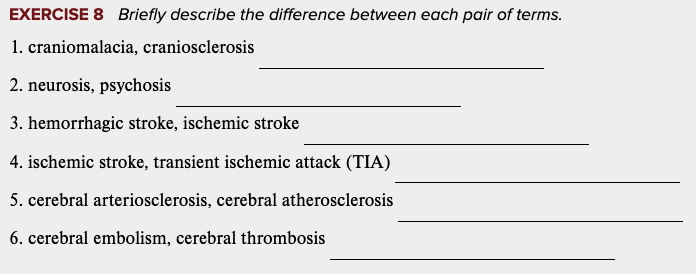
Learning Outcome 5.4 Exercises: Exercise 8.
...
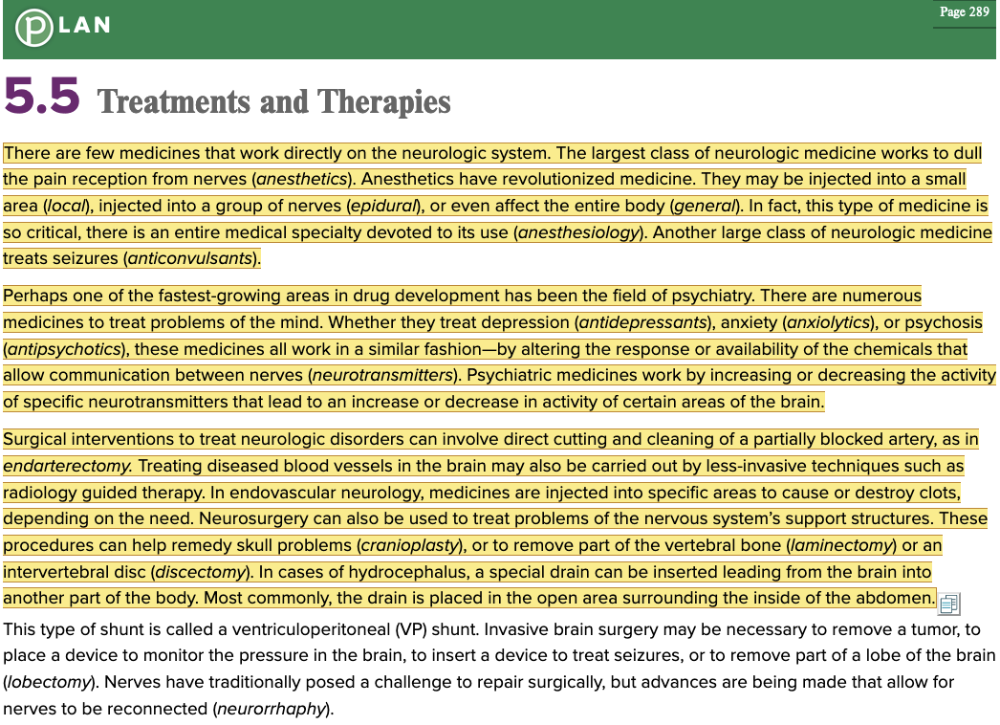
Chapter 5.5 Treatments and Therapies
- Plan
...
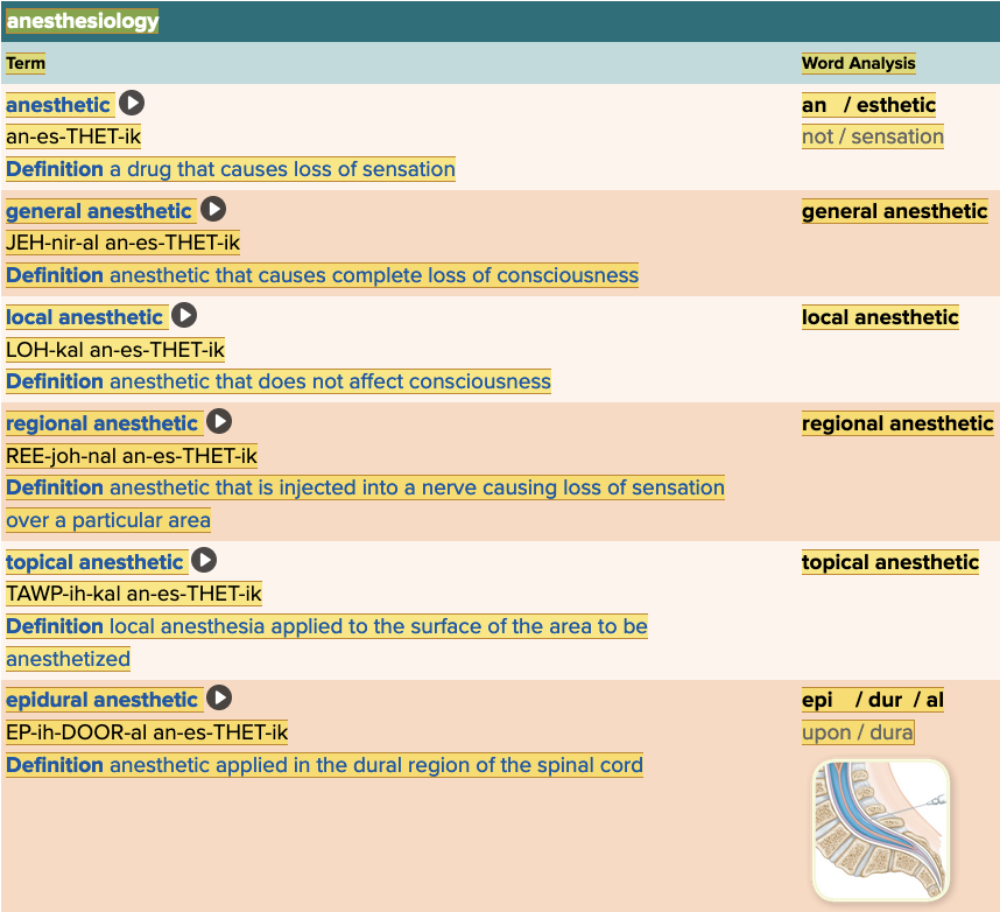
Chapter 5.5 Treatments and Therapies
- Plan: Anesthesiology Table
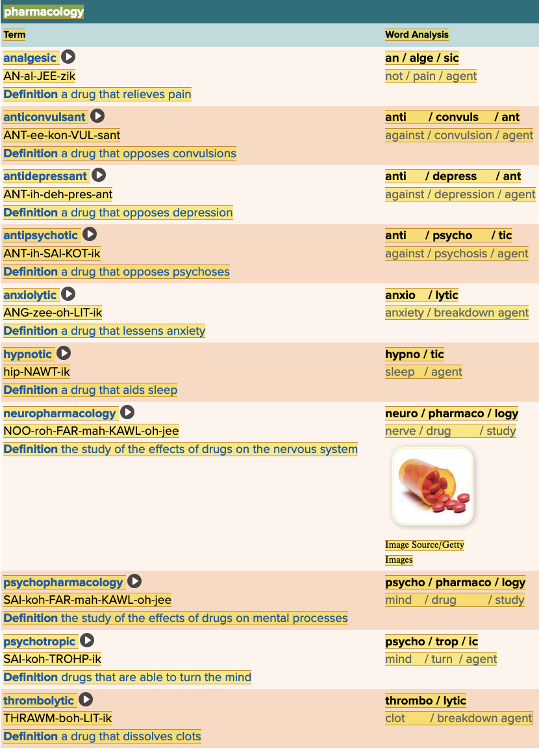
Chapter 5.5 Treatments and Therapies
- Plan: Pharmacology Table
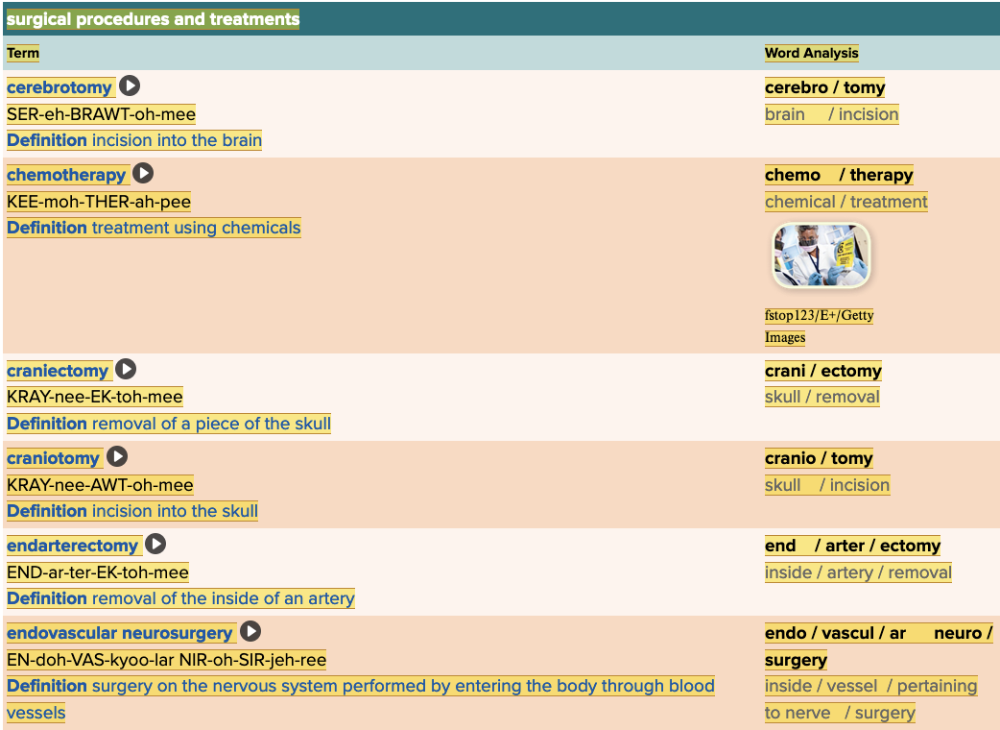
Chapter 5.5 Treatments and Therapies
- Plan: Surgical Procedures and Treatments Table Part 1
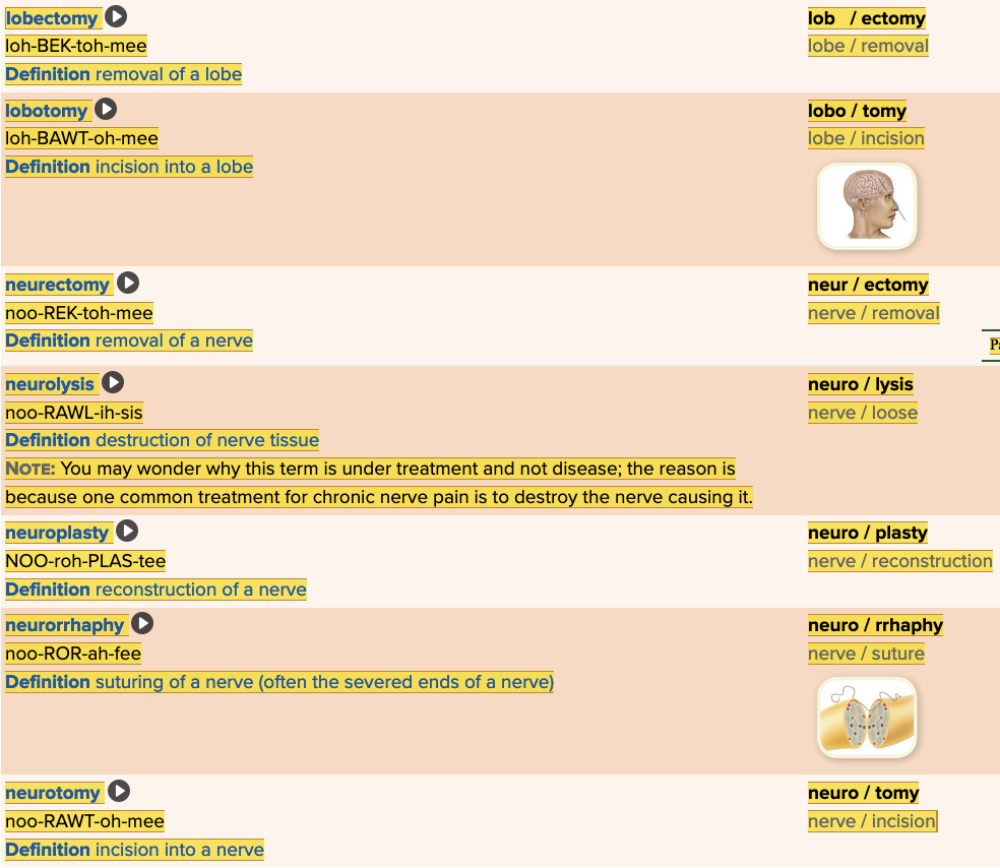
Chapter 5.5 Treatments and Therapies
- Plan: Surgical Procedures and Treatments Table Part 2
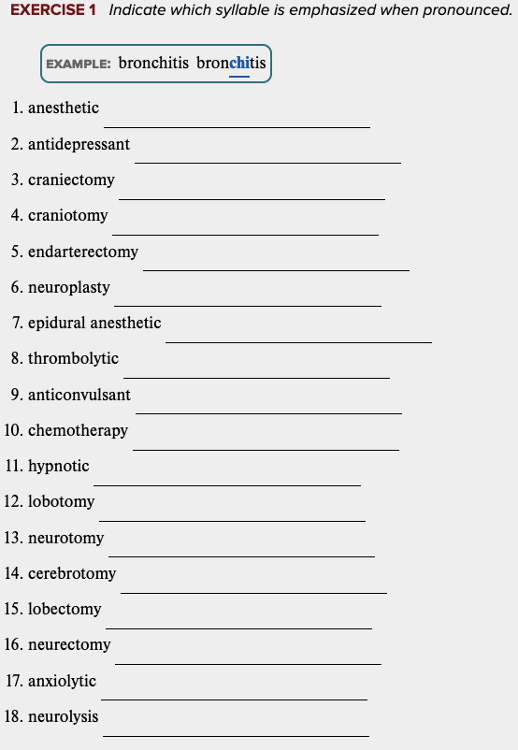
Learning Outcome 5.5 Exercises: Exercise 1.
...
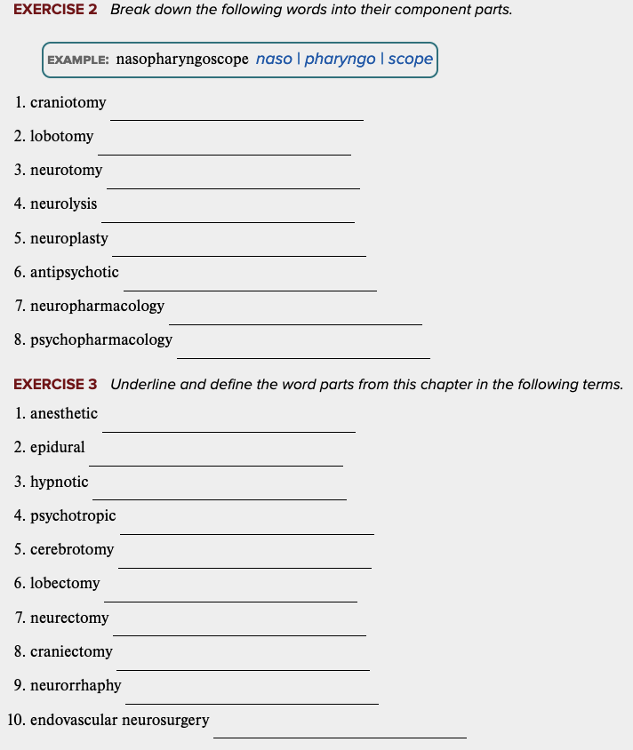
Learning Outcome 5.5 Exercises: Exercise 2, 3.
...
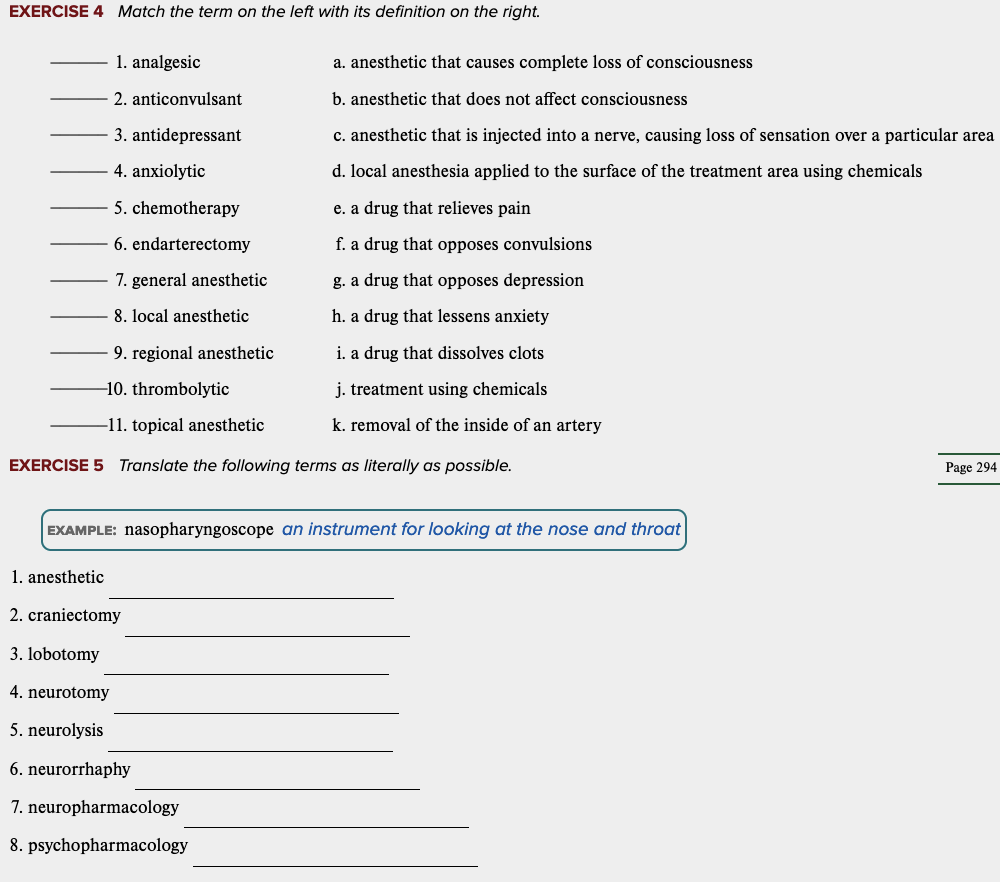
Learning Outcome 5.5 Exercises: Exercise 4, 5.
...
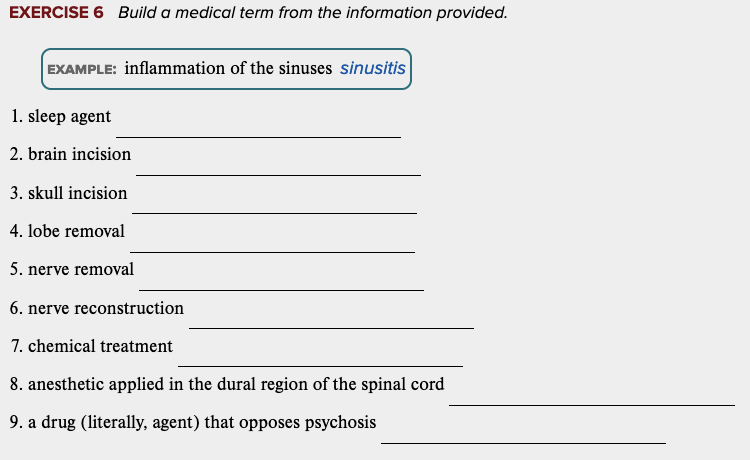
Learning Outcome 5.5 Exercises: Exercise 6.
...
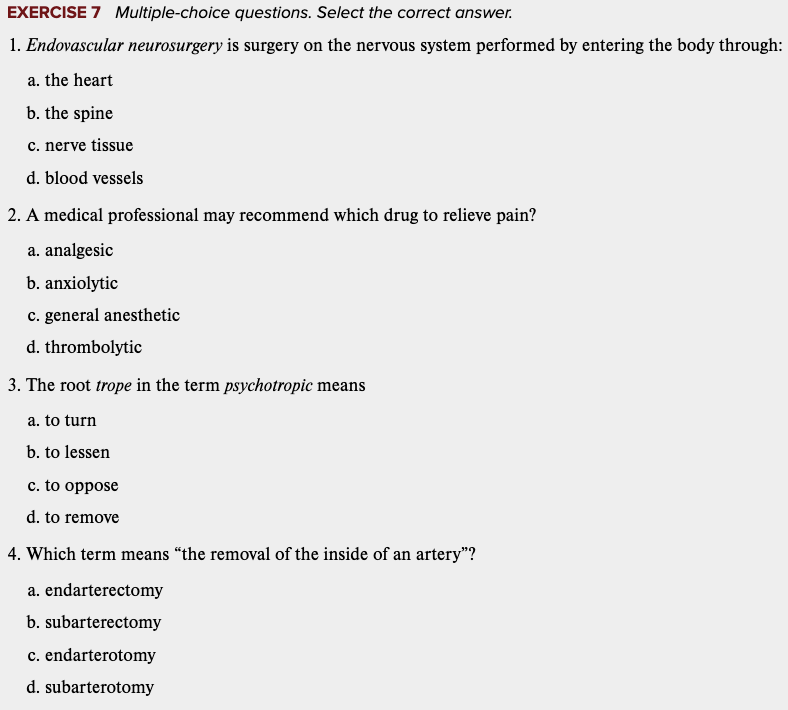
Learning Outcome 5.5 Exercises: Exercise 7, 8.


Chapter 5.6 Abbreviations
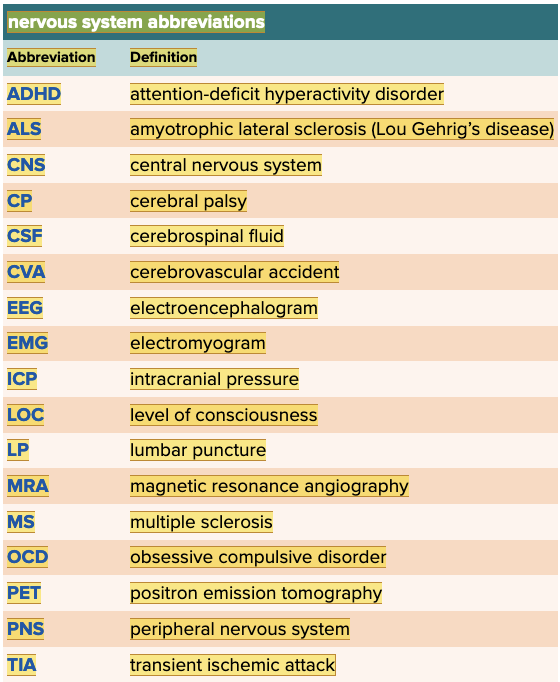
Chapter 5.6 Abbreviations
- Nervous System Abbreviations Table
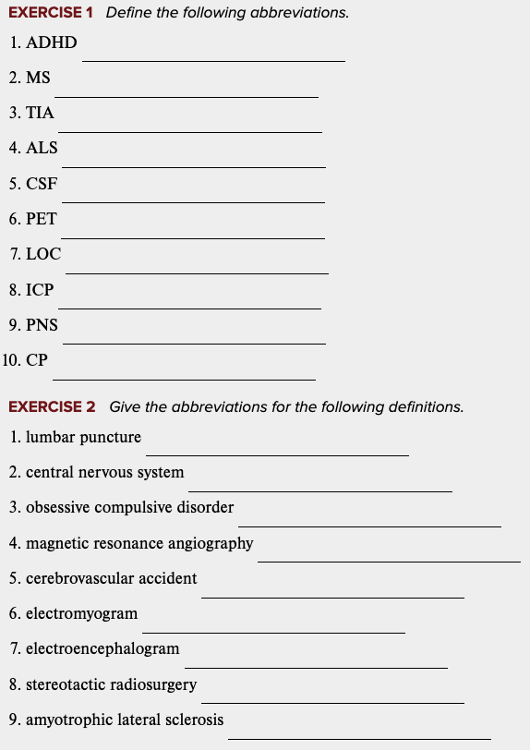
Learning Outcome 5.6 Exercises: Exercise 1, 2.
...
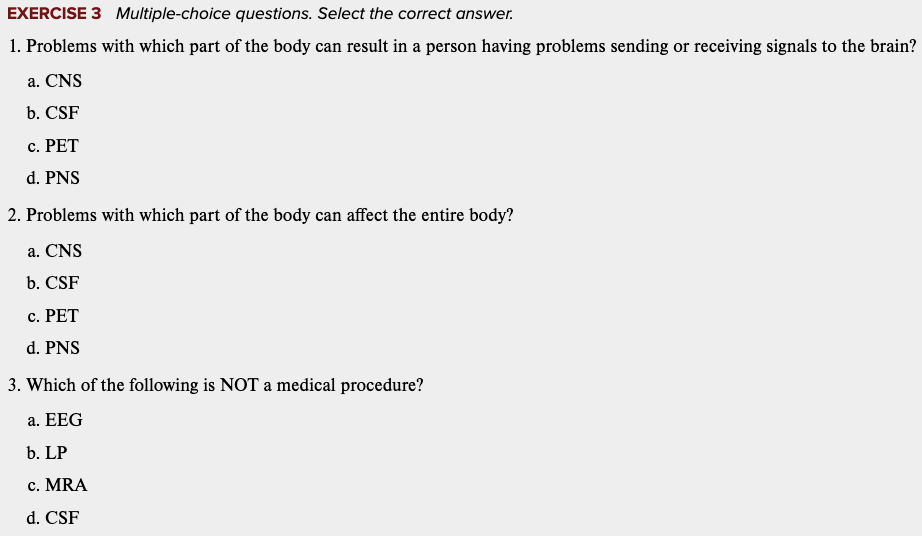
Learning Outcome 5.6 Exercises: Exercise 3.
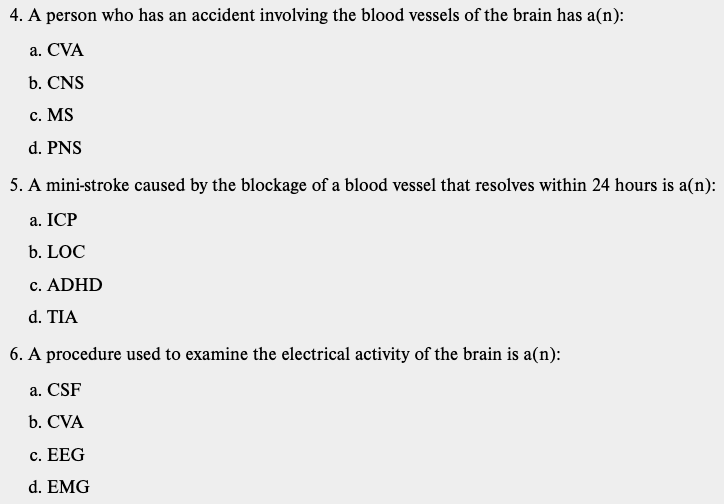
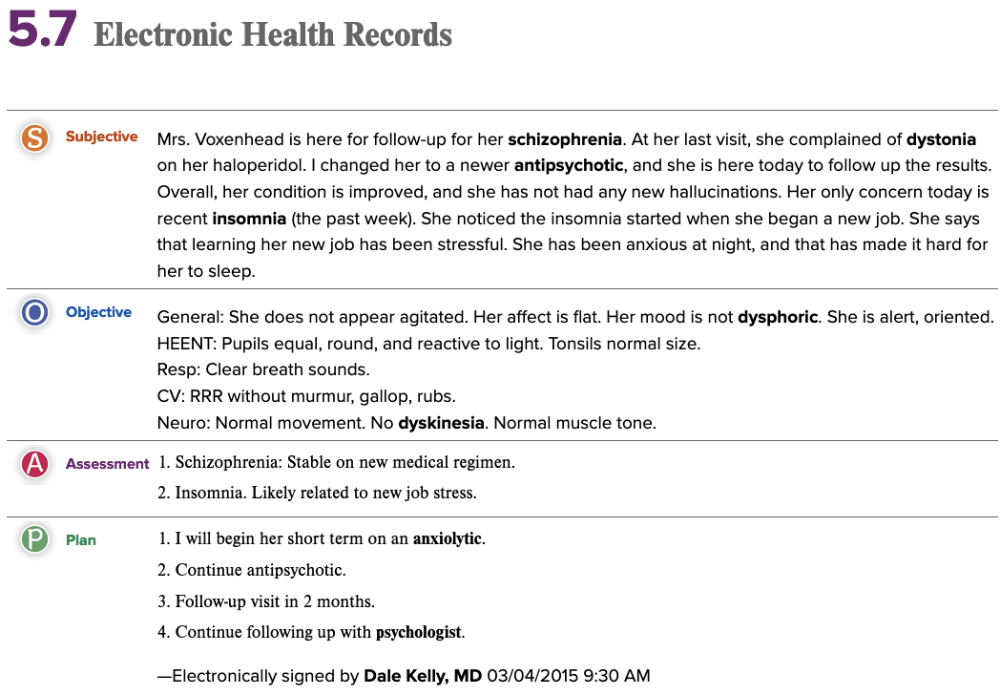
Chapter 5.7 Electronic Health Records

Chapter 5.7 Electronic Health Records
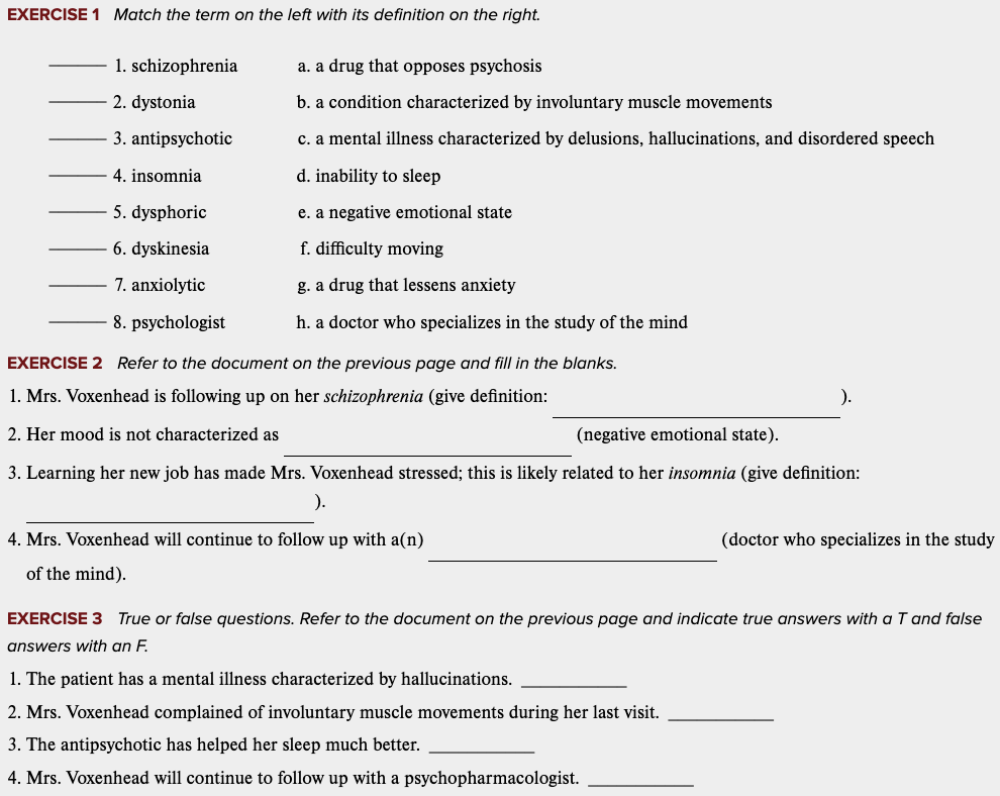
Learning Outcome 5.7 Exercises: Exercise 1, 2, 3, 4.
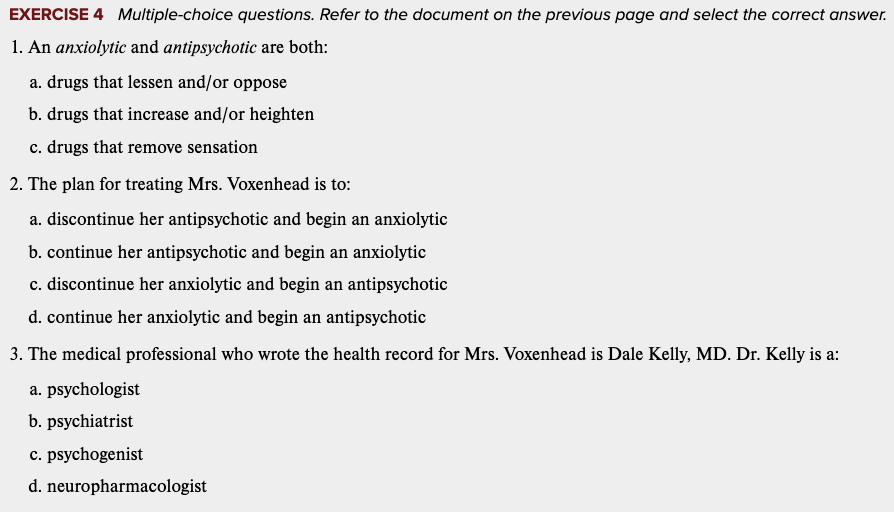
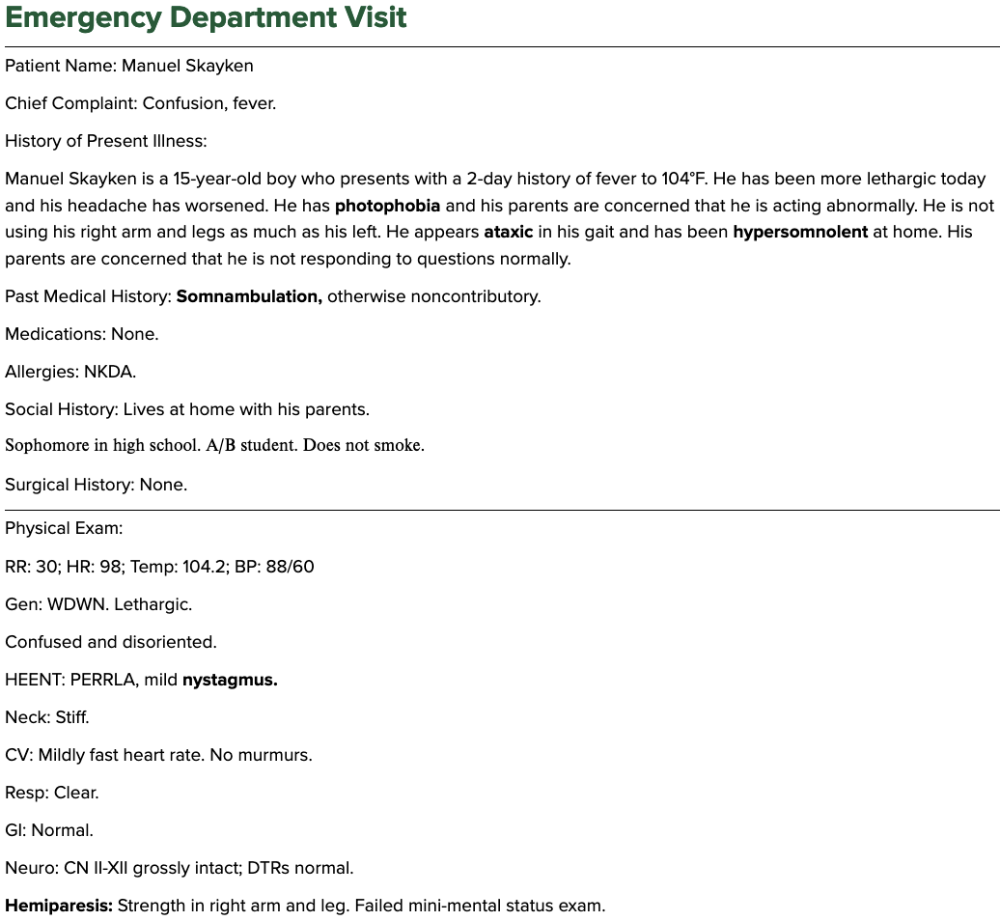
Chapter 5.7 Electronic Health Records
Emergency Department Visit
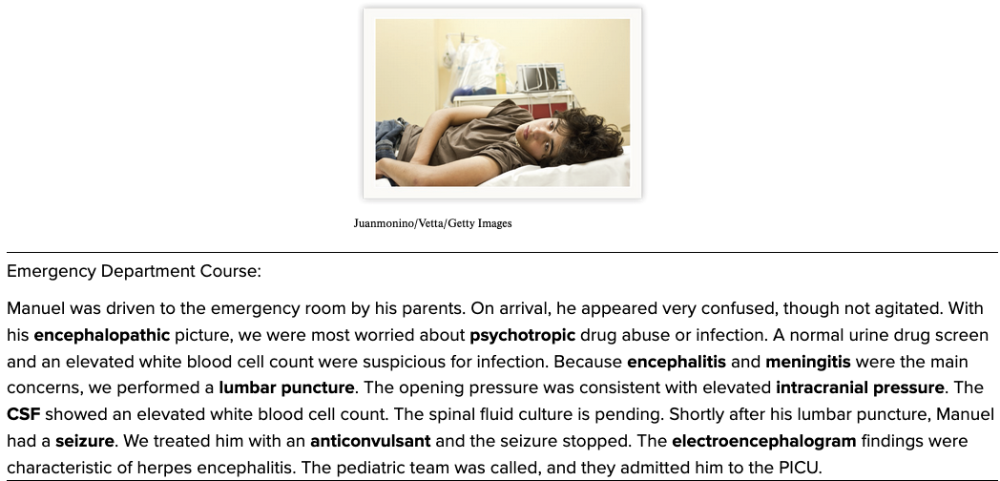
Chapter 5.7 Electronic Health Records
Emergency Department Visit
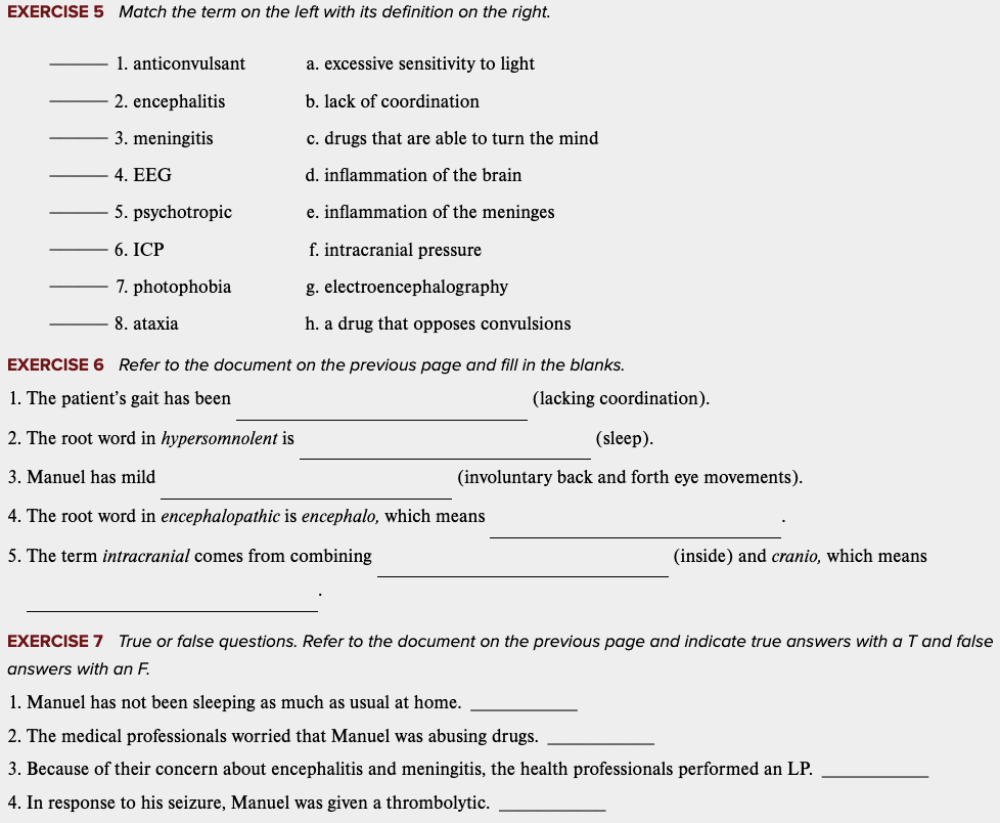
Learning Outcome 5.7 Exercises: Exercise 5, 6, 7, 8.
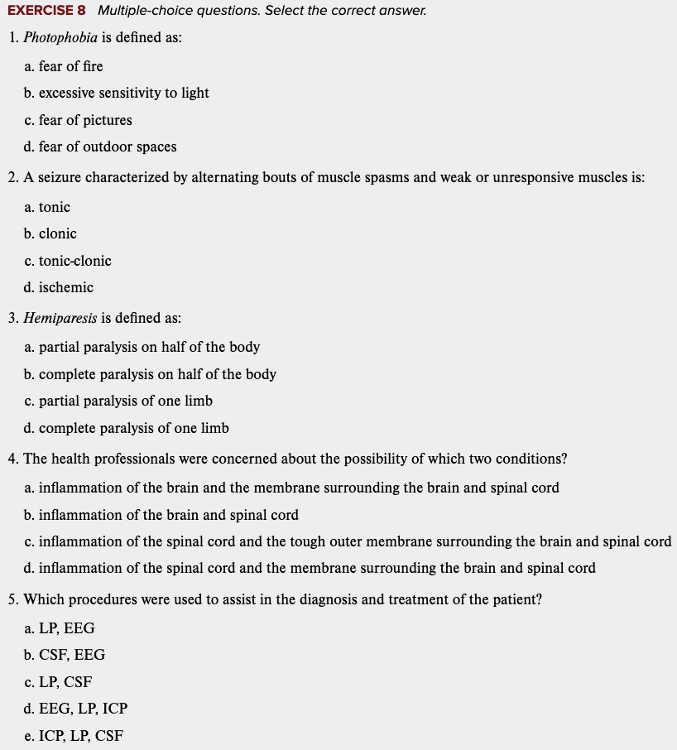
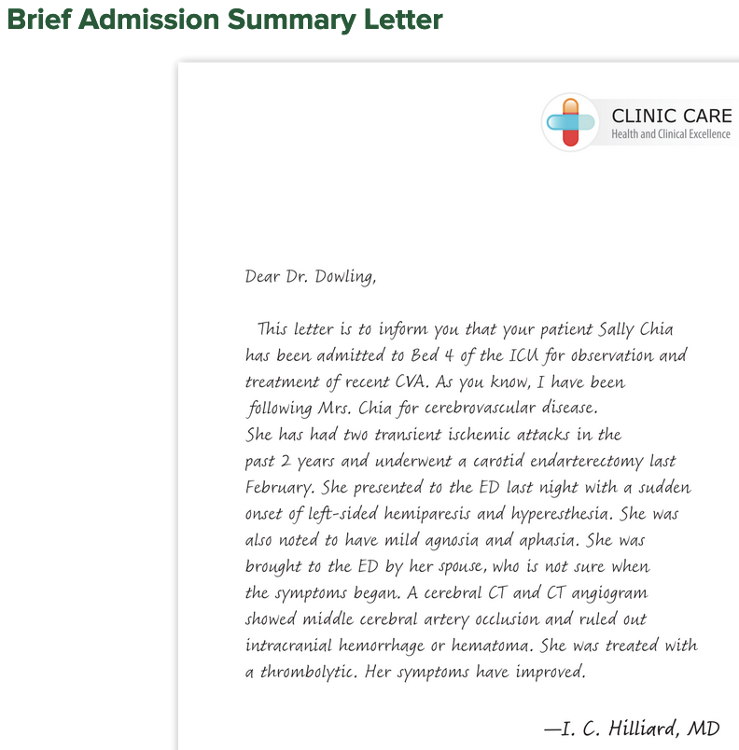
Chapter 5.7 Electronic Health Records
Brief Admission Summary Letter
...
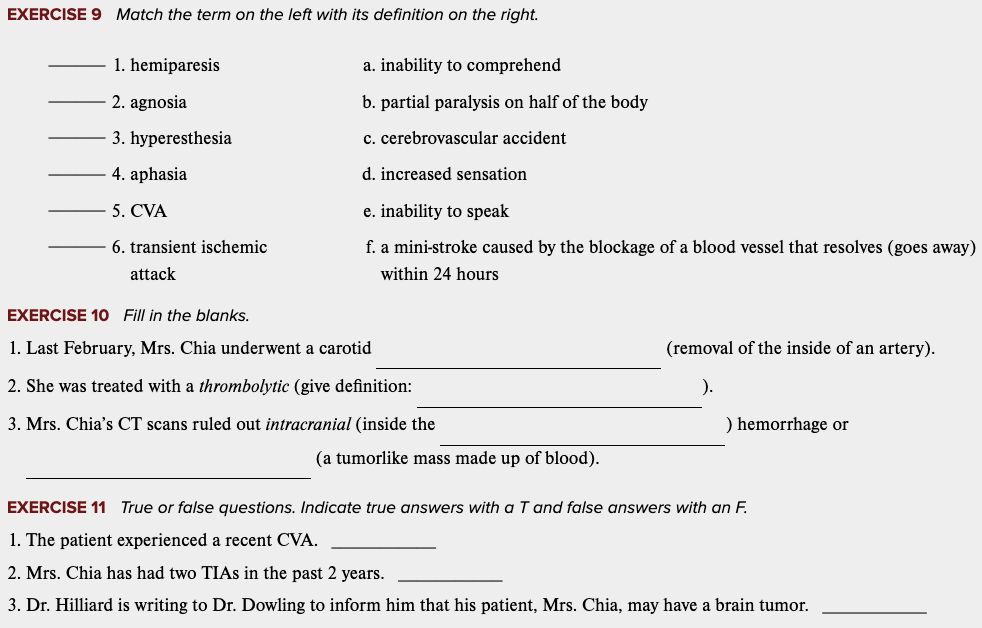
Learning Outcome 5.7 Exercises: Exercise 9, 10, 11, 12.
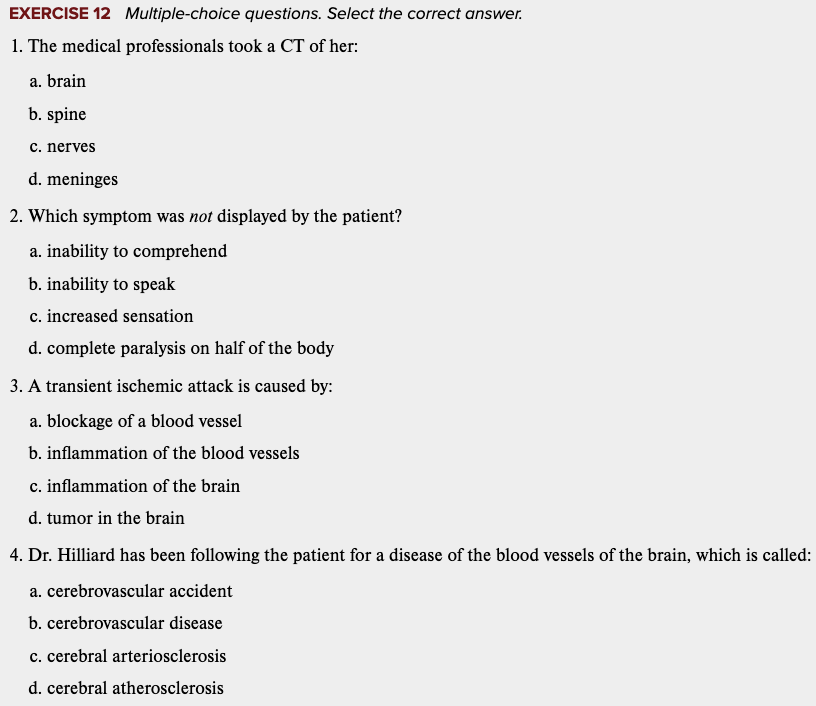
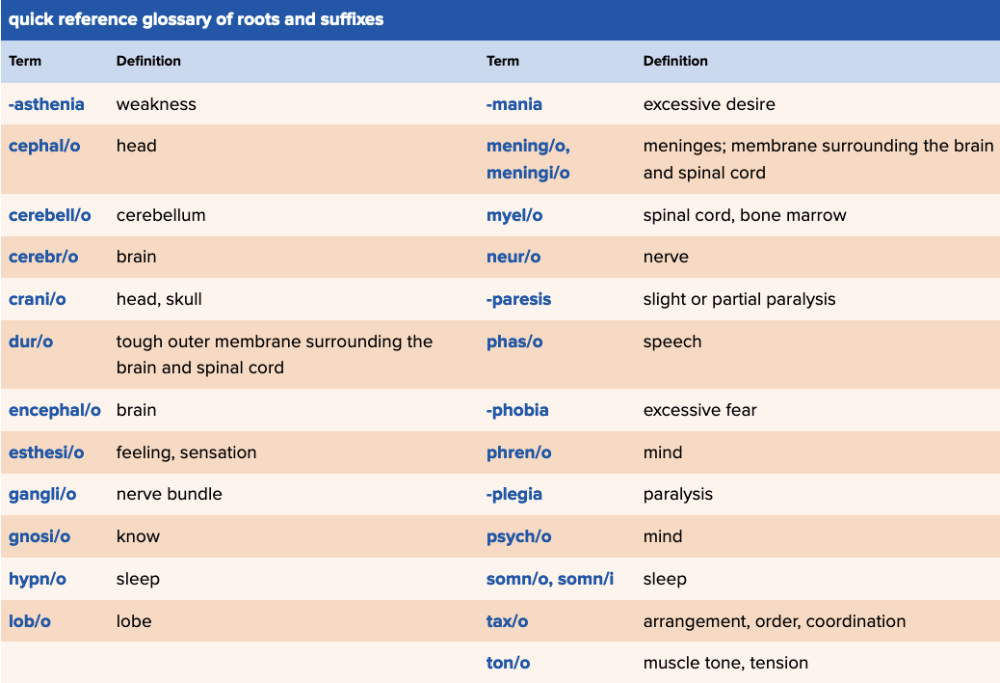
Chapter 5 Quick Reference
- Quick Reference Glossary of Roots and Suffixes Table
...
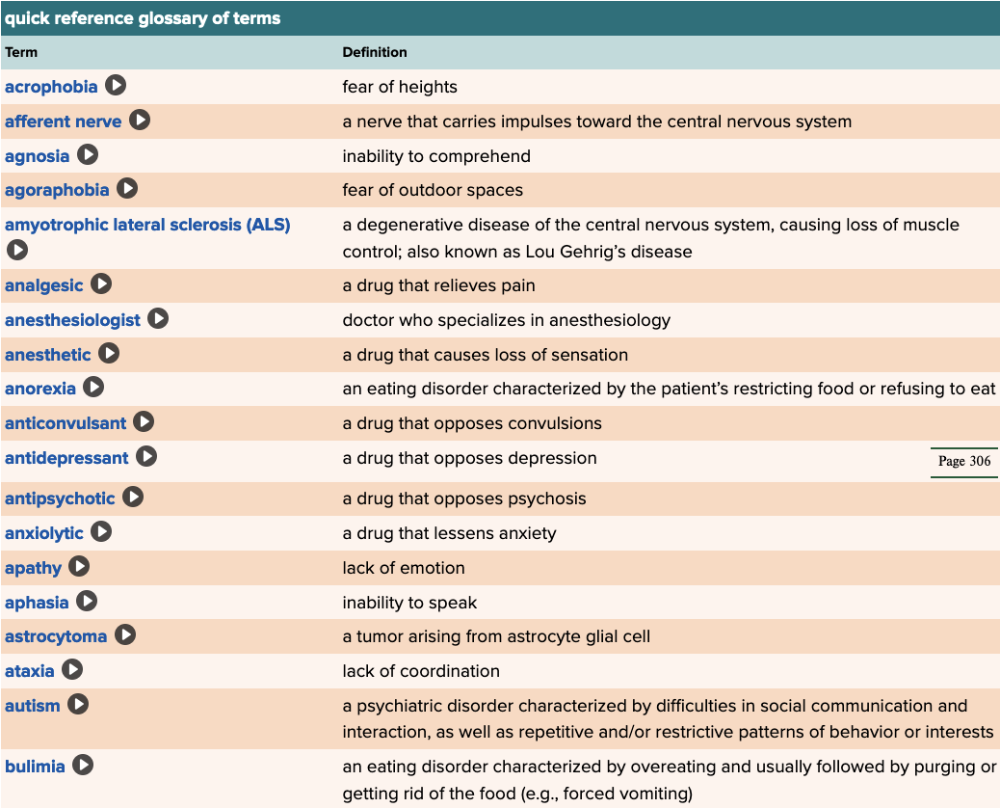
Chapter 5 Quick Reference
- Quick Reference Glossary of Terms Table Part 1
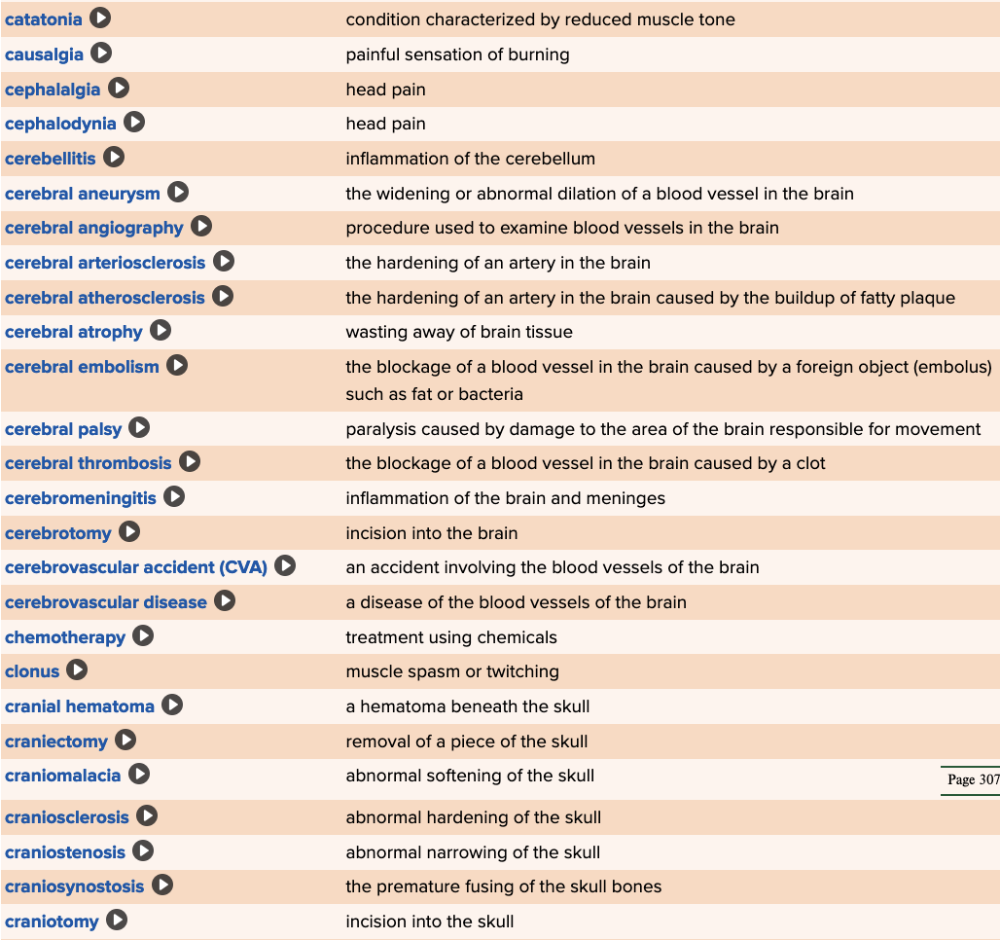
Chapter 5 Quick Reference
- Quick Reference Glossary of Terms Table Part 2
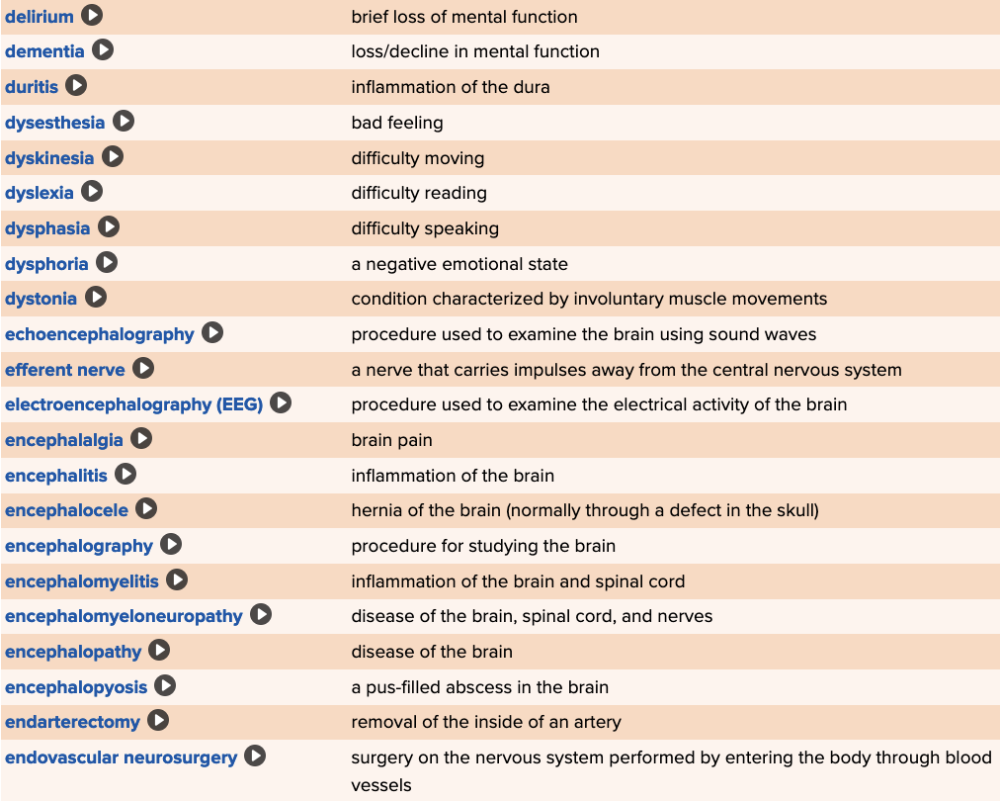
Chapter 5 Quick Reference
- Quick Reference Glossary of Terms Table Part 3
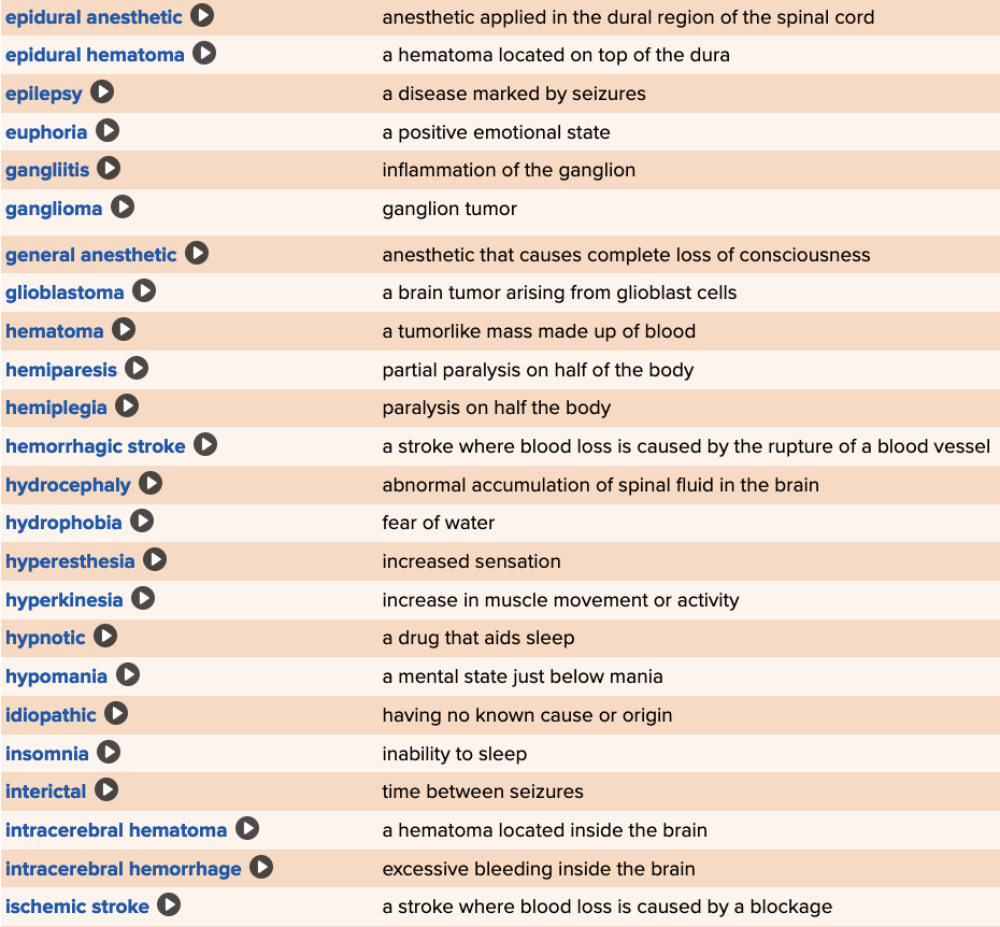
Chapter 5 Quick Reference
- Quick Reference Glossary of Terms Table Part 4
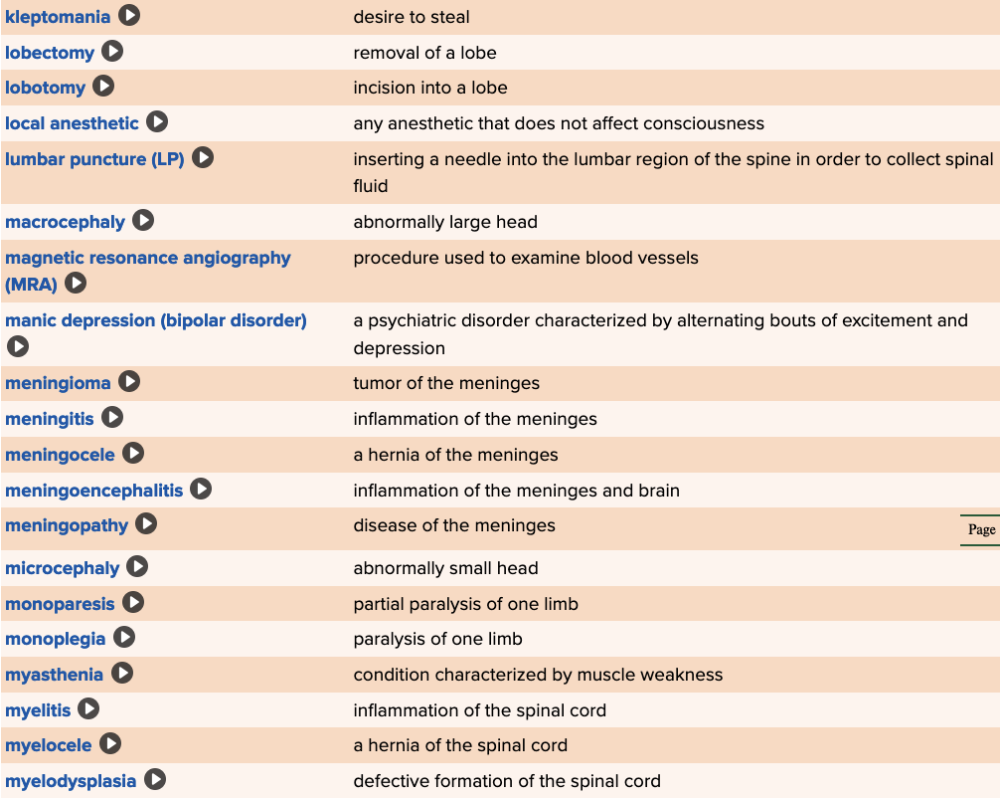
Chapter 5 Quick Reference
- Quick Reference Glossary of Terms Table Part 5
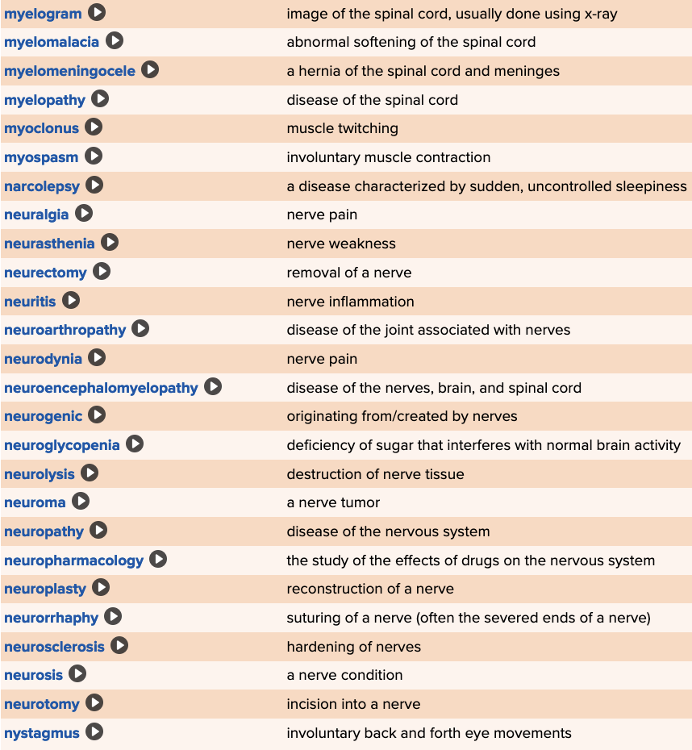
Chapter 5 Quick Reference
- Quick Reference Glossary of Terms Table Part 6
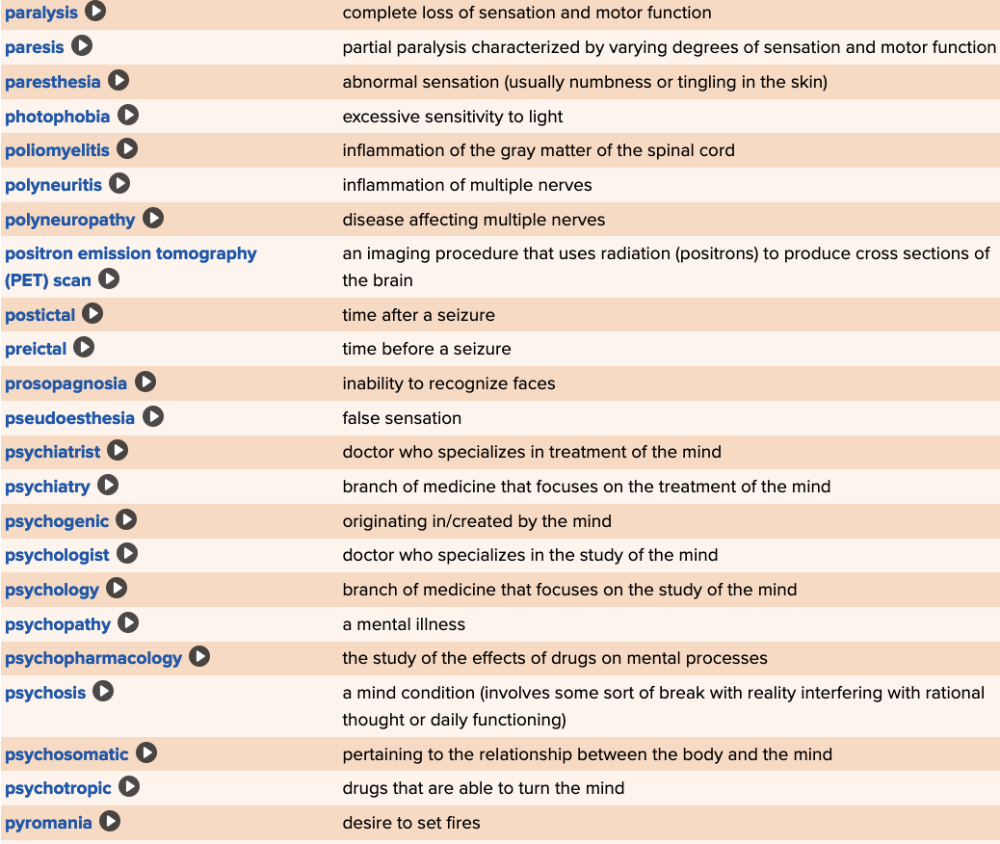
Chapter 5 Quick Reference
- Quick Reference Glossary of Terms Table Part 7
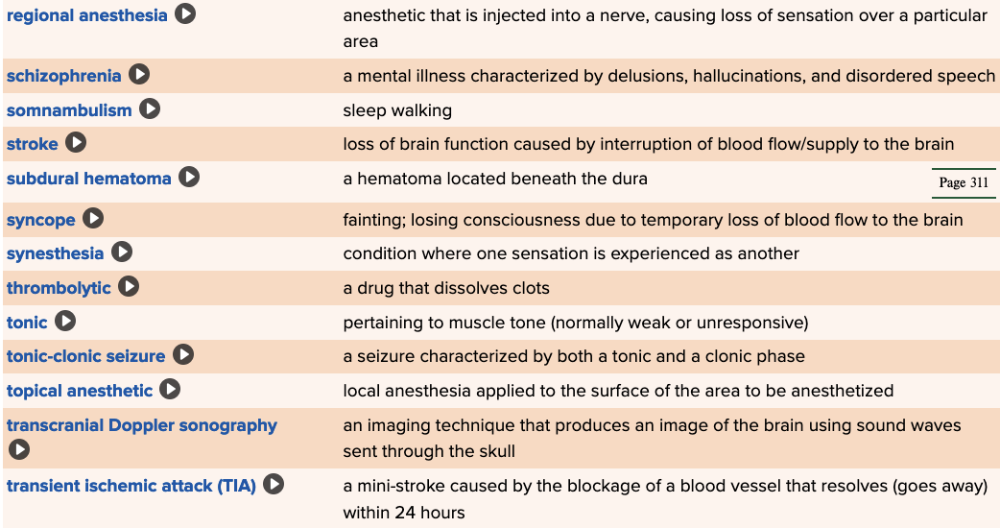
Chapter 5 Quick Reference
- Quick Reference Glossary of Terms Table Part 8
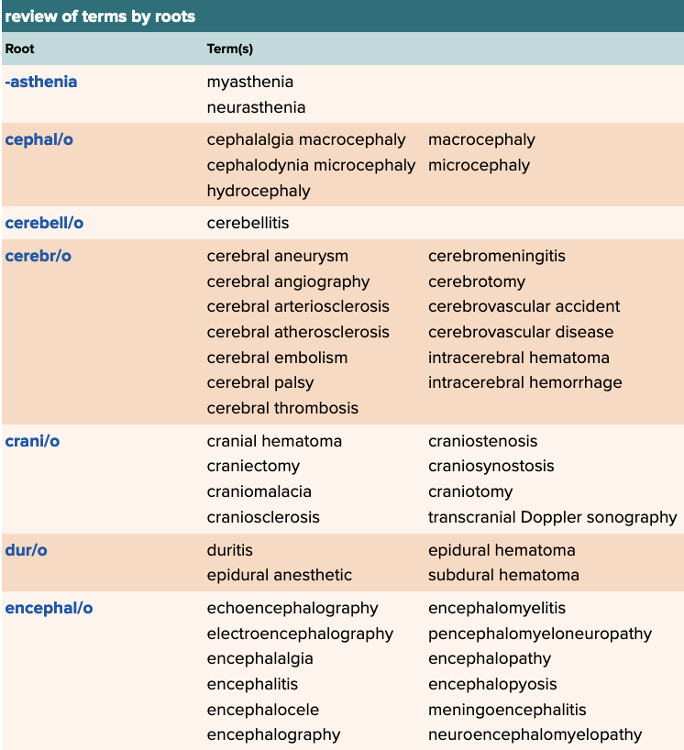
Chapter 5 Quick Reference
- Review of Terms by Roots Table Part 1
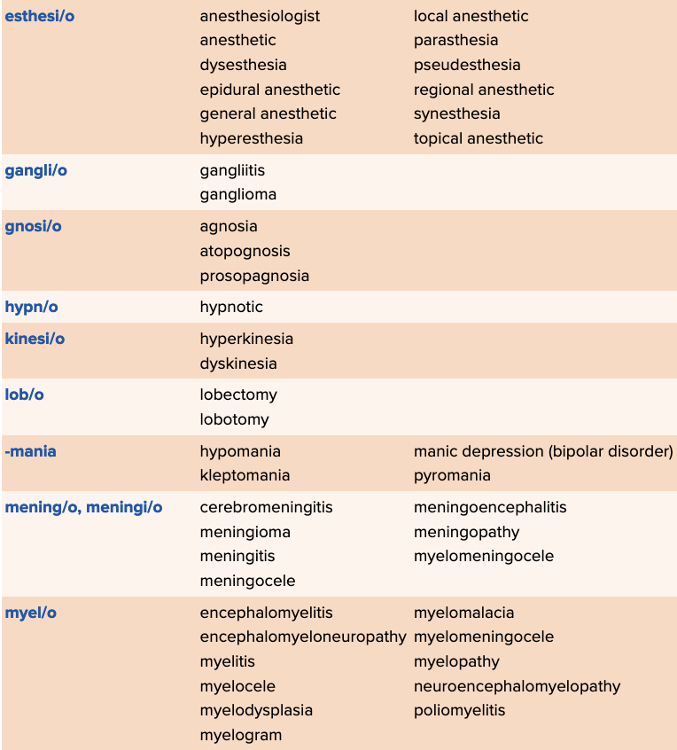
Chapter 5 Quick Reference
- Review of Terms by Roots Table Part 2
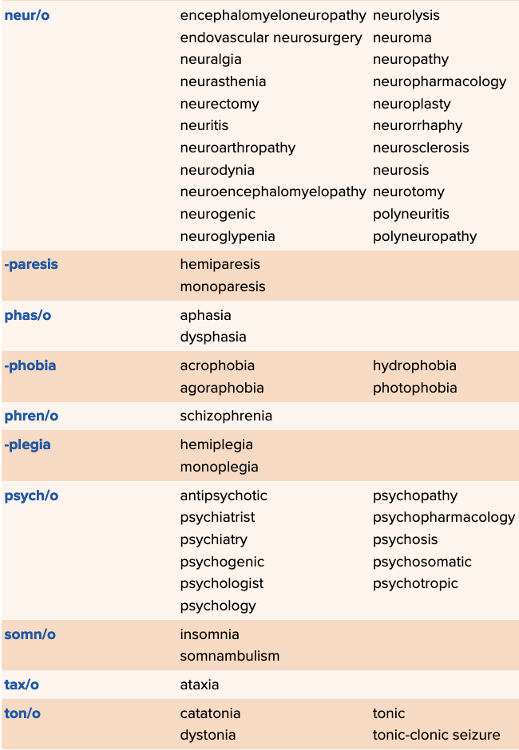
Chapter 5 Quick Reference
- Review of Terms by Roots Table Part 3
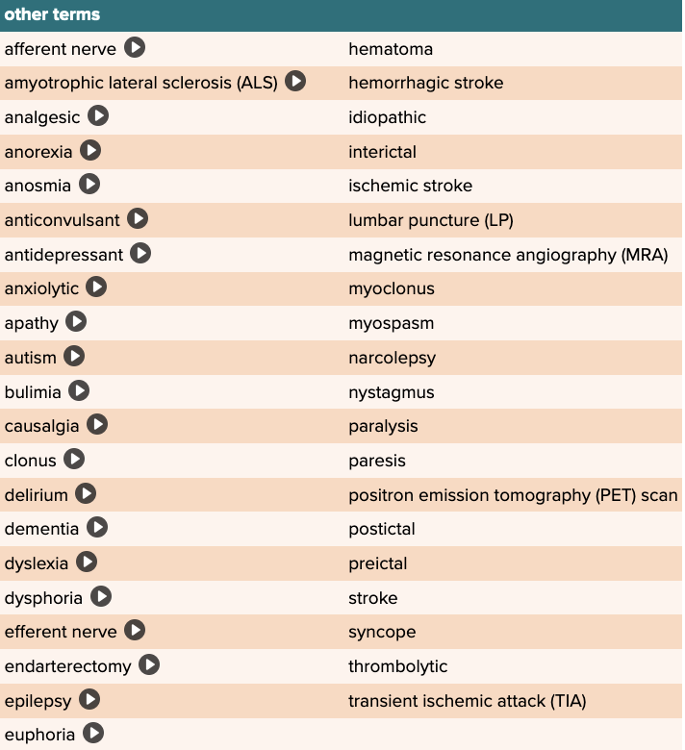
Chapter 5 Quick Reference
- Other Terms Table
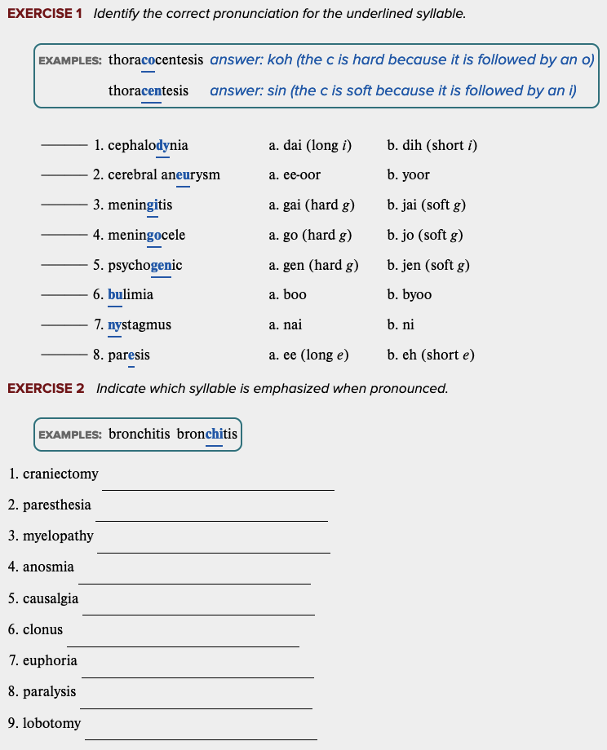
Chapter 5 Review Exercises: Exercise 1, 2.
...
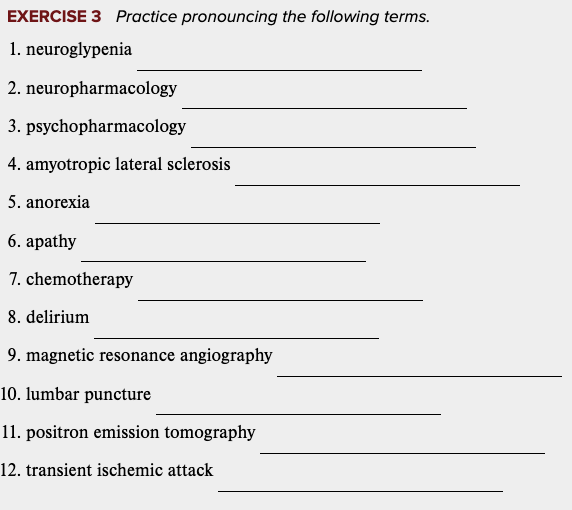
Chapter 5 Review Exercises: Exercise 3.
...
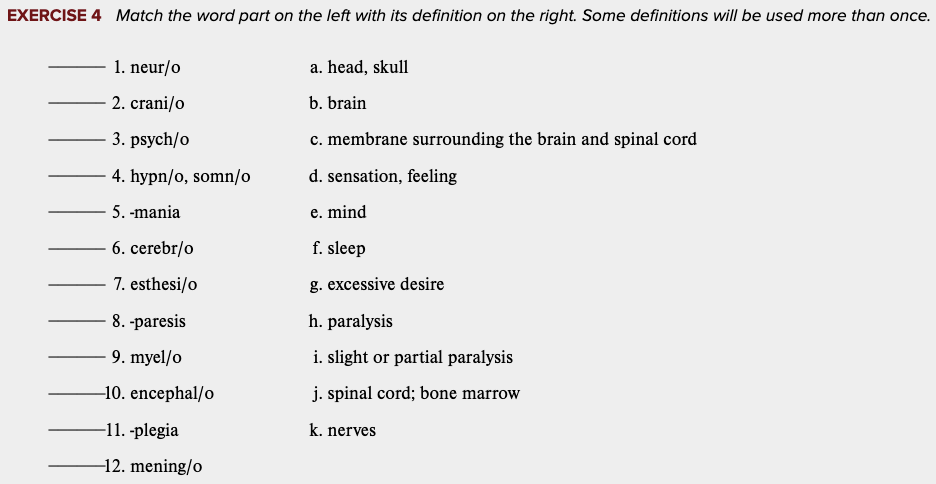
Chapter 5 Review Exercises: Exercise 4.
...
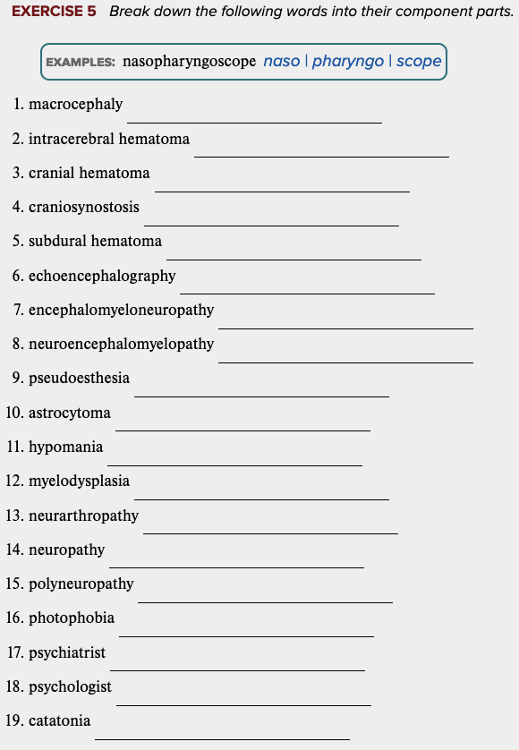
Chapter 5 Review Exercises: Exercise 5.
...
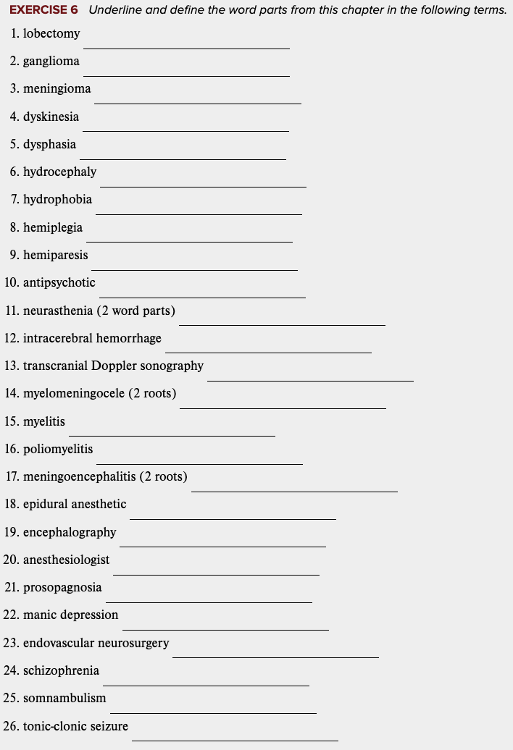
Chapter 5 Review Exercises: Exercise 6.
...
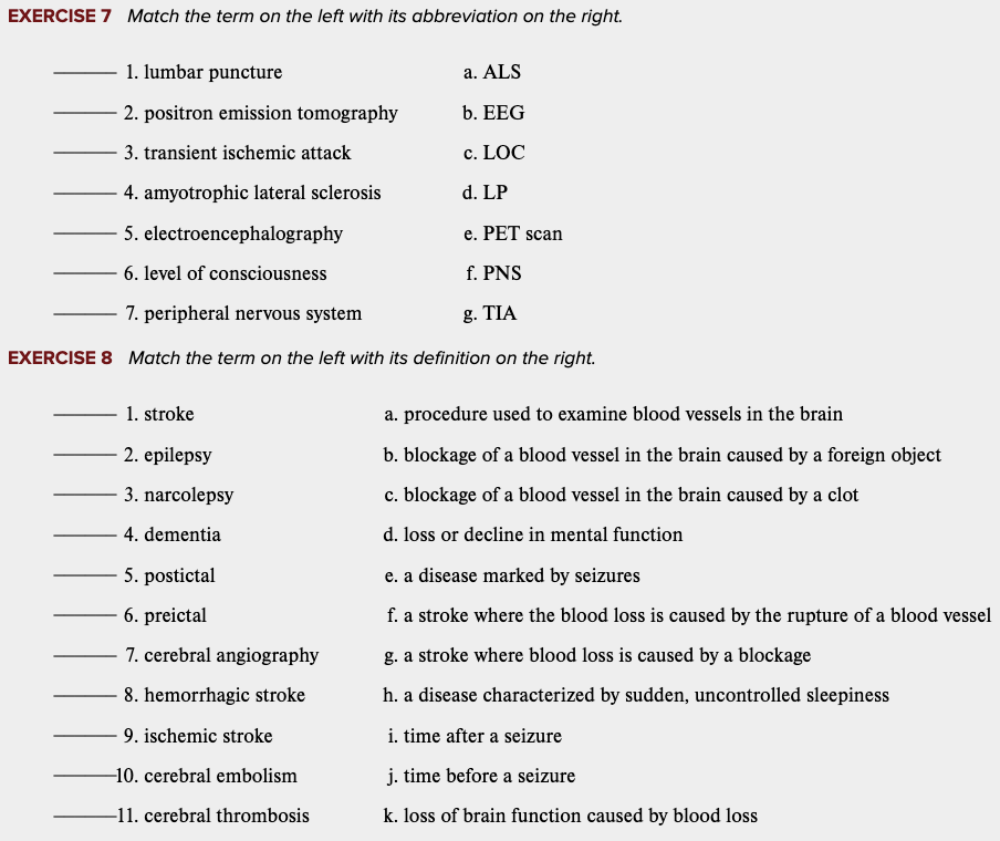
Chapter 5 Review Exercises: Exercise 7, 8.
...

Chapter 5 Review Exercises: Exercise 9.
...
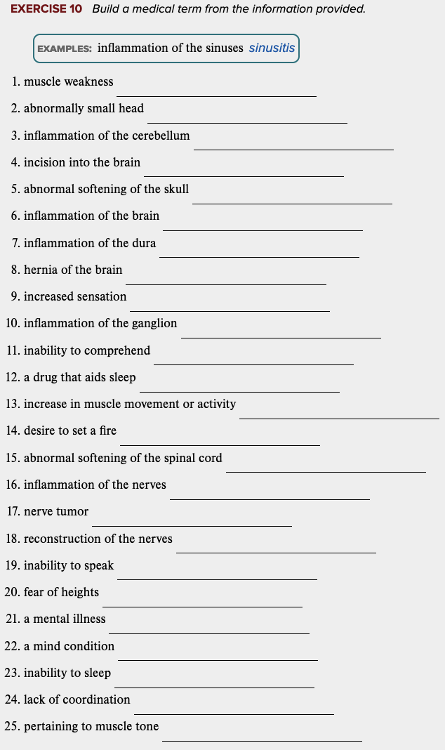
Chapter 5 Review Exercises: Exercise 10.
...
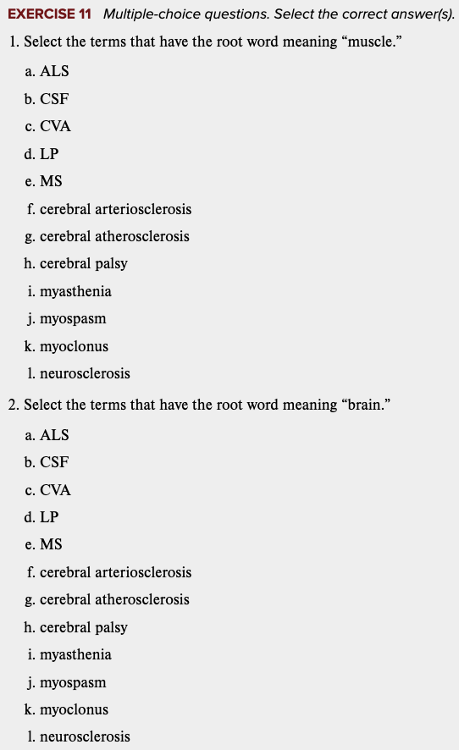
Chapter 5 Review Exercises: Exercise 11.
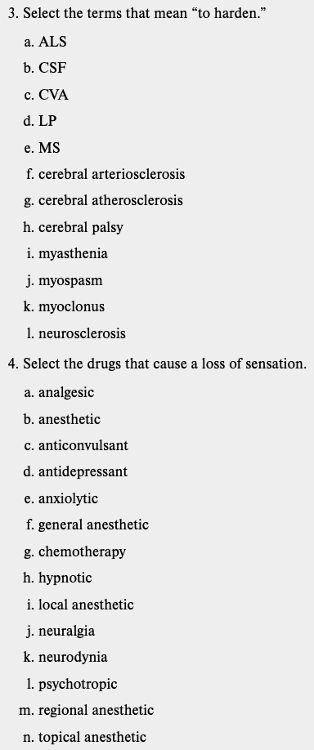
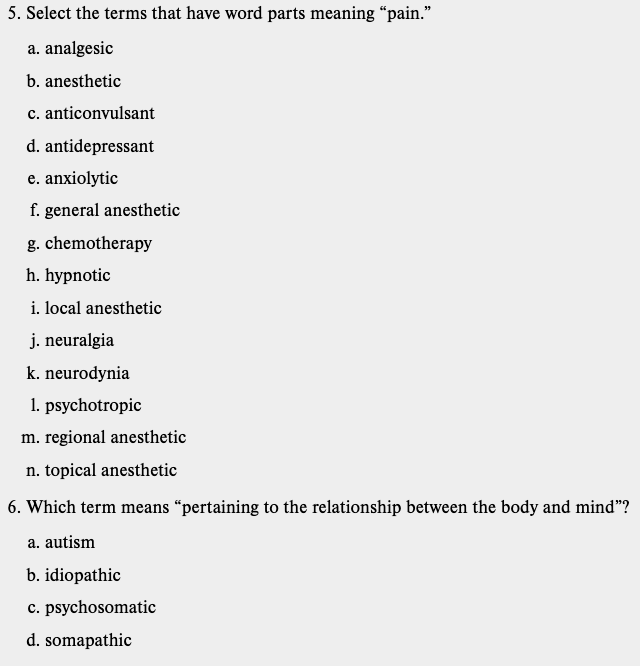
Chapter 5 Review Exercises: Exercise 11.
...
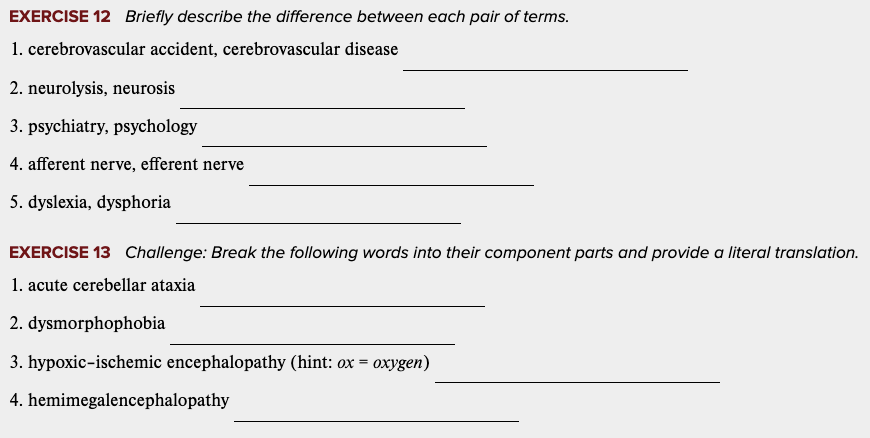
Chapter 5 Review Exercises: Exercise 12, 13.
...
Select all that apply
Which of the following is a unified collection of cells known as the central nervous system?
Multiple select question.
- Spine
- Neurons
- Nerves
- Brain
- Spine
- Brain
Select all that apply
Which of the following make up the central nervous system?
Multiple select question.
- Heart
- Spinal cord
- Gall Bladder
- Brain
- Spinal cord
- Brain
Which of the following terms relates to the brain?
Multiple choice question.
- Enteropathy
- Cardiology
- Endocrinology
- Encephalitis
Encephalitis
The term "Little brain" means ______.
cerebellum
Which of the following is a commonly used meaning for a brain operation that changes one's personality?
Multiple choice question.
- Hysterectomy
- Hematoma
- Lobotomy
- Debridement
Lobotomy
Select all that apply
The two parts of the nervous system are the ______
Multiple select question.
- central nervous system
- electric nervous system
- peripheral nervous system
- manual nervous system
- central nervous system
- peripheral nervous system
What is the root for skull?
Multiple choice question.
- Mening/o
- Crani/o
- Dur/o
- Cephal/o
Crani/o
How many hemispheres does the brain have?
Multiple choice question.
- Four
- Two
- Six
- One
Two
The term that means half the head that comes from the word hemicranias is called ______.
migraine
Select all that apply
Which of the following roots mean "brain"?
Multiple select question.
- Spin/o
- Cerebr/o
- Lob/o
- Encephal/o
- Cerebr/o
- Encephal/o
The definition of the root "dur/o" is ______.
Multiple choice question.
- nerve
- meninges
- dura
- brain
dura
Select all that apply
Which of the following terms relate to the cerebellum?
Multiple select question.
- Cerebellitis
- Cranial
- Cerebellar
- Craniomalacia
- Cerebellitis
- Cerebellar
Select all that apply
Which of the following is the Greek word meaning neuron?
Multiple select question.
- Hard
- String
- Mater
- Tendon
- String
- Tendon
Lobes are smaller subdivisions of an ______.
organ
In the Roman translation, the term ganglion means ______.
knot
The root for head is called ______.
cephal/o, crani/o, cephal, or cephalo
Which of the following is the Greek meaning for the root myel/o?
Multiple choice question.
- The innermost part
- Outer layer
- Inner layer
- The outermost part
The innermost part
The root for "skull" is ______.
Multiple choice question.
- dur/o
- crani/o
- meningi/o
- mening/o
crani/o
Select all that apply
The meaning of the root esthesi/o is ______.
Multiple select question.
- speech
- sensation
- feeling
- mind
- sensation
- feeling
The root for dura is ______.
Multiple choice question.
- durao/o
- du/o
- dur/o
- dura/o
dur/o
The root for "speech" is ______.
Multiple choice question.
- psych/o
- phas/o
- esthesi/o
- phren/o
phas/o
The definition of the root neur/o is ______.
Multiple choice question.
- nerve root
- nerve
- nerve ending
- nerve bundle
nerve
Select all that apply
The root for "mind" is ______.
Multiple select question.
- esthesi/o
- phren/o
- psych/o
- phas/o
- phren/o
- psych/o
The definition of the root gangli/o is ______.
Multiple choice question.
- nerve bundle
- bone marrow
- nerve
- spinal cord
nerve bundle
Select all that apply
Some roots for sleep are ______.
Multiple select question.
- somn/o
- gnosi/o
- hypn/o
- phren/o
- somn/o
- hypn/o
Ex. There is somn/i as well.
The root for "spinal cord" is ______.
Multiple choice question.
- neur/o
- encephal/o
- gangli/o
- myel/o
myel/o
The definition of gnosi/o is ______.
Multiple choice question.
- feeling
- sensation
- speech
- know
know
The root for "feeling or sensation" is ______.
Multiple choice question.
- phas/o
- psych/o
- esthesi/o
- phren/o
esthesi/o
The definition of "excessive desire" is ______.
-mania
The definition of the root phas/o is ______.
Multiple choice question.
- mind
- vision
- speech
- sensation
speech
Select all that apply
The definition of -phobia is excessive ______.
Multiple select question.
- sensitivity
- desire
- fear
- sleep
- sensitivity
- fear
The definition of "psych/o" is ______.
Multiple choice question.
- speech
- sensation
- feeling
- mind
mind
The suffix "-paresis" means slight or partial ______.
Multiple choice question.
- paralysis
- tension
- movement
- pressure
paralysis
Select all that apply
Roots for sleep are ______.
Multiple select question.
- somn/i
- hypn/o
- somn/o
- esthesi/o
- somn/i
- hypn/o
- somn/o
The root meaning "muscle tone, tension, or pressure" is ______.
Multiple choice question.
- neur/o
- tax/o
- phas/o
- ton/o
ton/o
The root for "know" is ______.
Multiple choice question.
- hypn/o
- esthesi/o
- gnosi/o
- somn/i
gnosi/o
Select all that apply
The medical term root "tax/o" means ______.
Multiple select question.
- arrangement
- motion
- order
- coordination
- arrangement
- order
- coordination
Which of the following terms characterize bipolar depression's intense mood swings?
Multiple choice question.
- Bipolar
- Manic
- Phobic
- Neurotic
Manic
Select all that apply
The suffixes that relate to paralysis are ______.
Multiple select question.
- -asthenia
- -plegia
- -algia
- -paresis
- -plegia
- -paresis
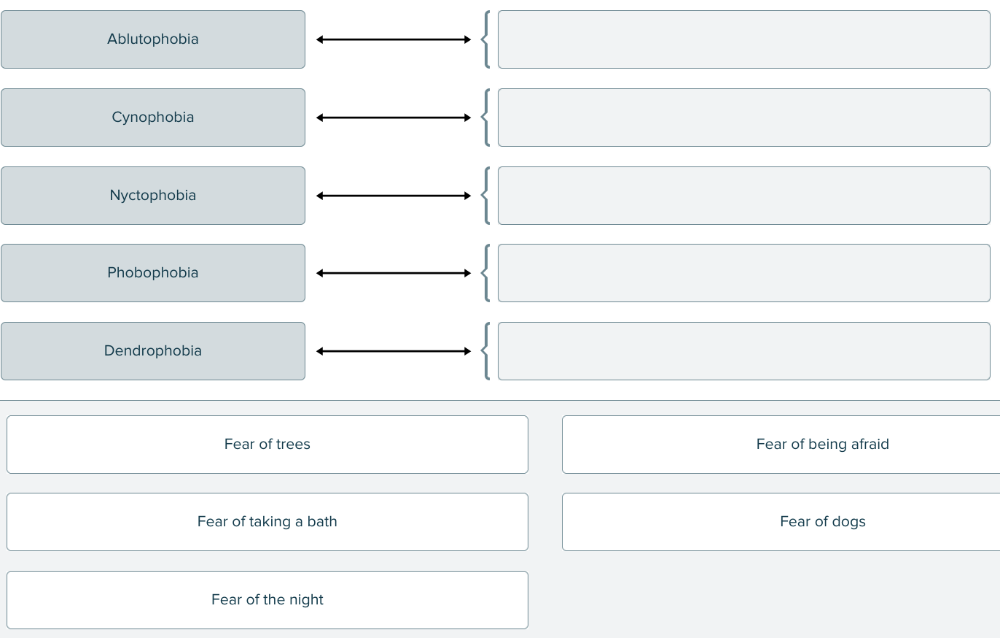
Match the condition to the definition related to the suffix "phobia."
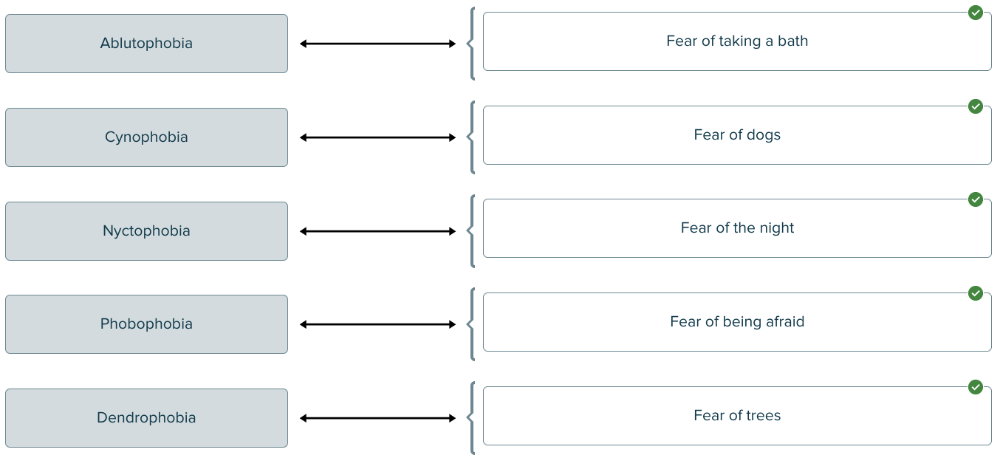
Select all that apply
Which of the following comes from the Greek term "paresis"?
Multiple select question.
- To strike
- To gather
- To let go
- To slacken
- To let go
- To slacken
The definition of the suffix "-asthenia" is ______.
Multiple choice question.
- enlargement.
- weakness.
- coordination.
- tension.
weakness.
Select all that apply
The root "ton/o" means ______.
Multiple select question.
- muscle tone
- tension
- pressure
- weakness
- muscle tone
- tension
- pressure
The most common psychiatric issue that providers treat is ______.
emotions, emotion, depression, or anxiety
Which of the following is the practice of removing and displaying the head and skin of a dead animal?
Multiple choice question.
- Taxidermy
- Dermy
- Kinesiology
- Asthenia
Taxidermy
A loss or decline in mental function is ______.
Multiple choice question.
aphasia
ataxia
myospasm
dementia
dementia
The Greek meaning of plegia is ______.
- Multiple choice question.
- to follow
- paralysis
- to strike
- weakness
to strike
Which of the following terms would be associated with the suffix phobia?
Multiple choice question.
- Excessive fear or sensitivity
- Depression
- Phobia
- Excessive manic behavior
Excessive fear or sensitivity
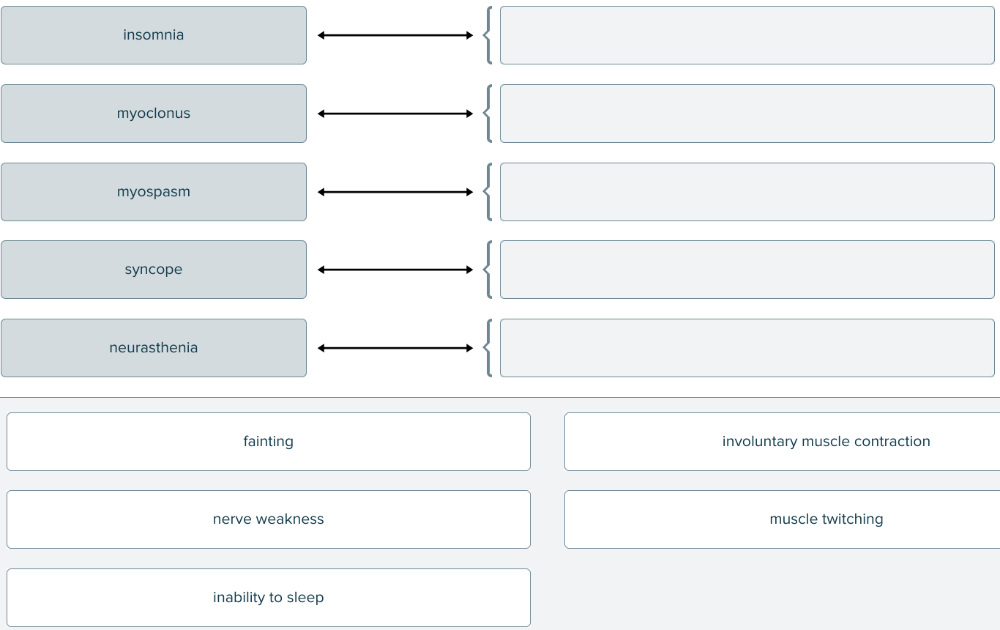
Match each impairment term with the word analysis.
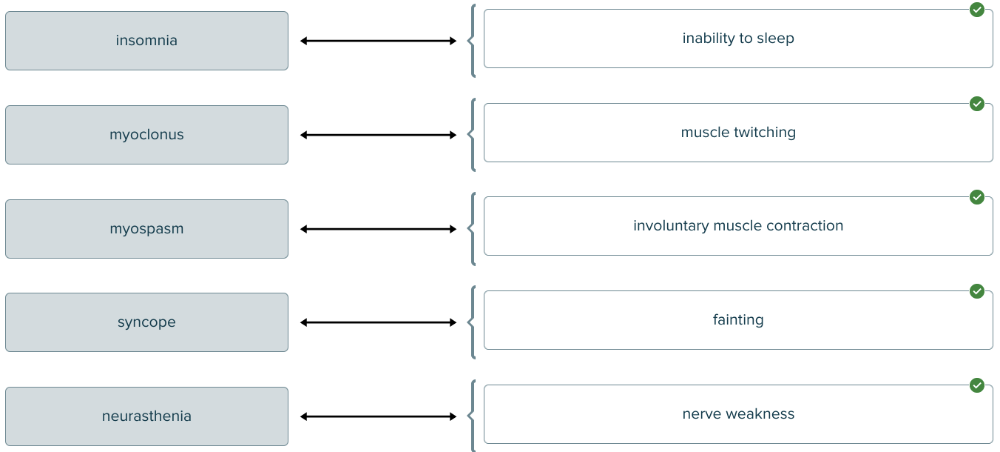
The suffix meaning "weakness" is ______.
Multiple choice question.
- -asthenia
- -dynia
- -paresis
- -plegia
-asthenia
Select all that apply
Terms meaning head pain are ______.
Multiple select question.
- cephalodynia
- encephalitis
- cephalalgia
- encephaloma
- cephalodynia
- cephalalgia
Which of the following is defined by a sudden state of confusion and abrupt loss of awareness of the surroundings?
Multiple choice question.
- Delirium
- Dementia
- Dyslexia
- Insomnia
Delirium
The condition characterized by partial paralysis on half the body is ______.
hemiparesis
The inability to speak is ______.
Multiple choice question.
- dystonia
- ataxia
- aphasia
- myoclonus
aphasia
Increased sensation is ______.
Multiple choice question.
- pseudesthesia
- hyperesthesia
- synesthesia
- causalgia
hyperesthesia
Select all that apply
The suffixes that relate to paralysis are ______.
Multiple select question.
- -algia
- -asthenia
- -paresis
- -plegia
- -paresis
- -plegia
The condition for fear of heights is ______.
acrophobia
The inability to sleep is ______.
Multiple choice question.
- delirium
- dyskinesia
- insomnia
- ataxia
insomnia
Which of the following is when electrodes are placed on the skull and the brain for monitoring?
Multiple choice question.
- EEG
- CT
- MRA
- MRI
EEG
Select all that apply
Terms meaning "nerve pain" are ______.
Multiple select question.
- cephalodynia
- neuralgia
- cephalalgia
- neurodynia
- neuralgia
- neurodynia
A procedure used to examine the electrical activity of the brain is ______.
Multiple choice question.
- cerebral angiography
- echoencephalography
- myelogram
- electroencephalography
electroencephalography
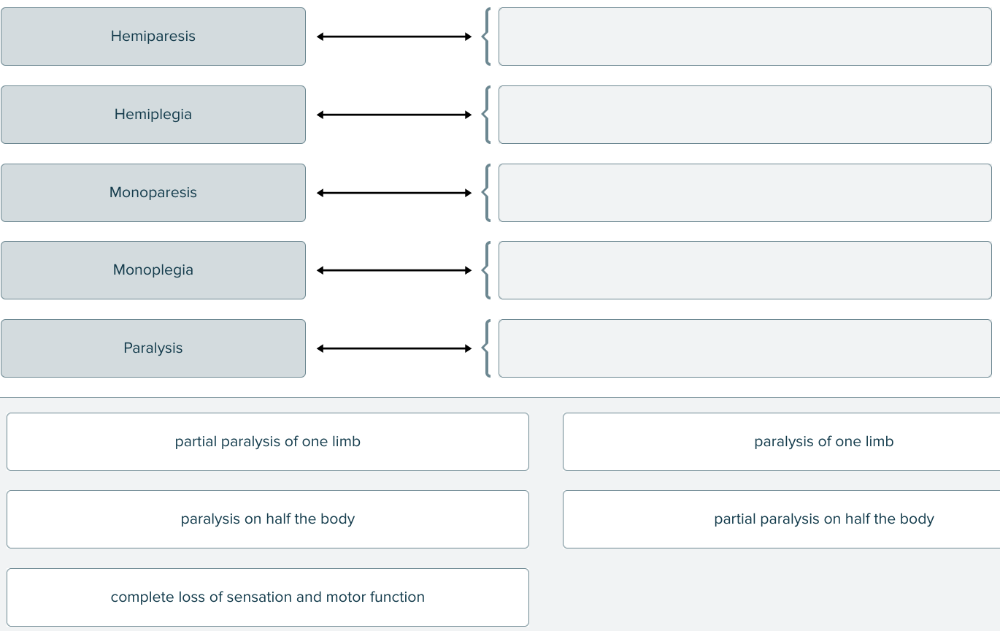
Match the paralysis term to the definition.
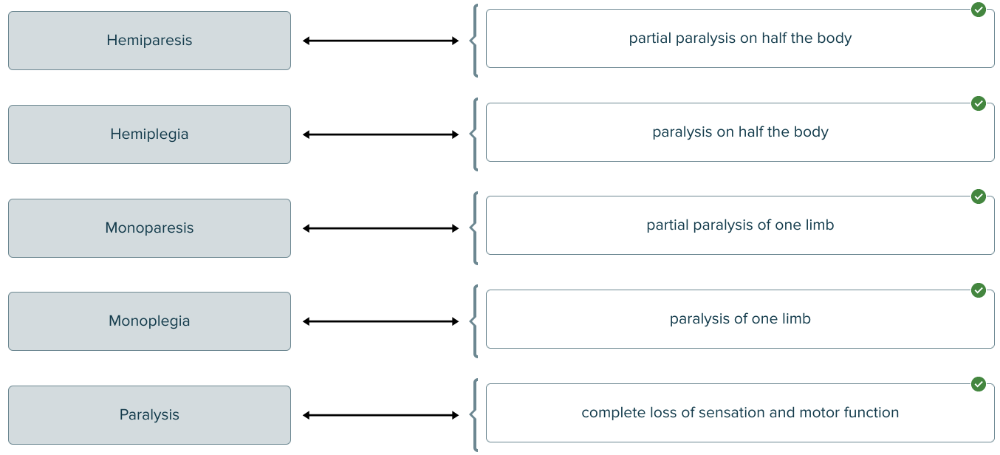
An image of the spinal cord is a ______.
myelogram
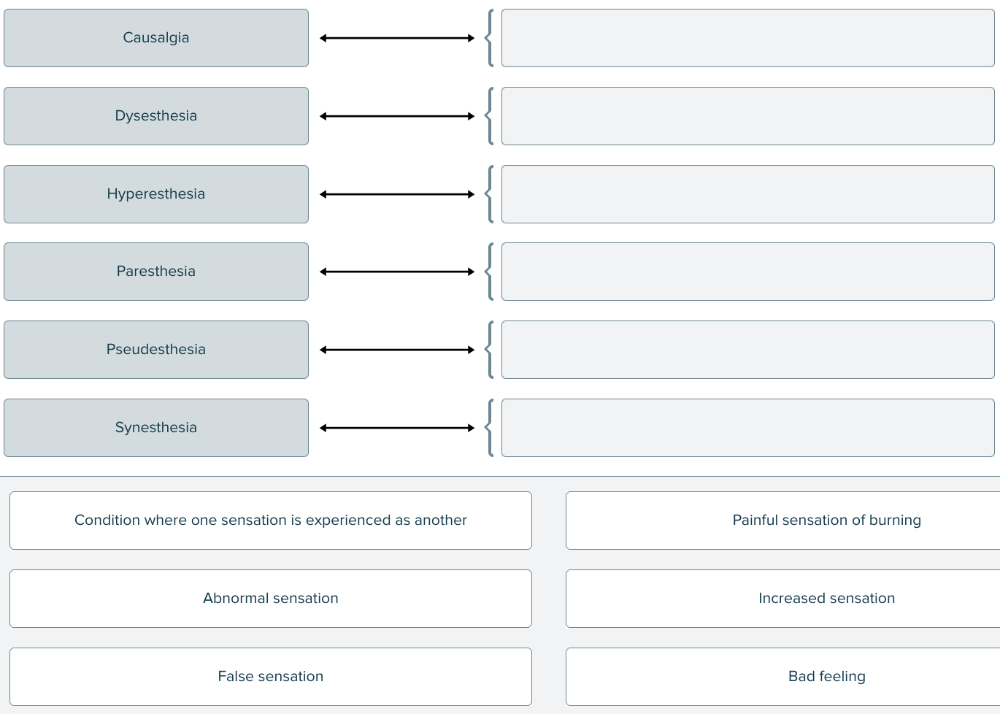
Match each sensation/feeling term with its definition.
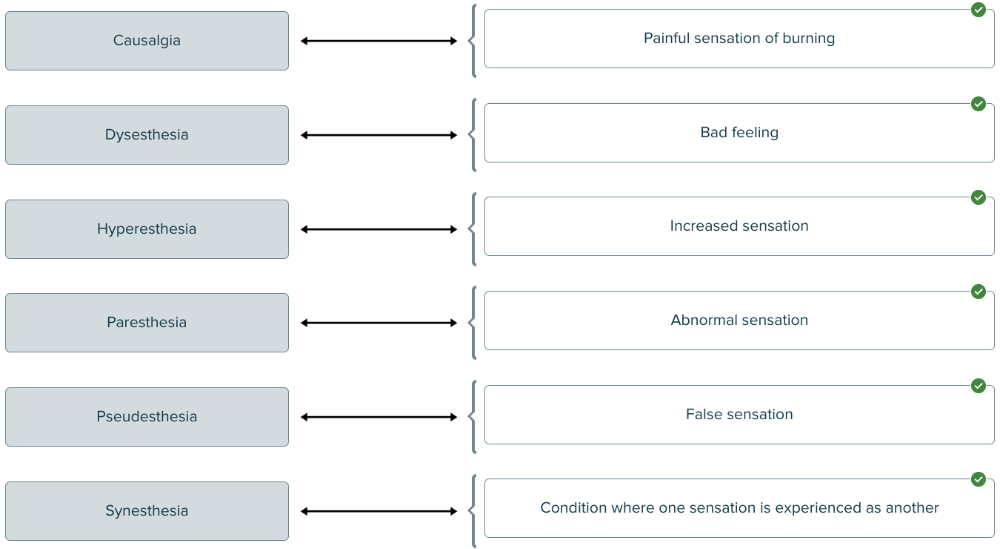
Which of the following terms is associated with duritis?
Multiple choice question.
- Inflammation of the cerebellum
- Hematoma
- Inflammation of the dura
- Tumor-like mass
Inflammation of the dura
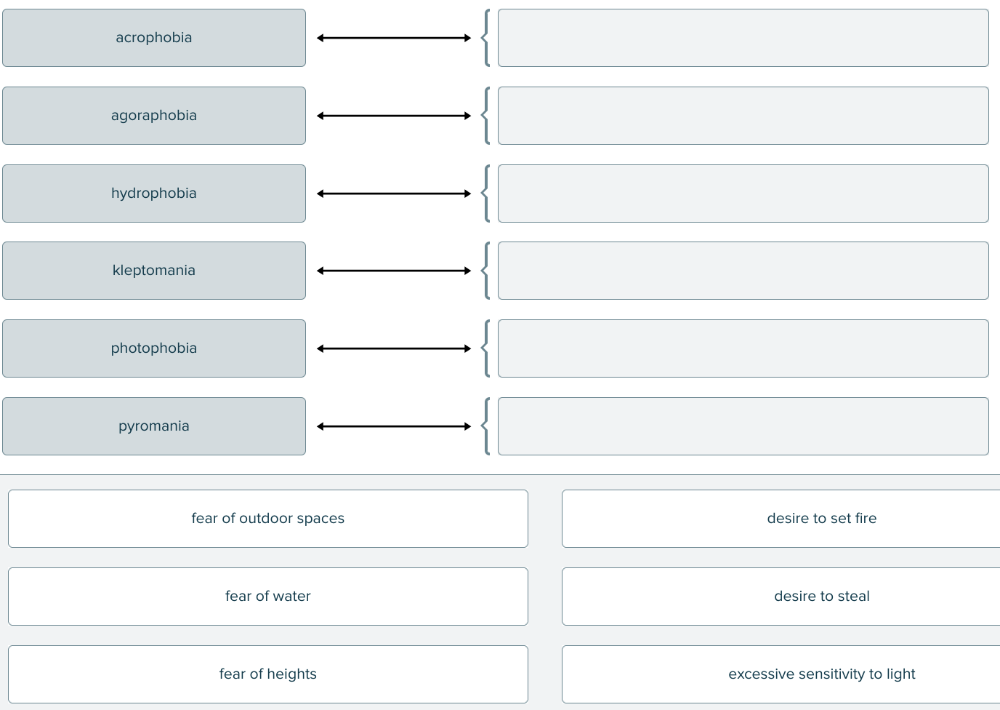
Match each phobia/mania term with its definition.
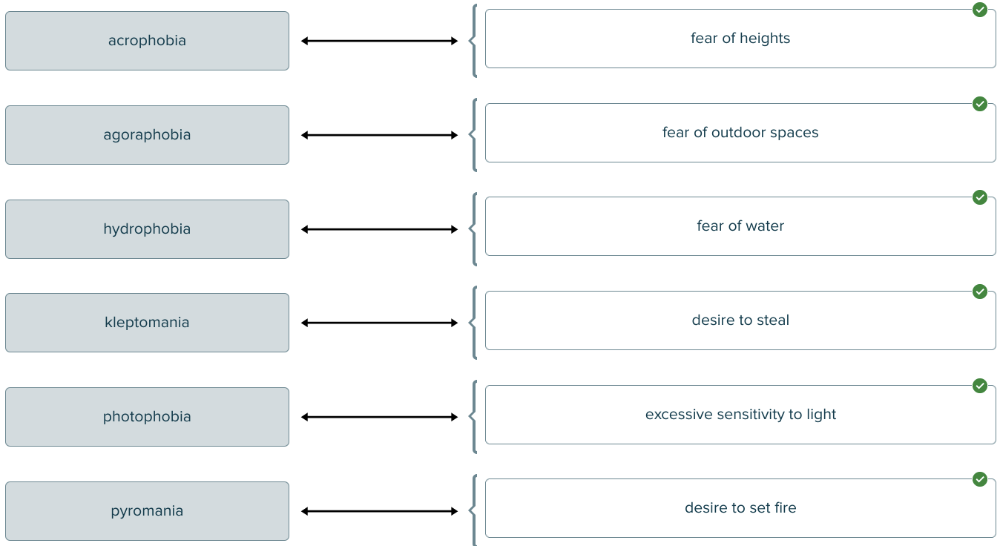
A condition of having an abnormally large head is ______.
Multiple choice question.
- macrocephaly
- microcephaly
- cephalodynia
- encephalitis
macrocephaly
The most common lab work done in the evaluation of the neurologic system focuses on testing a patient’s ______ fluid.
cerebrospinal
Select all that apply
Which of the following is/are terms associated with an EEG?
Multiple select question.
- Encephalo
- Graphy
- Echo
- Electro
- Encephalo
- Graphy
- Electro
An increase in muscle movement or activity is ______.
Multiple choice question.
- apathy
- hyperkinesia
- nystagmus
- neurasthenia
hyperkinesia
An imaging technique that produces an image of the brain using sound waves sent through the skull is ______.
Multiple choice question.
- lumbar puncture
- cerebral angiography
- transcranial doppler sonography
- magnetic resonance angiography
transcranial doppler sonography
Nerve weakness is defined as ______.
neurasthenia
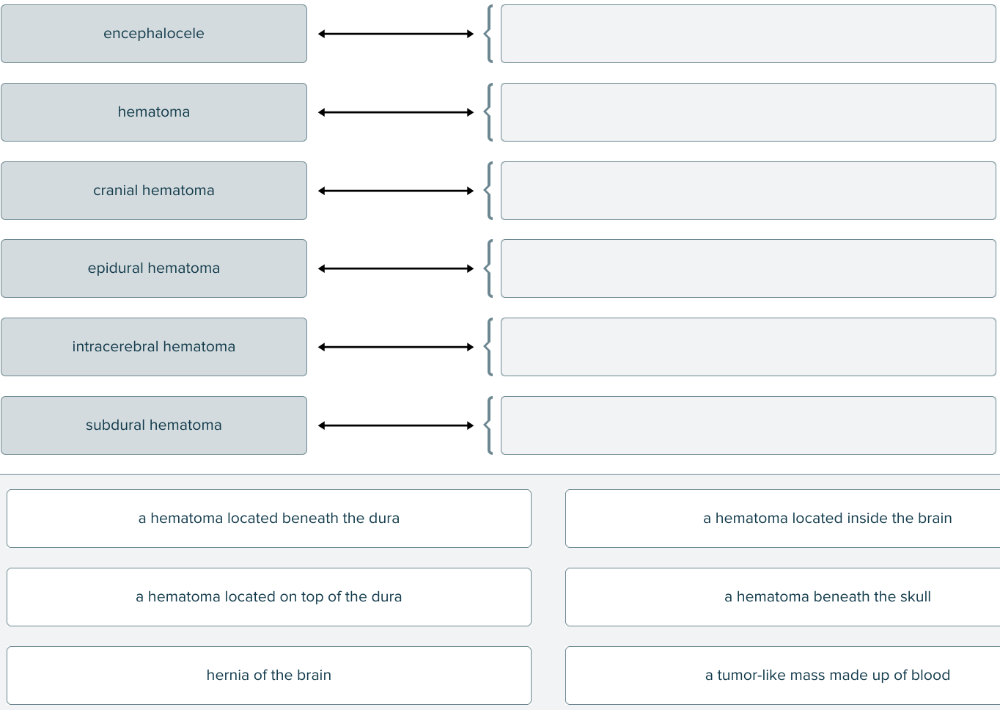
Match each structure term with its definition.
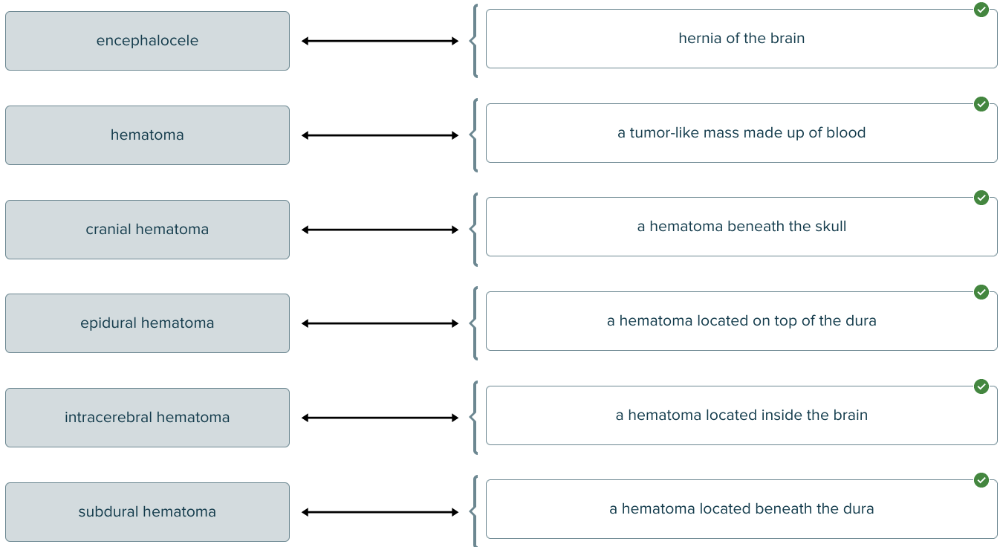
Select all that apply
Nerves that carry impulses away from the CNS are ______.
Multiple select question.
- sensory
- efferent
- motor
- afferent
- efferent
- motor
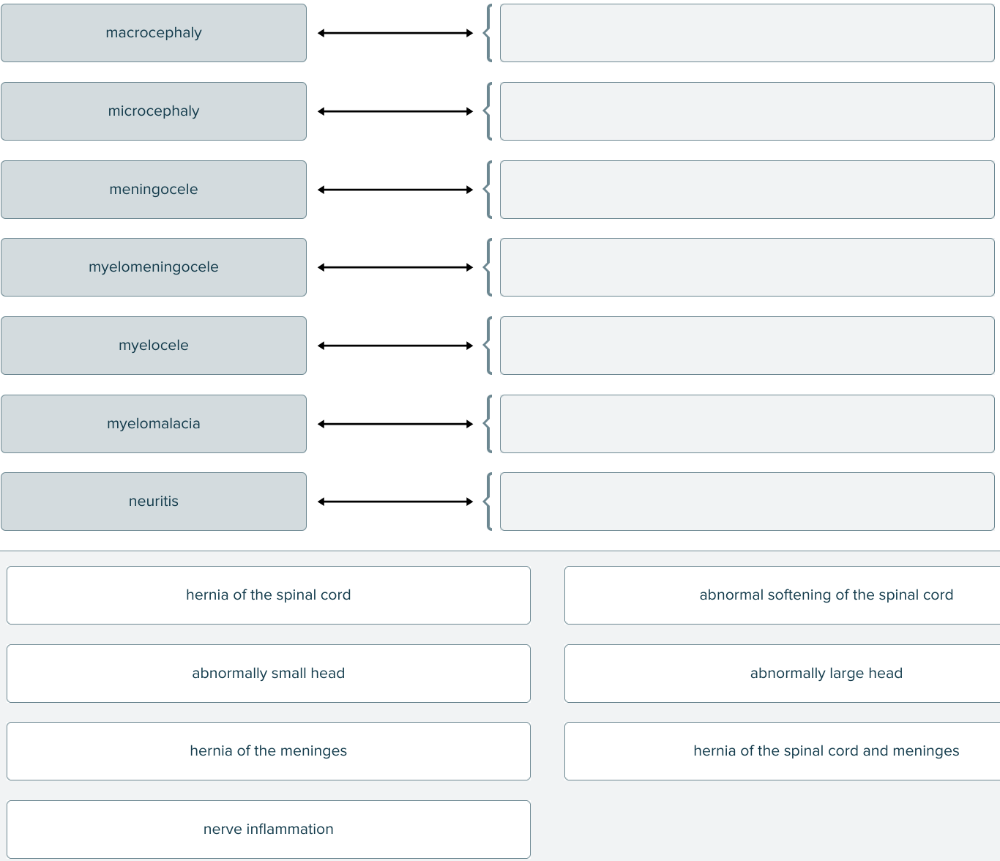
Match each term associated with structure with its definition.
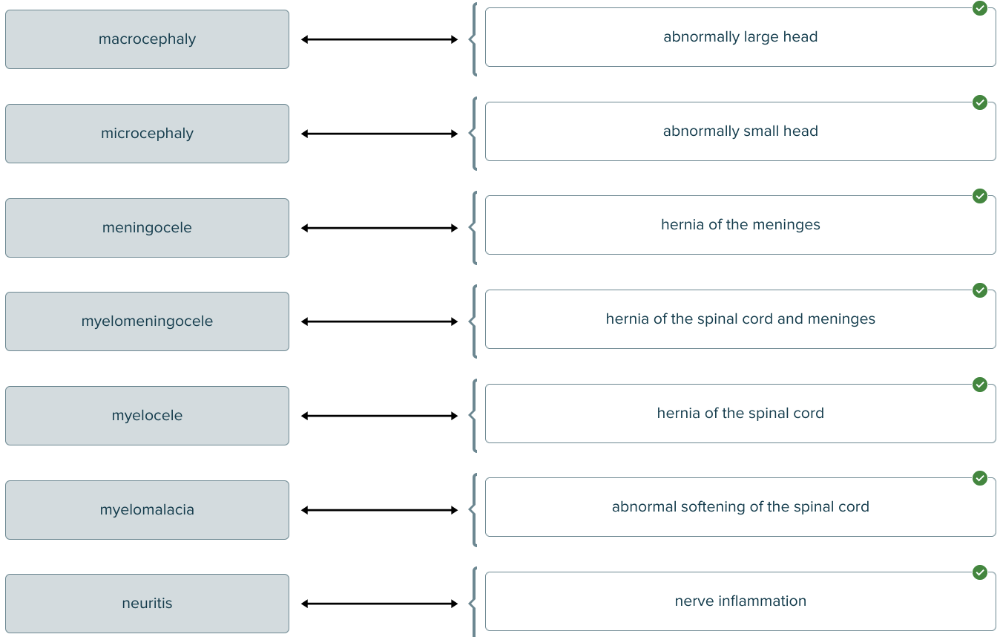
Select all that apply
Which of the following is the root for the term idiopathic?
Multiple select question.
- post
- ic
- path
- idio
- path
- idio
Ex.
- post
Reason: root for postictal
- ic
Reason: suffix
Which of the following is when electrodes are placed on the skull and the brain for monitoring?
Multiple choice question.
- MRA
- CT
- EEG
- MRI
EEG
Which of the following is defined as a premature closure of the bone/s?
Multiple choice question.
- Craniosynostosis
- Neurogenic
- Psychogenic
- Neuropathy
Craniosynostosis
The inability to comprehend is ______.
Multiple choice question.
- nystagmus
- apathy
- prosopagnosia
- agnosia
agnosia
Which of the following is a stroke when blood loss is caused by a blockage?
Multiple choice question.
- Hemorrhagic Stroke
- Cerebral Embolism
- Transient Ischemic Attack
- Ischemic Stroke
Ischemic Stroke
Involuntary back and forth eye movement is ______.
Multiple choice question.
- nystagmus
- prosopagnosia
- hyperkinesia
- neurasthenia
nystagmus
The blockage of a blood vessel on the brain caused by a blood clot is called a cerebral ______.
thrombosis
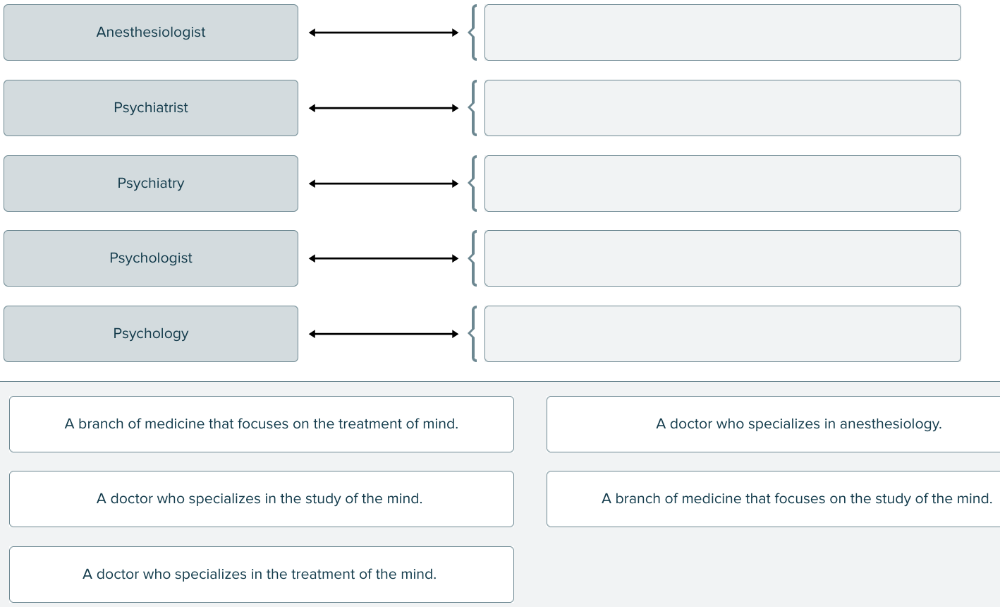
Drag and drop the definitions against the corresponding terms related to a specialty or specialist.
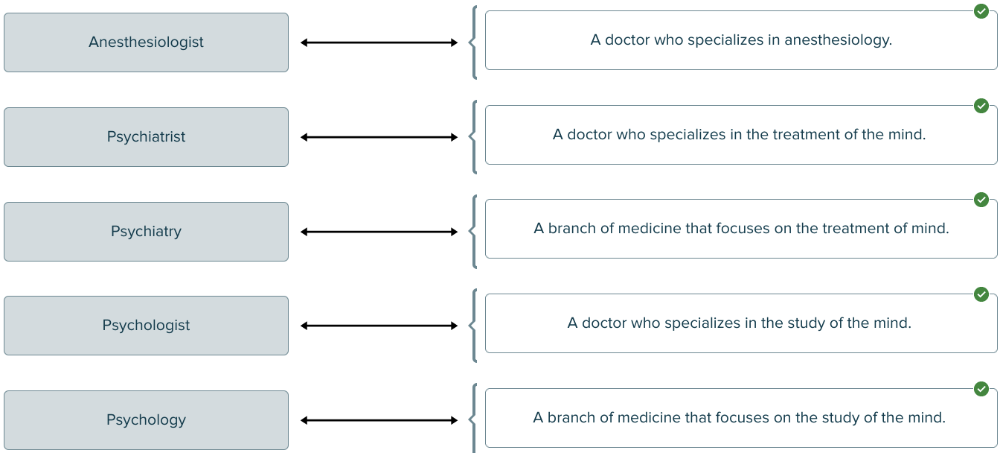
Abnormal accumulation of spinal fluid in the brain is ______.
Multiple choice question.
- ganglioma
- craniostenosis
- encephalitis
- hydrocephaly
hydrocephaly
Which of the following is defined as having no known origin or cause?
Multiple choice question.
- Clonic
- Preictal
- Idiopathic
- Tonic
Idiopathic
Select all that apply
Select the central nervous system tumors.
Multiple select question.
- Astrocytoma
- Glioblastomas
- Craniosynostosis
- Medulloblastomas
- Astrocytoma
- Glioblastomas
- Medulloblastomas
Which of the following is defined as an accident involving the blood vessels of the brain?
Multiple choice question.
- Embolism
- Stroke
- CVA
- TIA
CVA
(Cerebrovascular Accident)
Disease of the brain is ______.
Multiple choice question.
- craniostenosis
- gangliitis
- hydrocele
- encephalopathy
encephalopathy
Which of the following is the definition of cerebral thrombosis?
Multiple choice question.
- Blockage of the blood vessel in the brain caused by blood clots
- Abnormal softening of the skull
- Hardening of an artery in the brain caused by a buildup
- Widening or abnormal dilation of a blood vessel in the brain
Blockage of the blood vessel in the brain caused by blood clots
Ex.
- Abnormal softening of the skull
Reason: This is craniomalacia
- Hardening of an artery in the brain caused by a buildup
Reason: This is atherosclerosis
- Widening or abnormal dilation of a blood vessel in the brain
Reason: This is aneurysm
Inflammation of the brain is is defined as ______.
encephalitis
Which of the following is the term for abnormal softening of the skull.
Multiple choice question.
- Craniostenosis
- Craniosclerosis
- Craniomalacia
- Craniosynostosis
Craniomalacia
Which of the following is inflammation of the spinal cord?
Multiple choice question.
- Encephalitis
- Cerebellitis
- Myelodysplasia
- Myelitis
Myelitis
A positive emotional state is called ______.
euphoria
Select all that apply
Which of the following are common psychogenic problems?
Multiple select question.
- Depression
- Weight loss
- Anxiety
- Lack of sleep
Depression
Anxiety
Select all that apply
Which of the following conditions are treated by psychiatric drugs?
Multiple select question.
- Depression
- Psychosis
- Diabetes
- Anxiety
- Depression
- Psychosis
- Anxiety
Which of the following is a tumor of the meninges?
Multiple choice question.
- Meningitis
- Glioblastoma
- Craniomalacia
- Meningioma
Meningioma
Which type of anesthesia is injected into a nerve, causing loss of sensation over a particular area?
Multiple choice question.
- Topical
- Regional
- Local
- Epidural
Regional
Ex.
- Local
Reason: This anesthetic does not affect consciousness.
- Epidural
Reason: This anesthetic is applied in the dural region of the spinal cord.
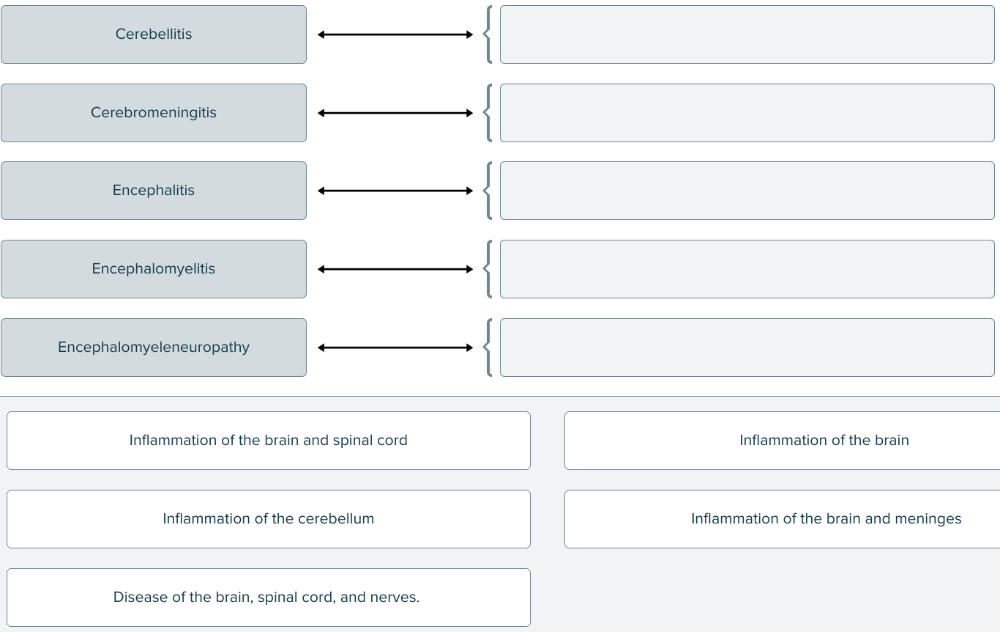
Match the term about diseases to its definition.
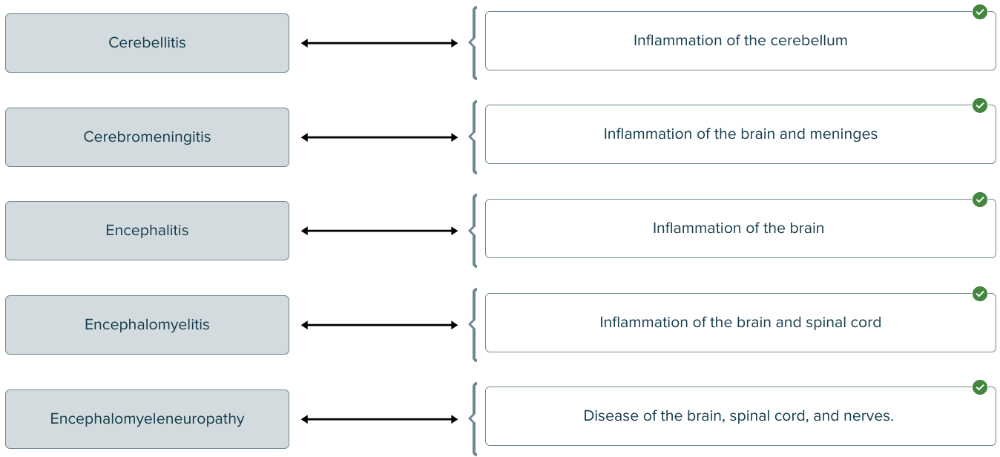
A drug that dissolves clots is ______.
Multiple choice question.
- thrombolytic
- analgesic
- antidepressant
- psychotropic
thrombolytic
Inflammation of the brain and meninges is ______.
Multiple choice question.
- poliomyelitis
- neuroarthropathy
- meningoencephalitis
- myelodysplasia
meningoencephalitis
The term that defines a removal of a lobe is called ______.
lobectomy
A negative emotional state is called ______.
Multiple choice question.
- autism
- euphoria
- dysphoria
- anorexia
dysphoria
An incision into a nerve is called ______.
Neurotomy
The type of surgery that can be used to treat problems of the nervous system's support structures is ______.
neurosurgery
The abbreviation for Lou Gehrig's disease is ______.
ALS
Which of the following is anesthetic that causes complete loss of consciousness?
Multiple choice question.
- Regional Anesthetic
- Topical Anesthetic
- General Anesthetic
- Local Anesthetic
General Anesthetic
A drug that relieves pain is called ______.
analgesic
Which type of surgical procedure is defined as removal of a piece of the skull?
Multiple choice question.
- Cerebrotomy
- Craniectomy
- Lobectomy
- Chemotherpay
Craniectomy
Which of the following is defined as an incision into a lobe?
Multiple choice question.
- Neurectomy
- Neuroplasty
- Neurotomy
- Lobotomy
Lobotomy
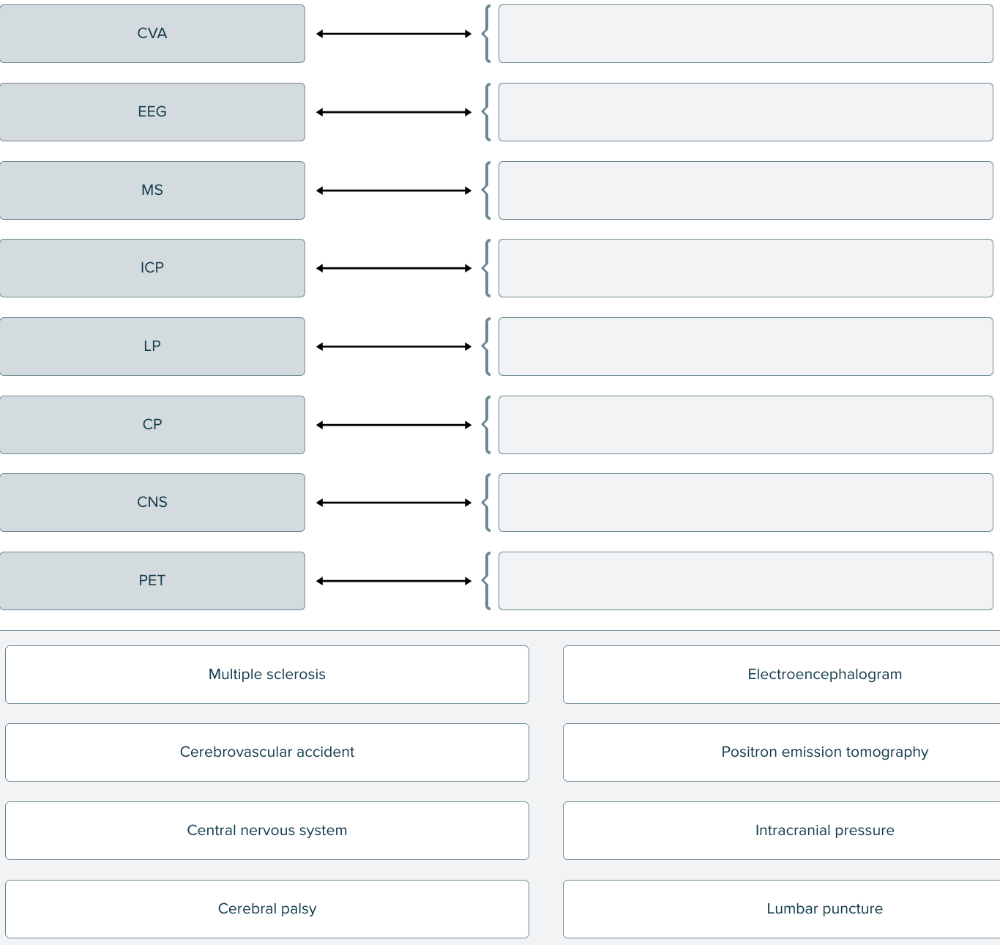
Match the central nervous system abbreviation to the definition.
